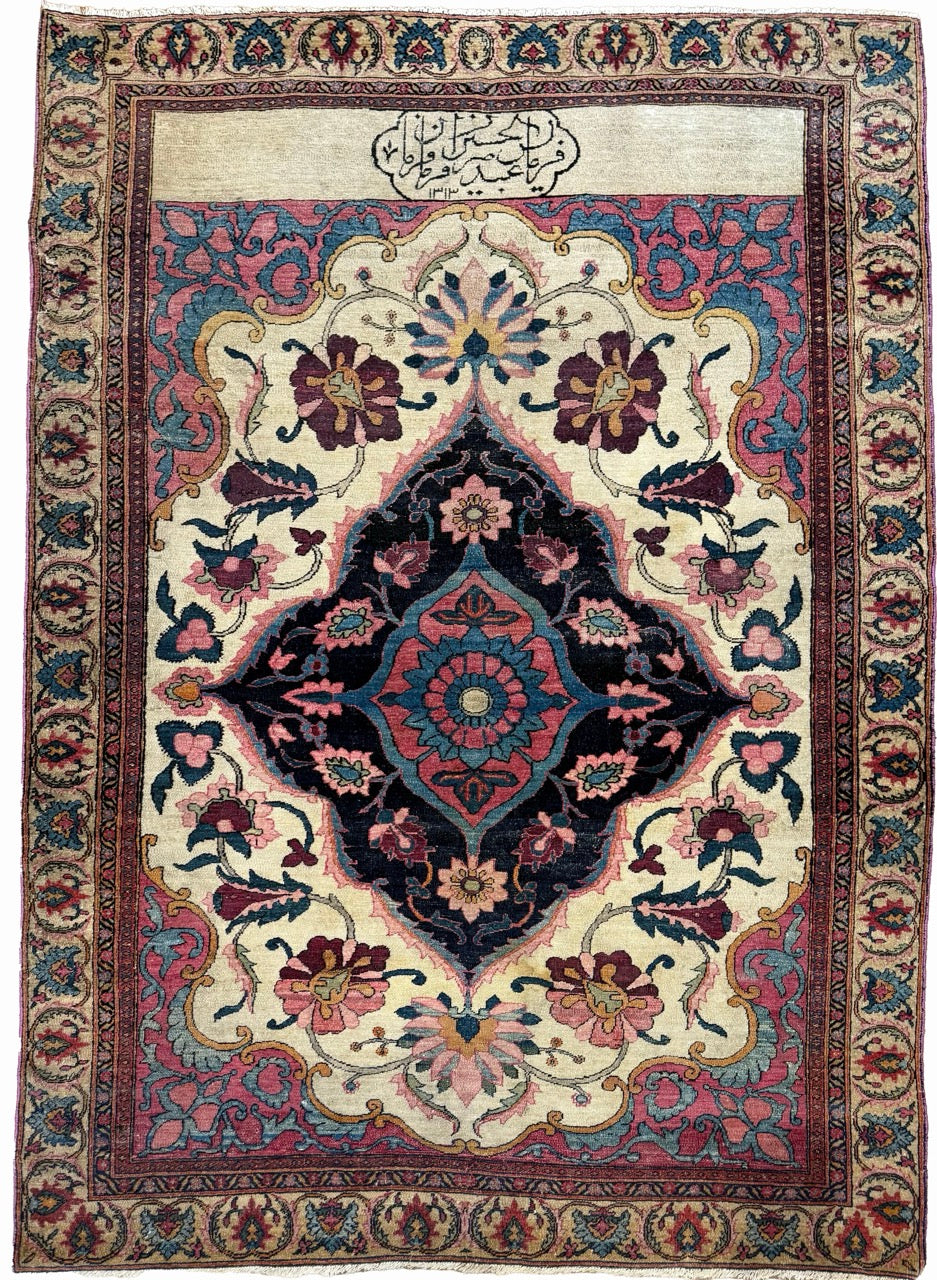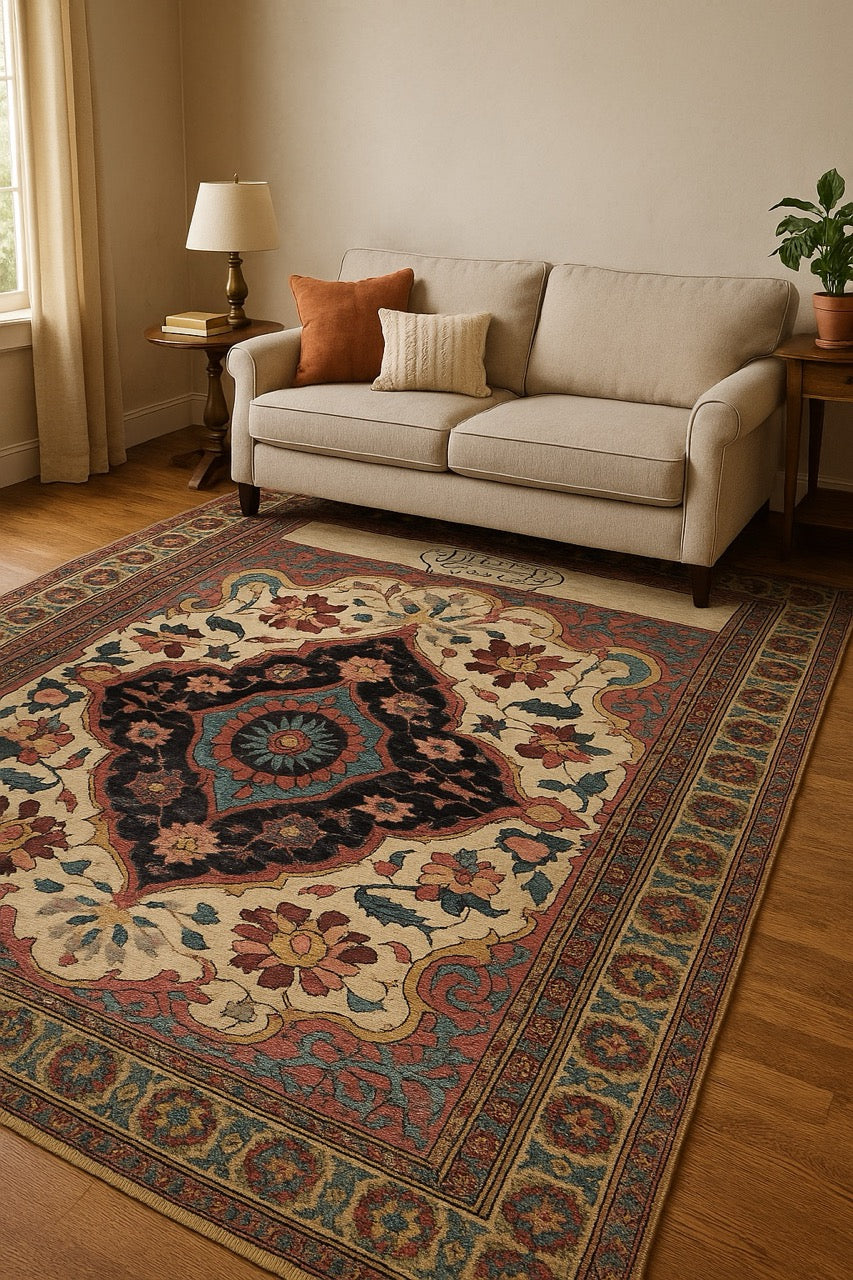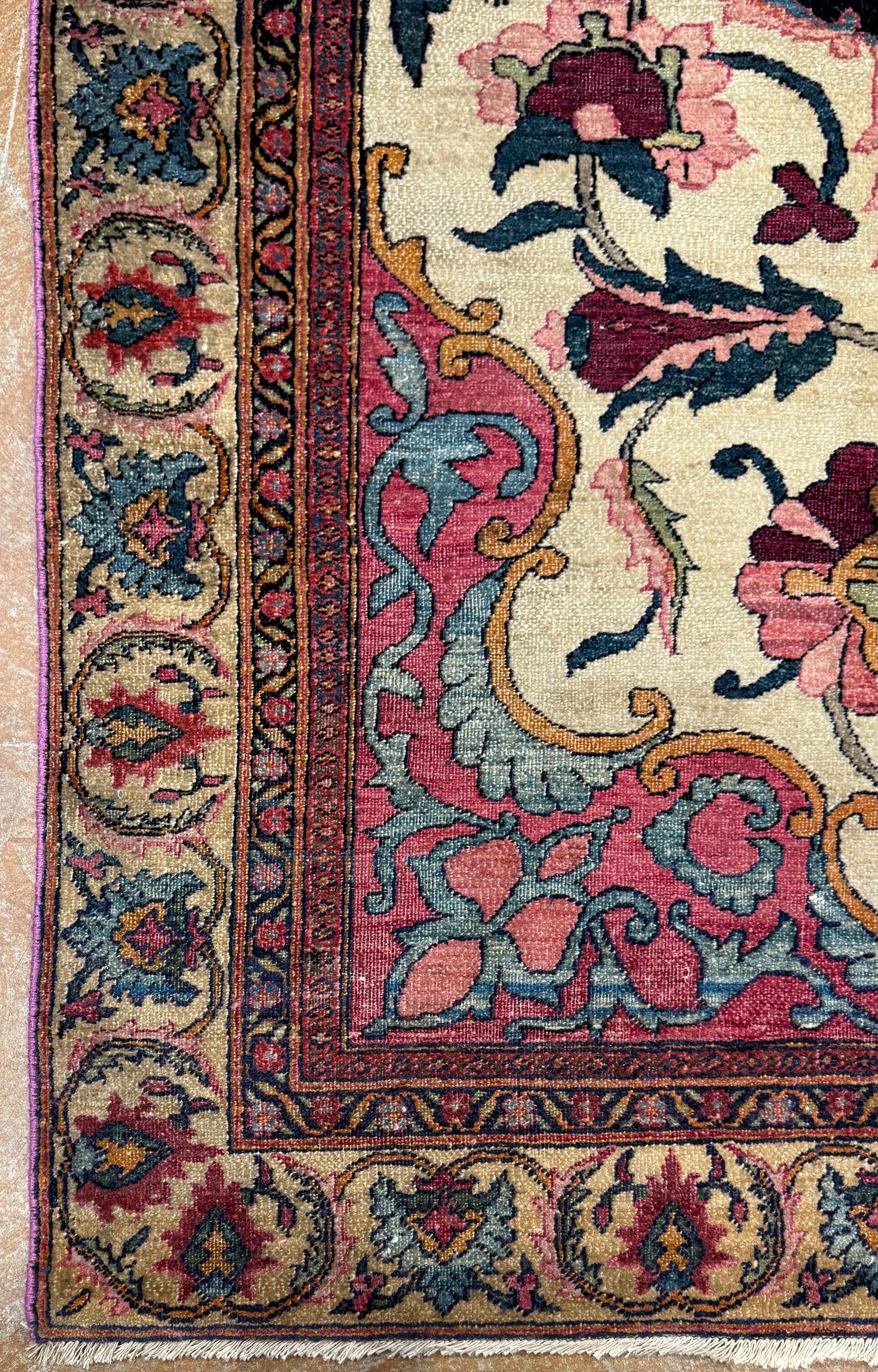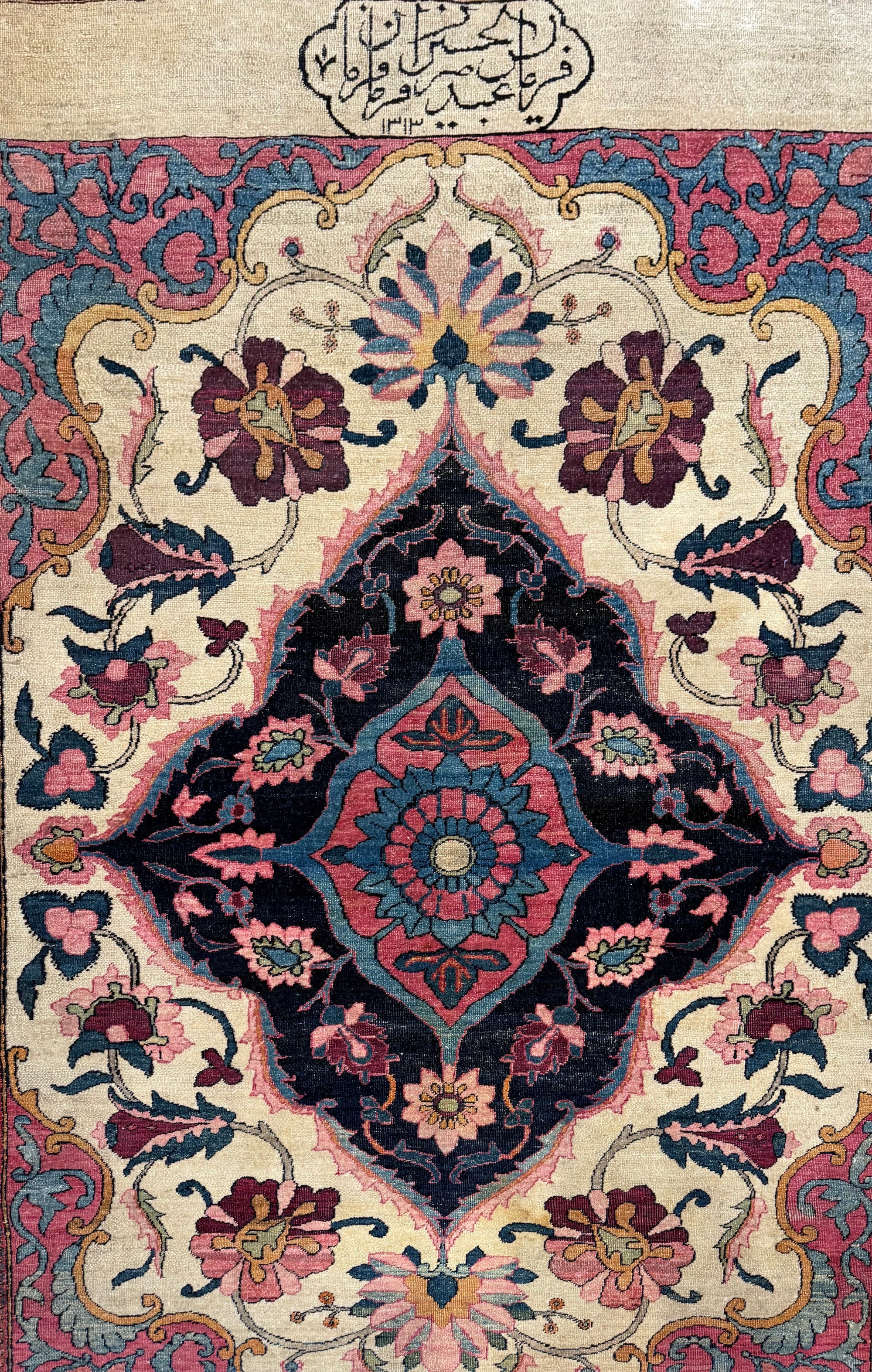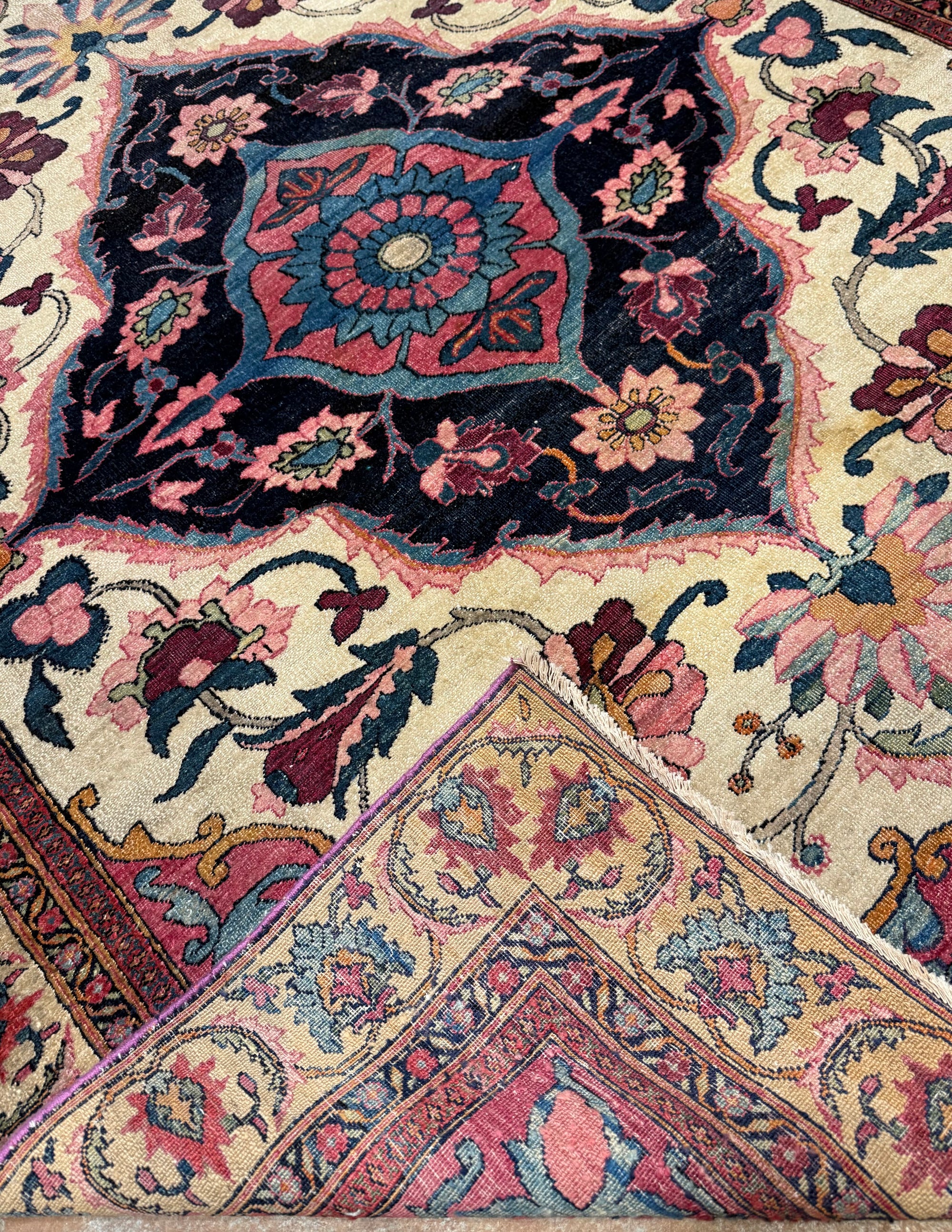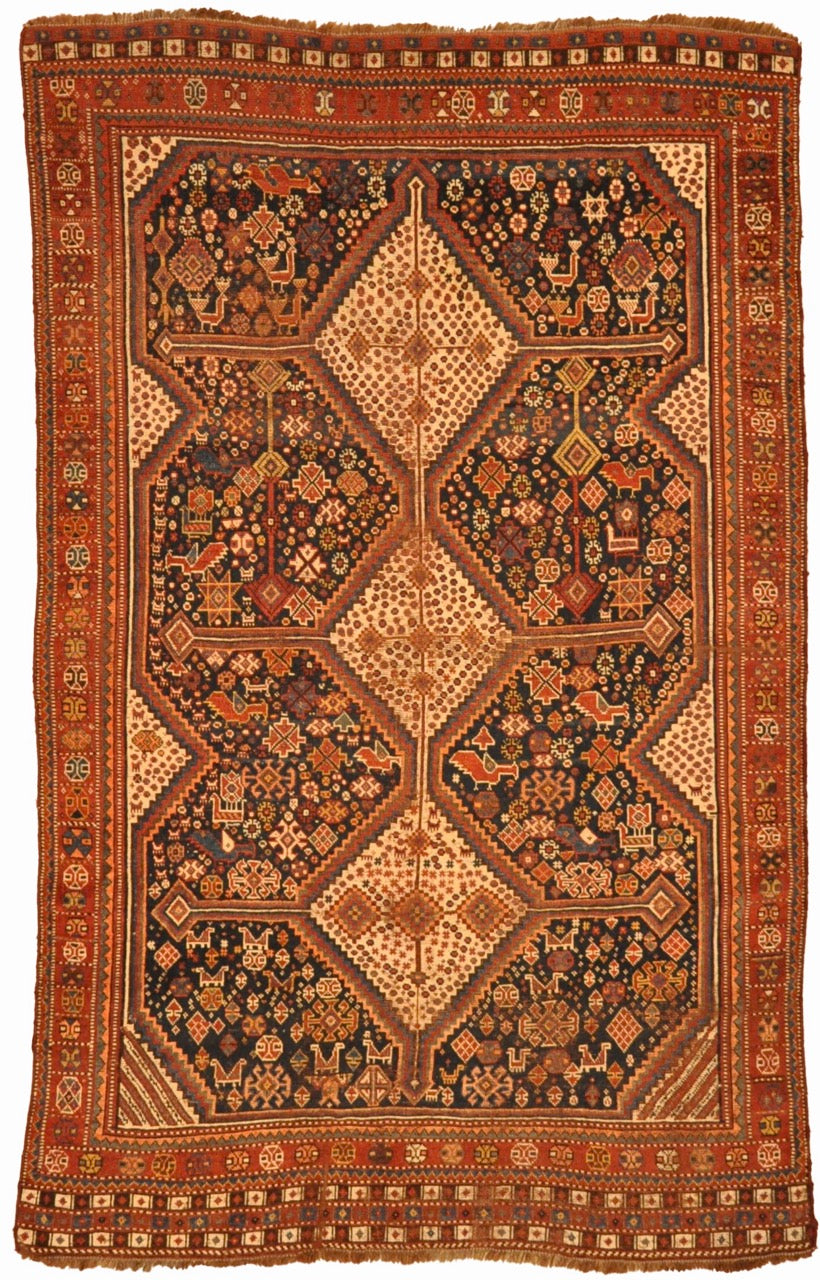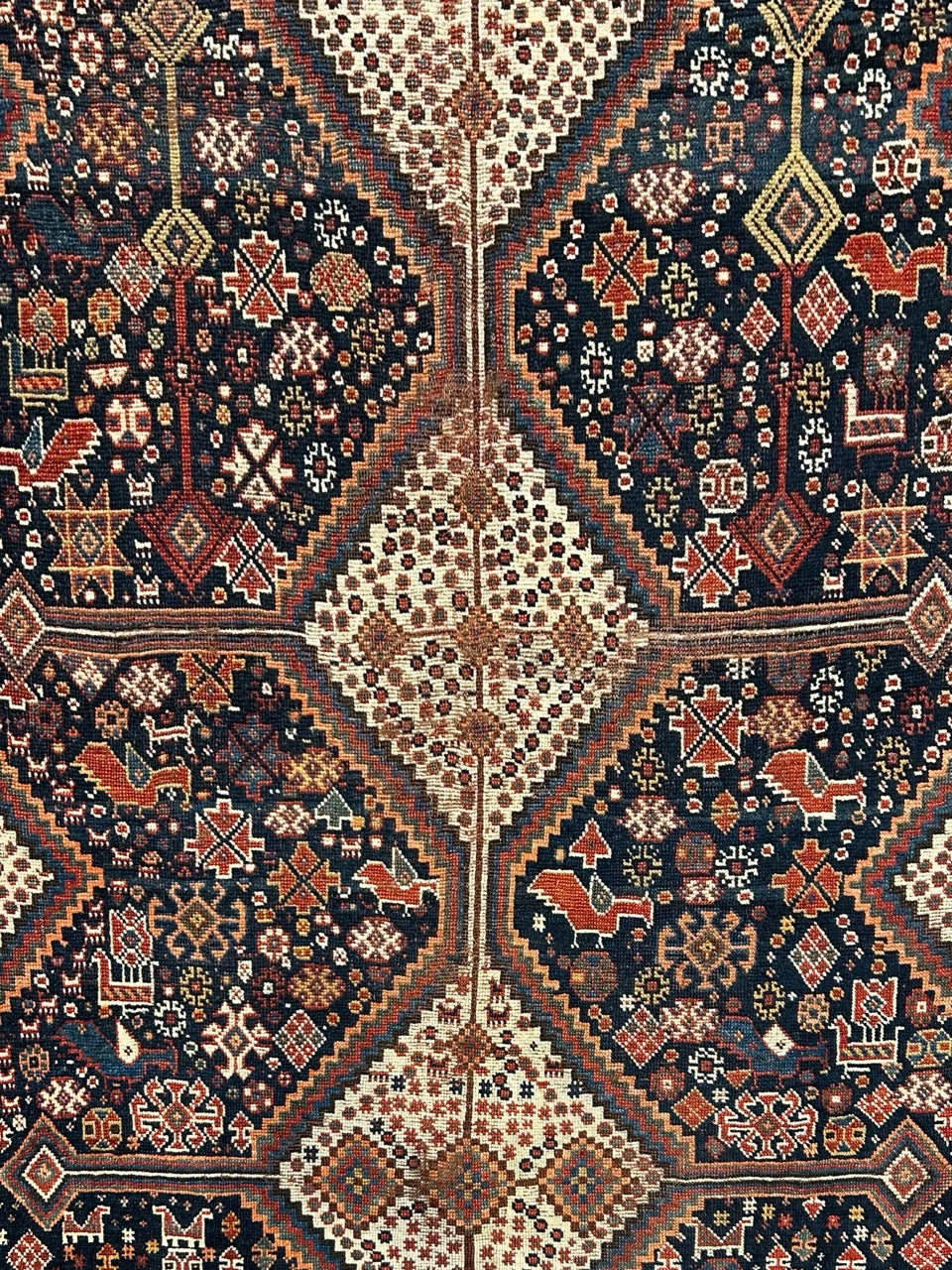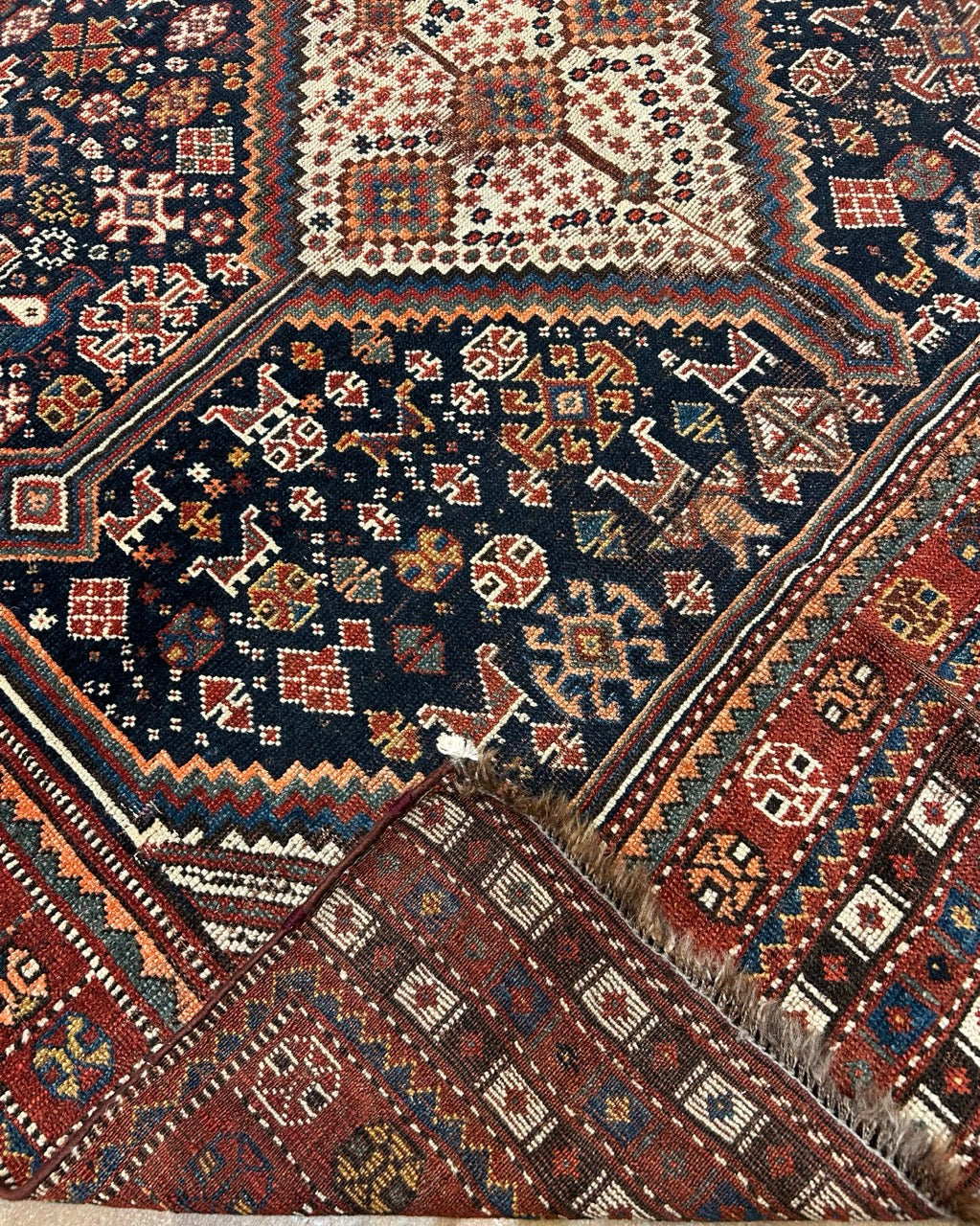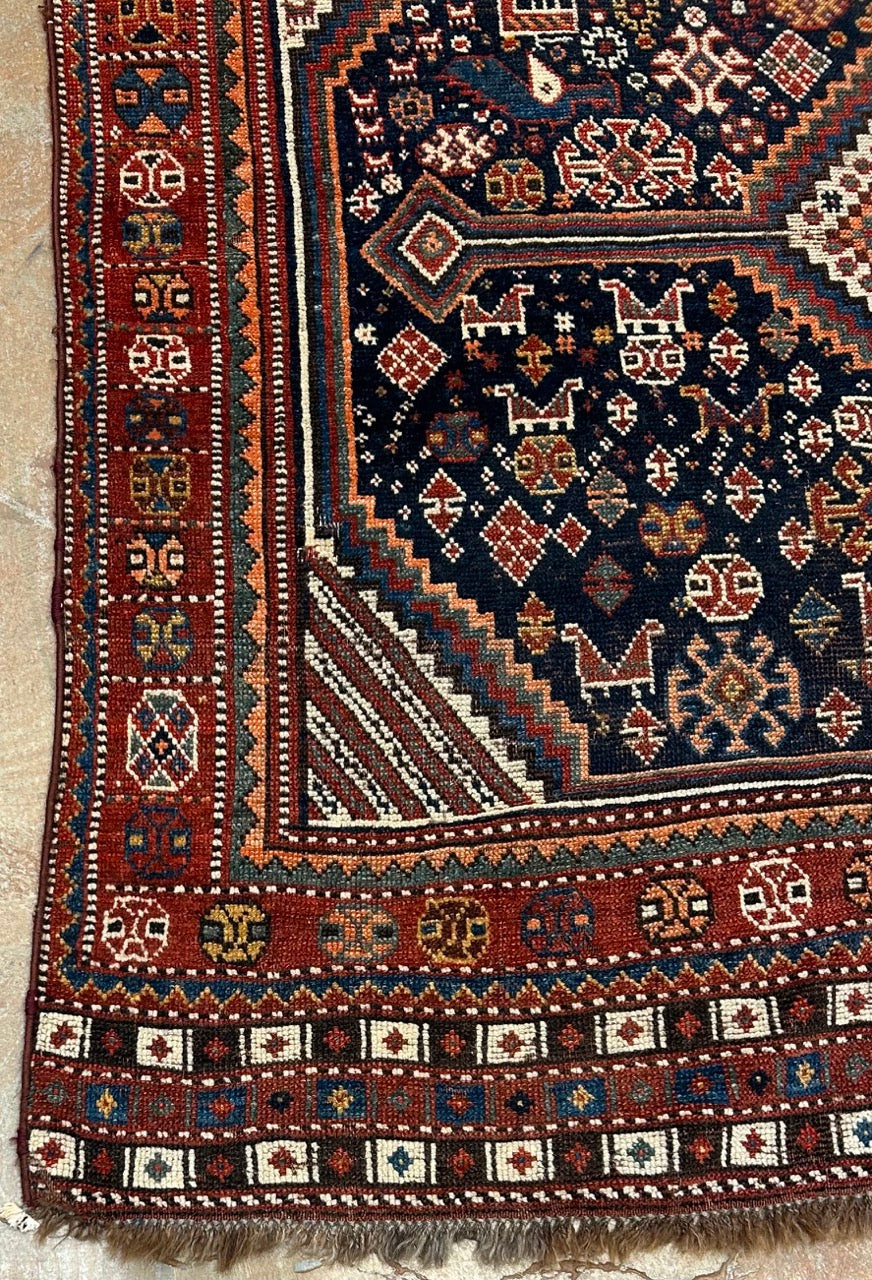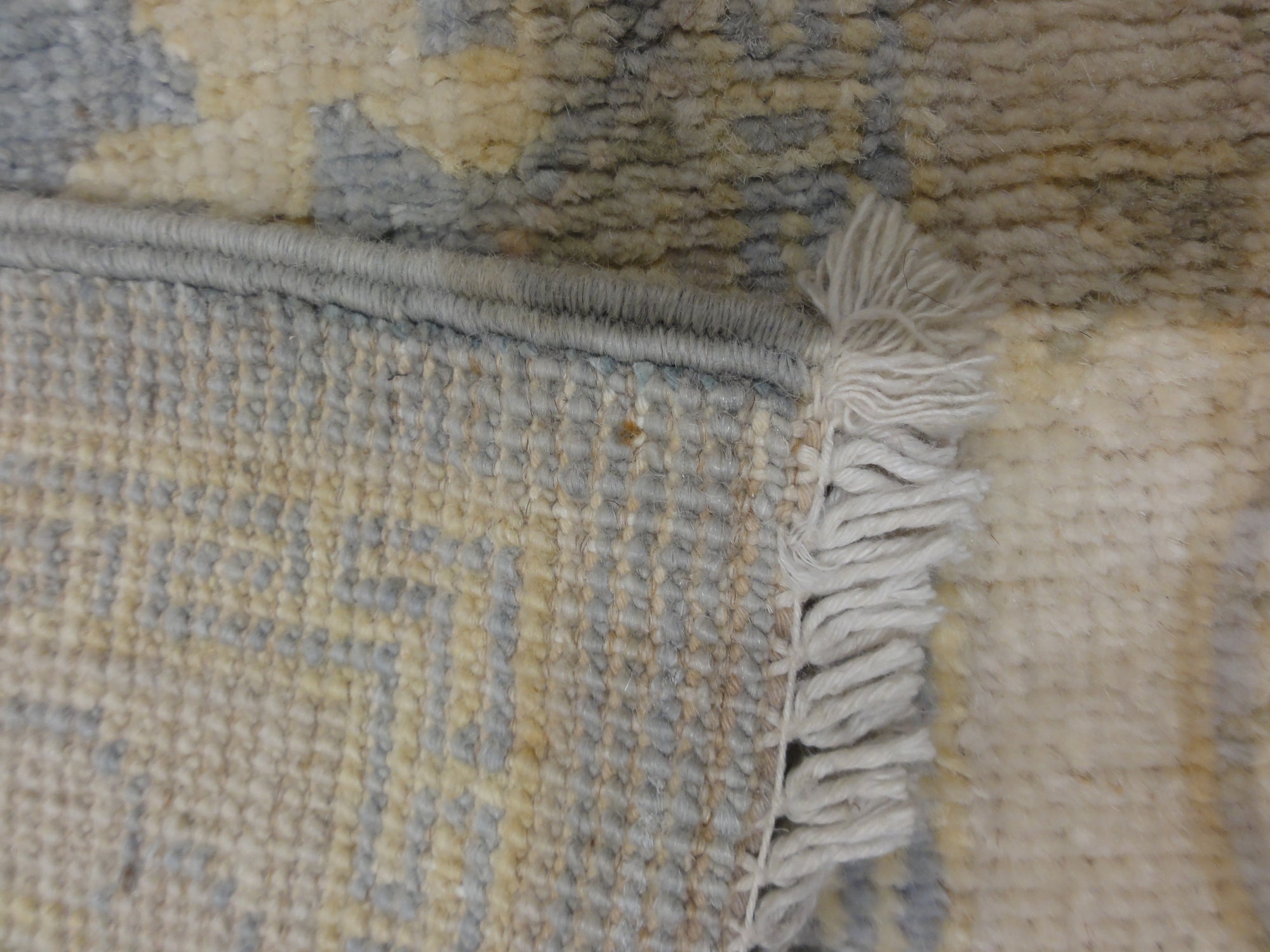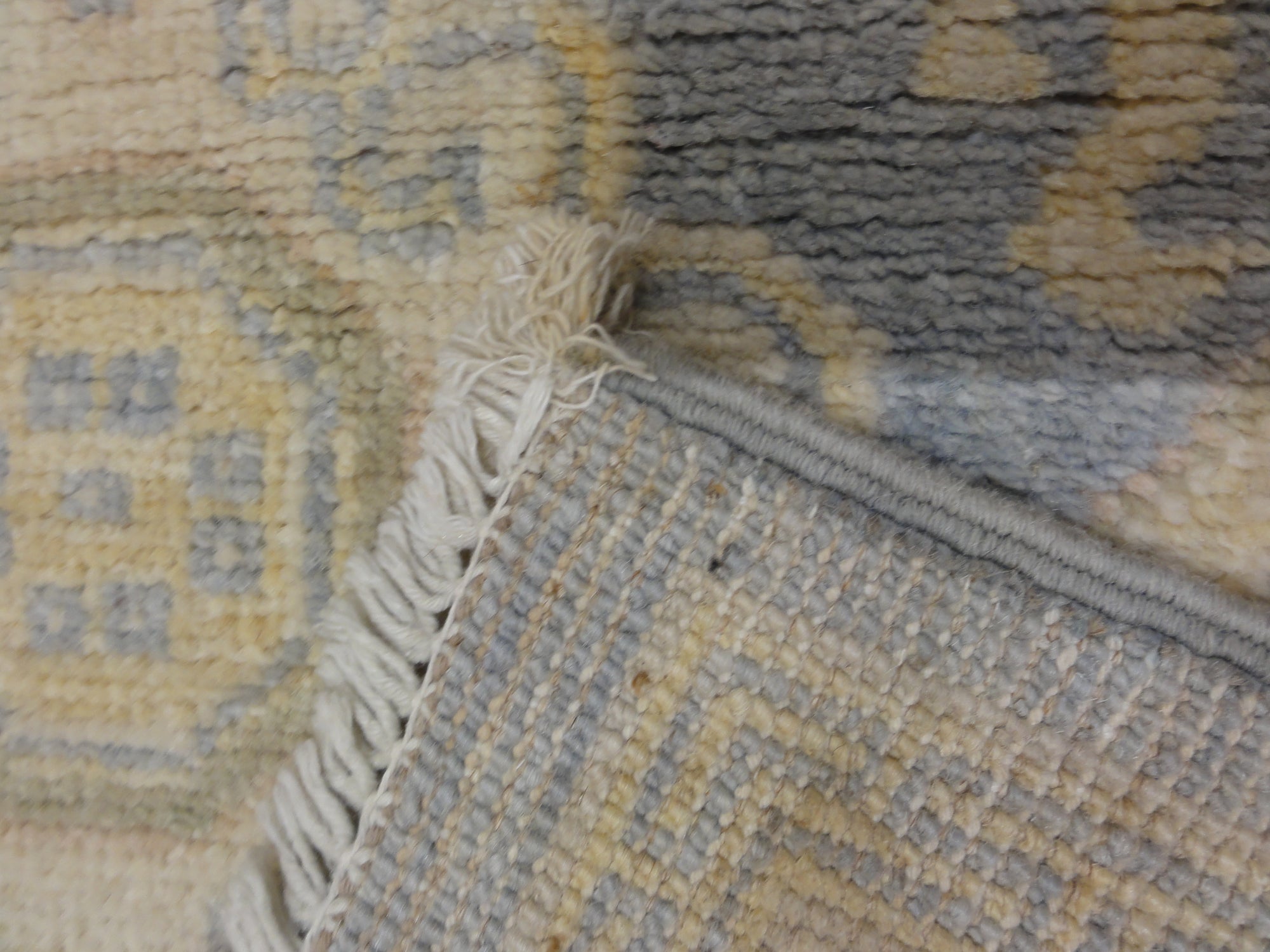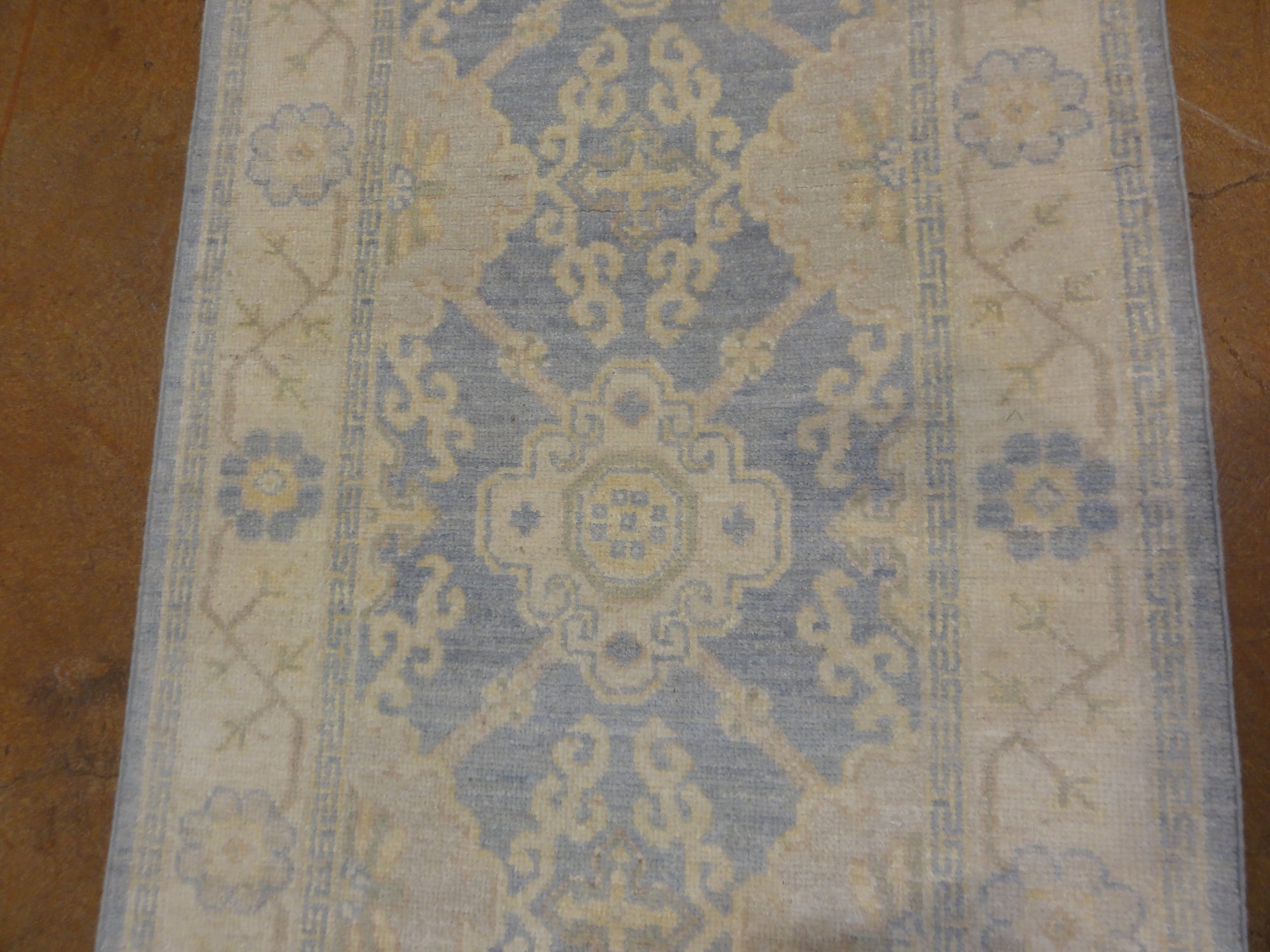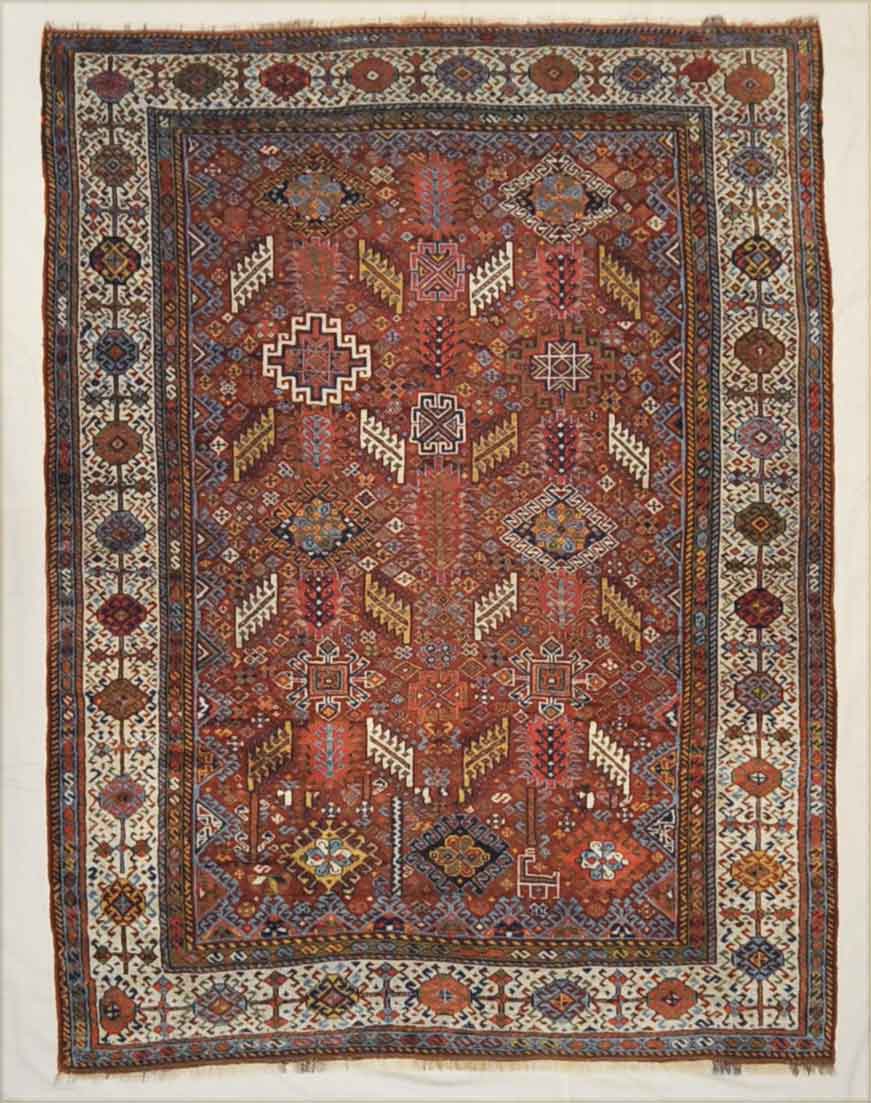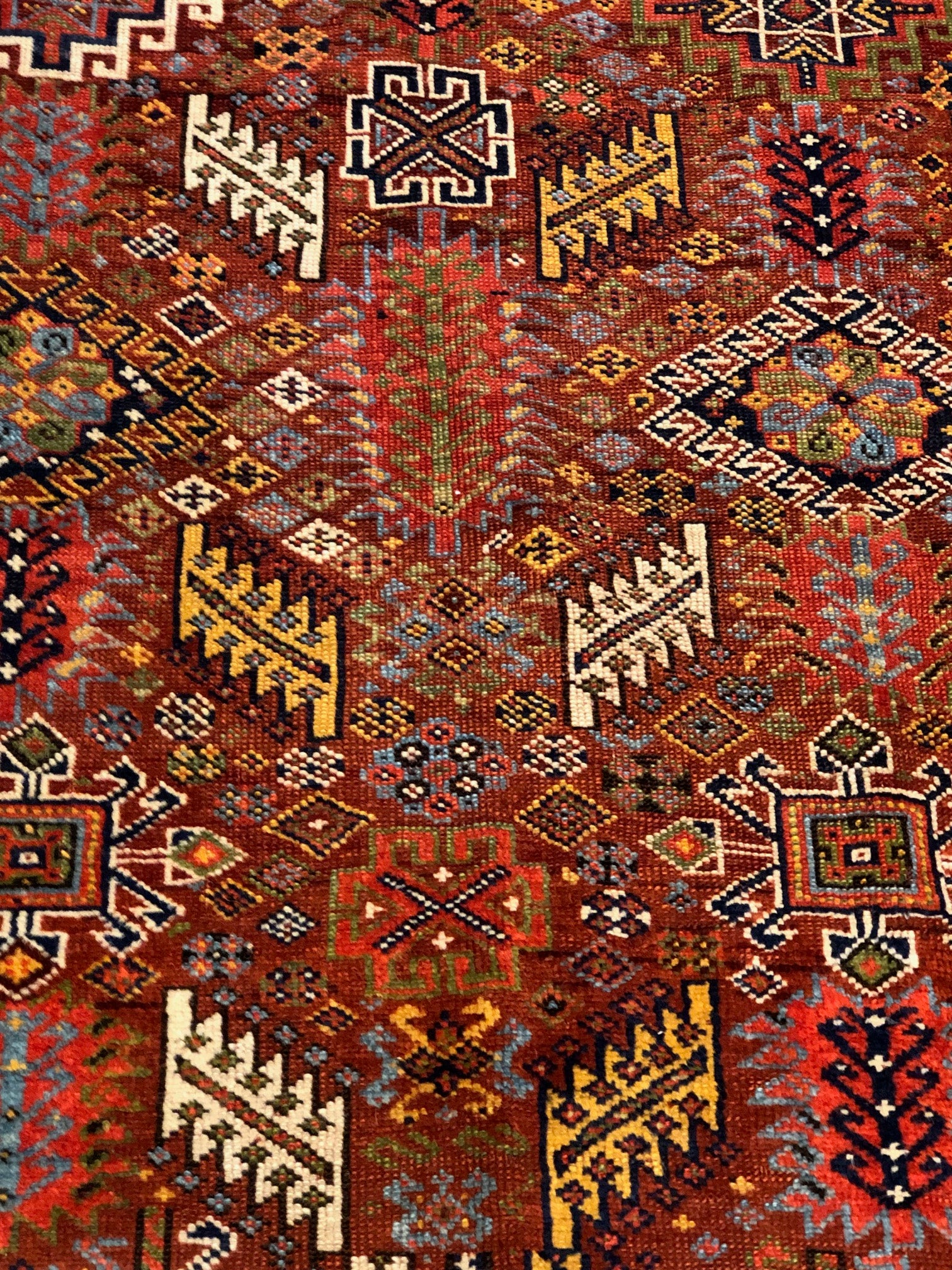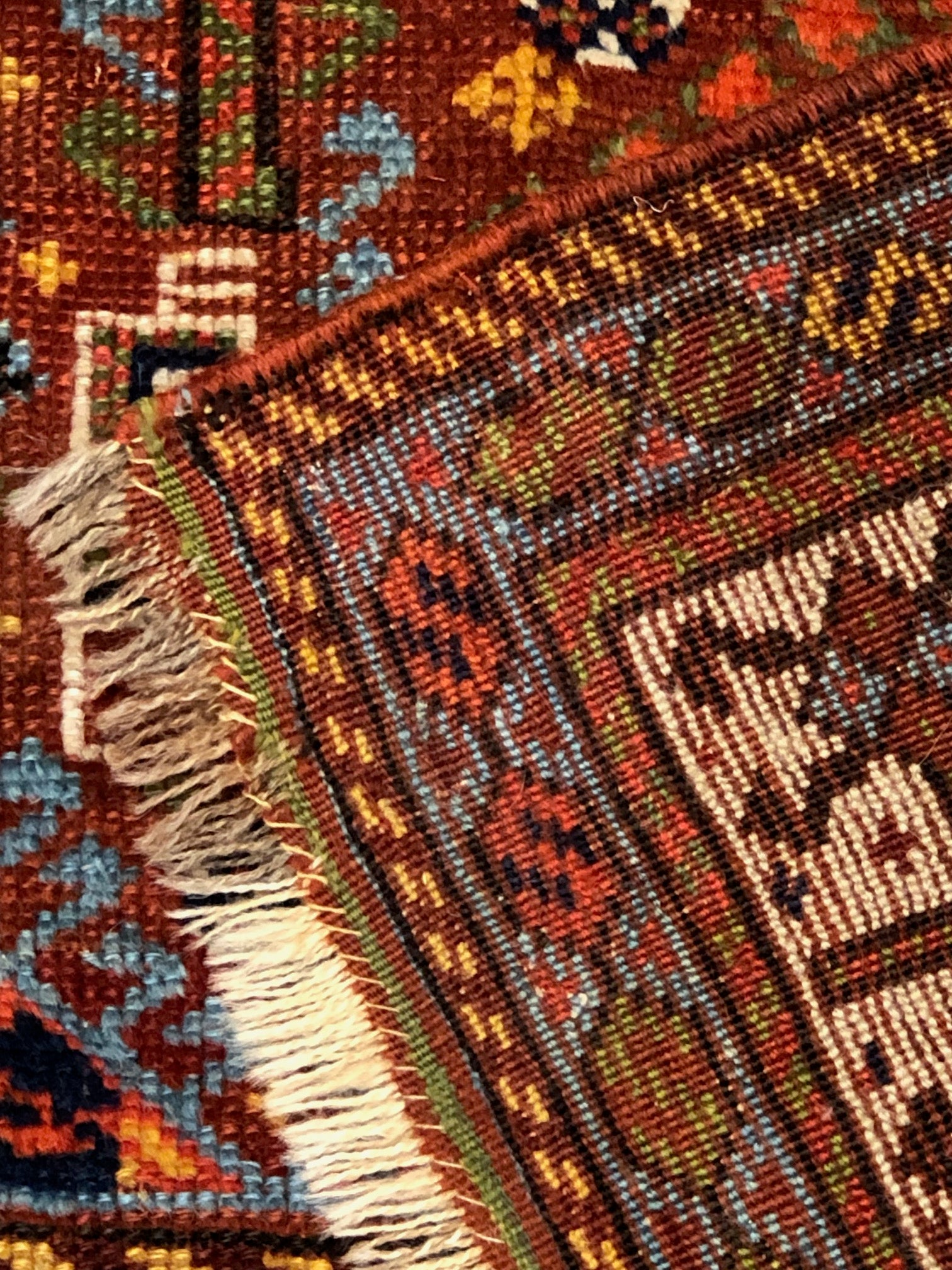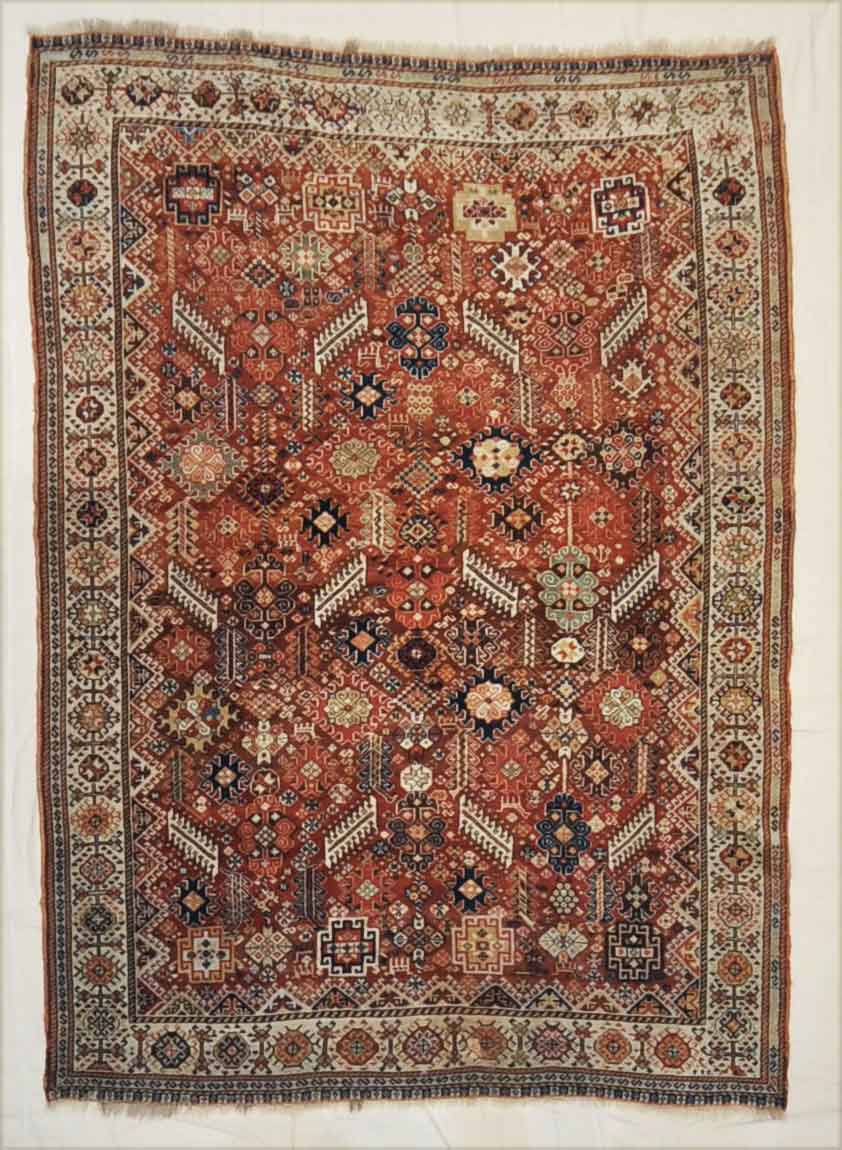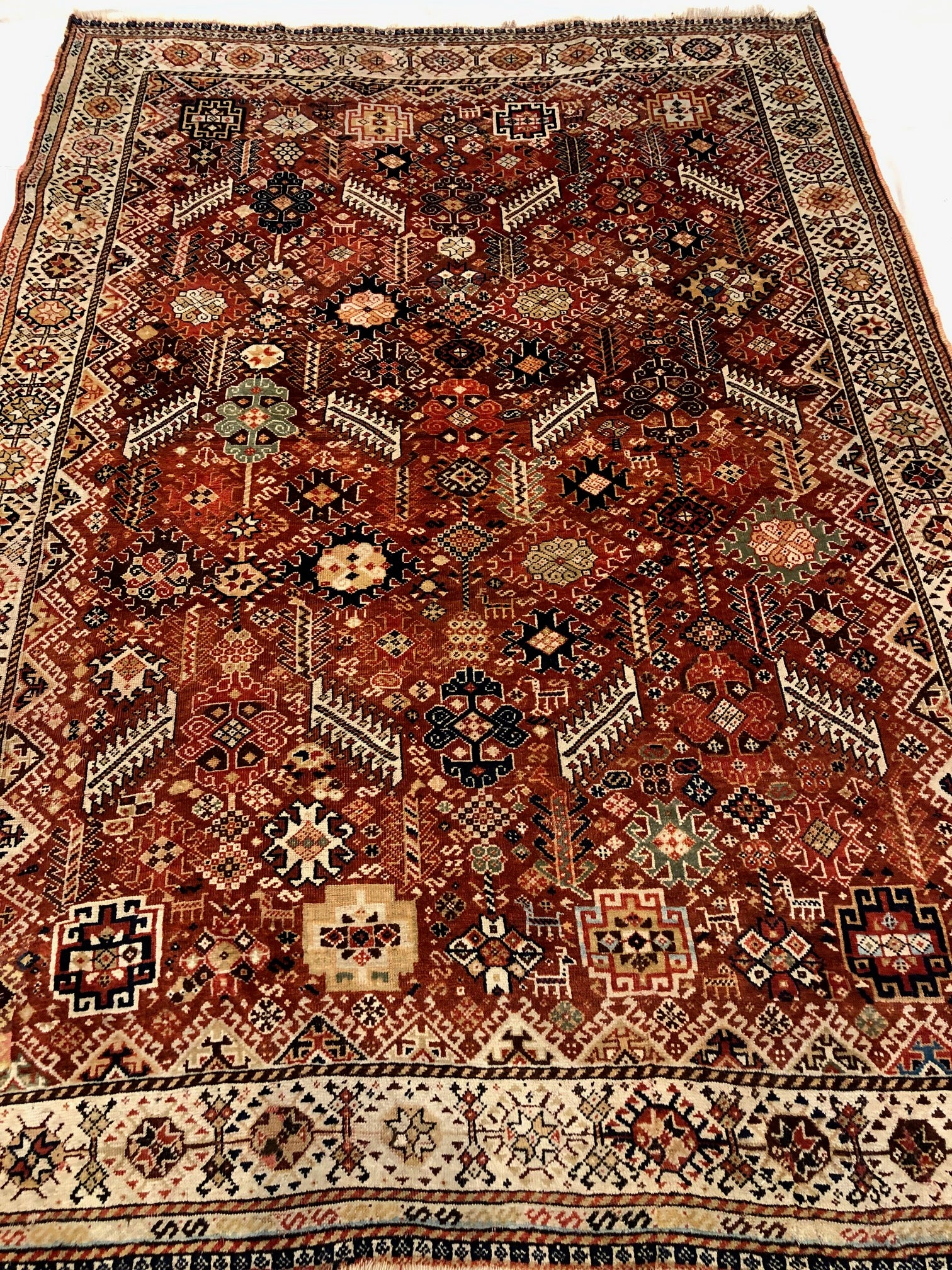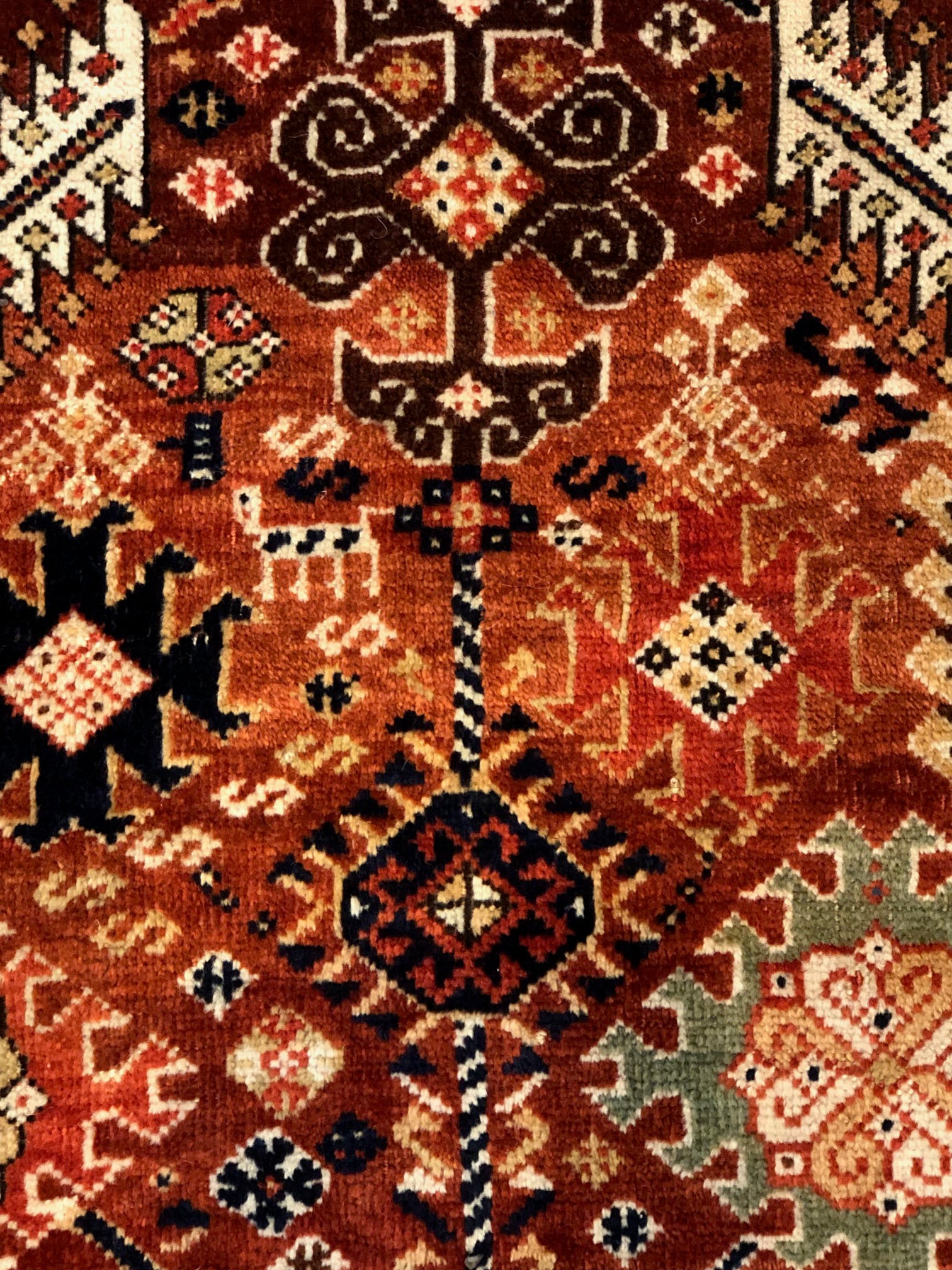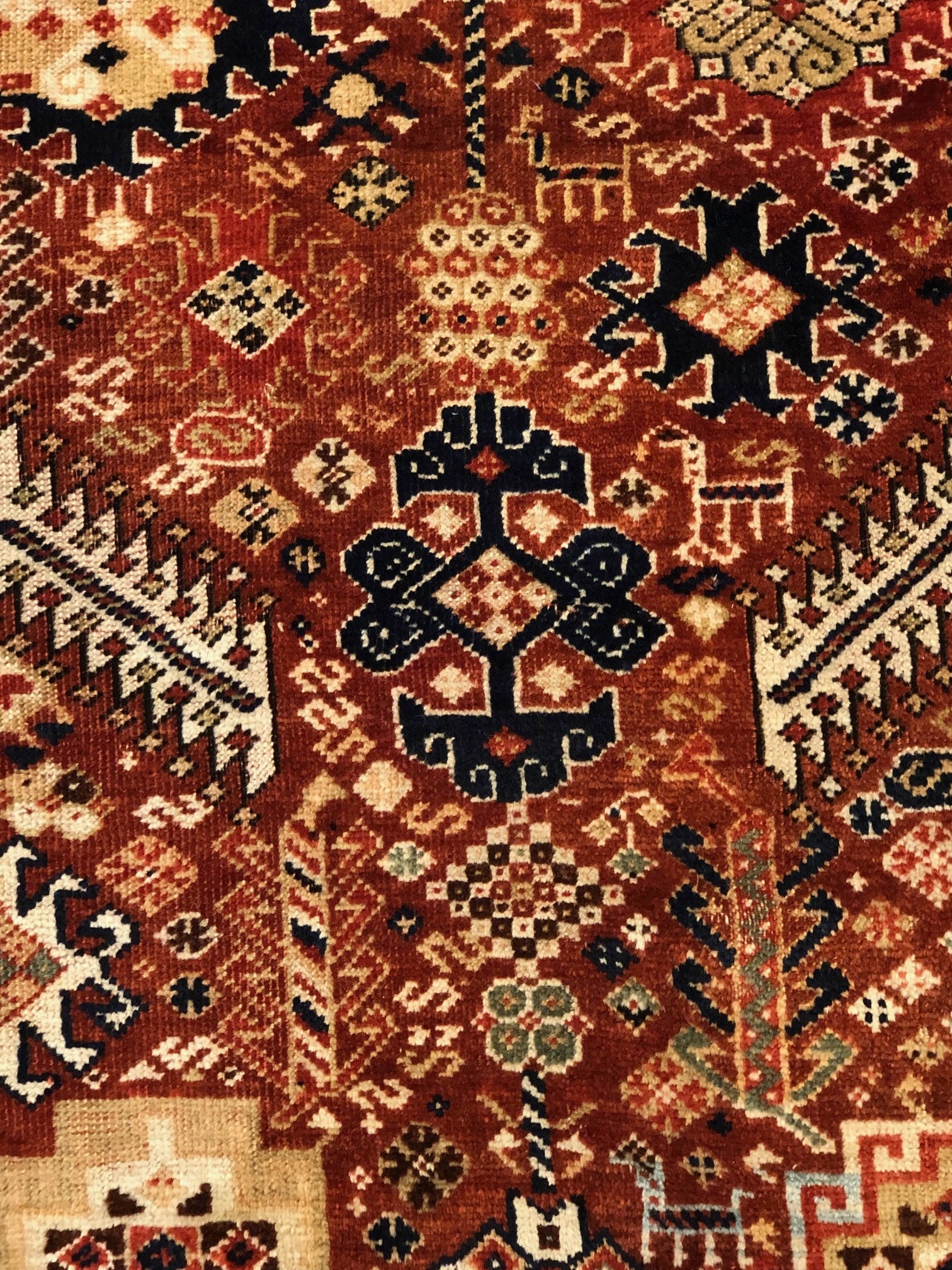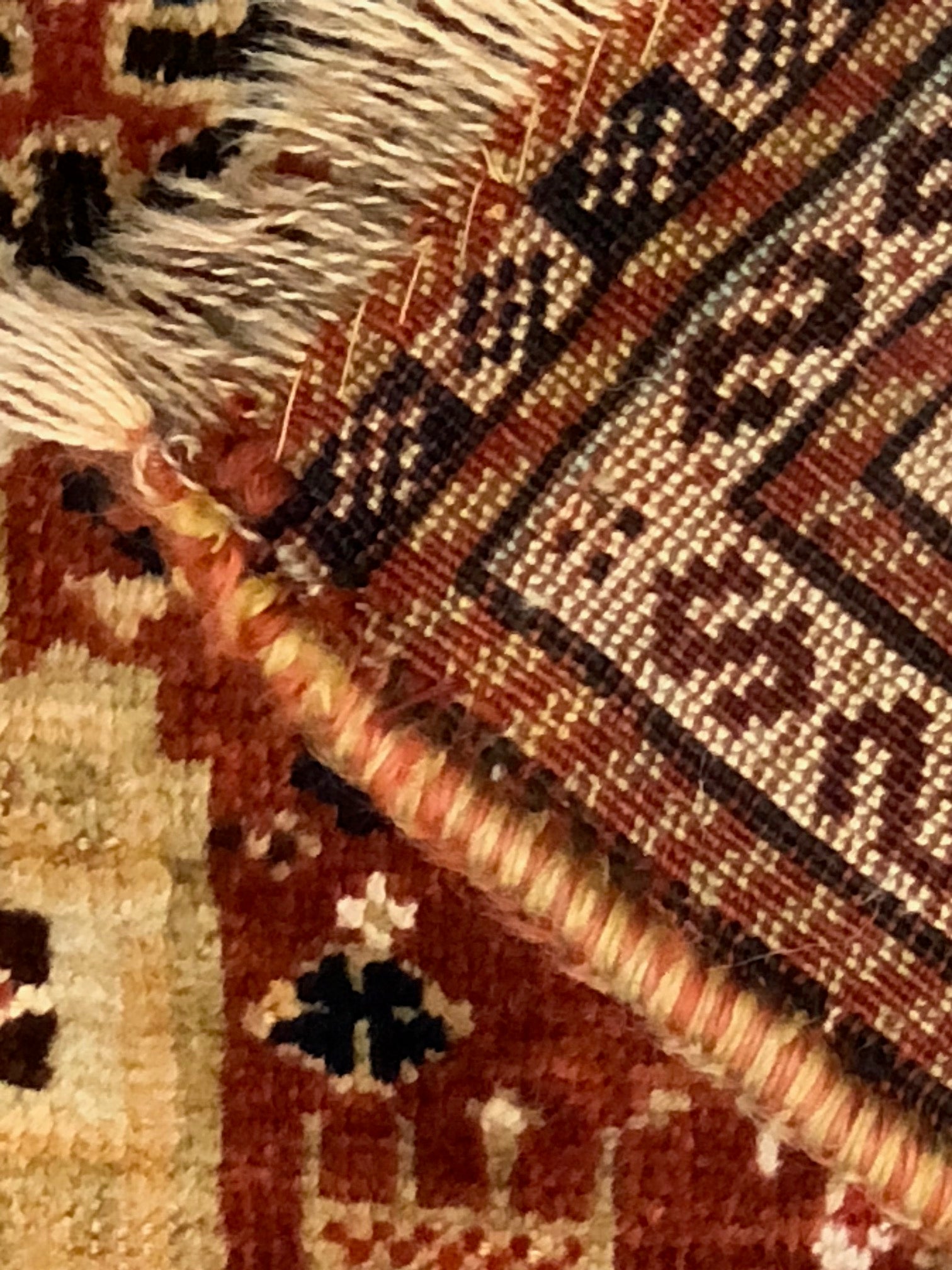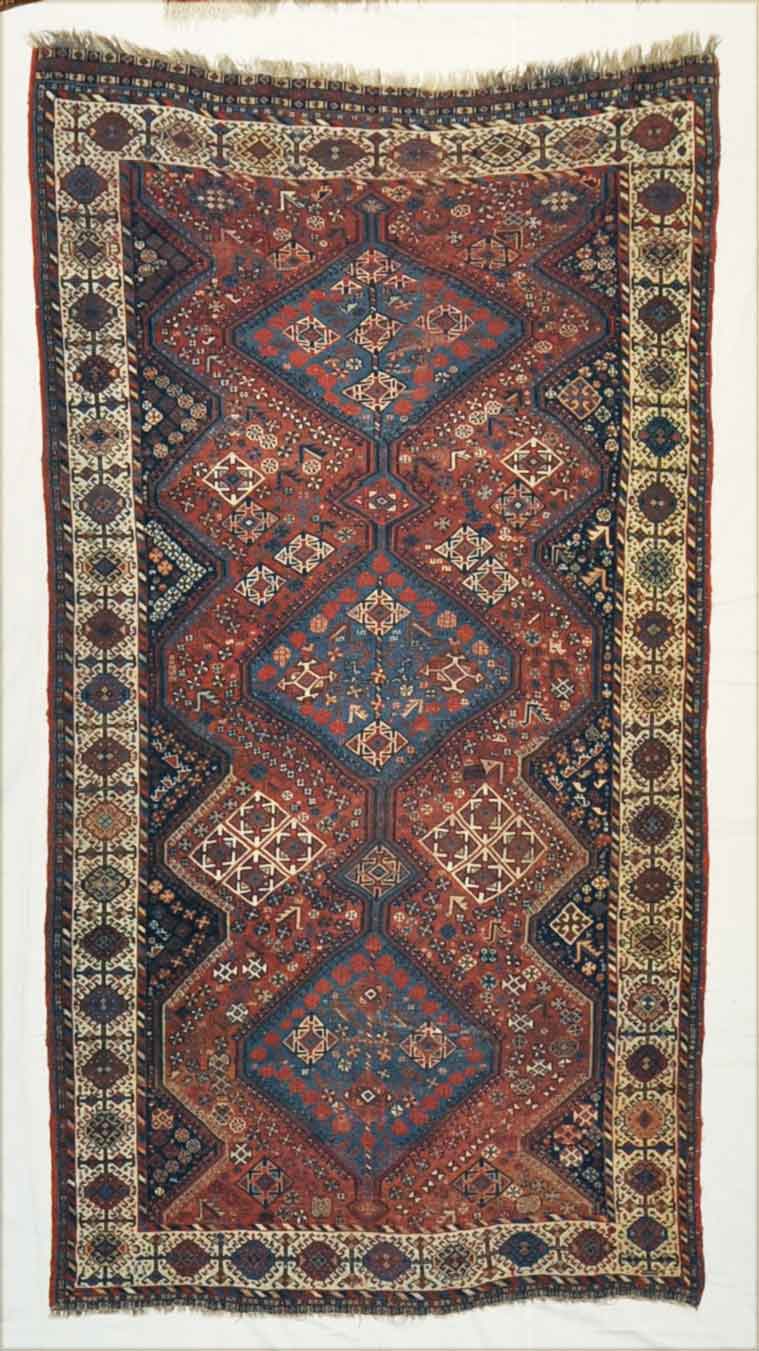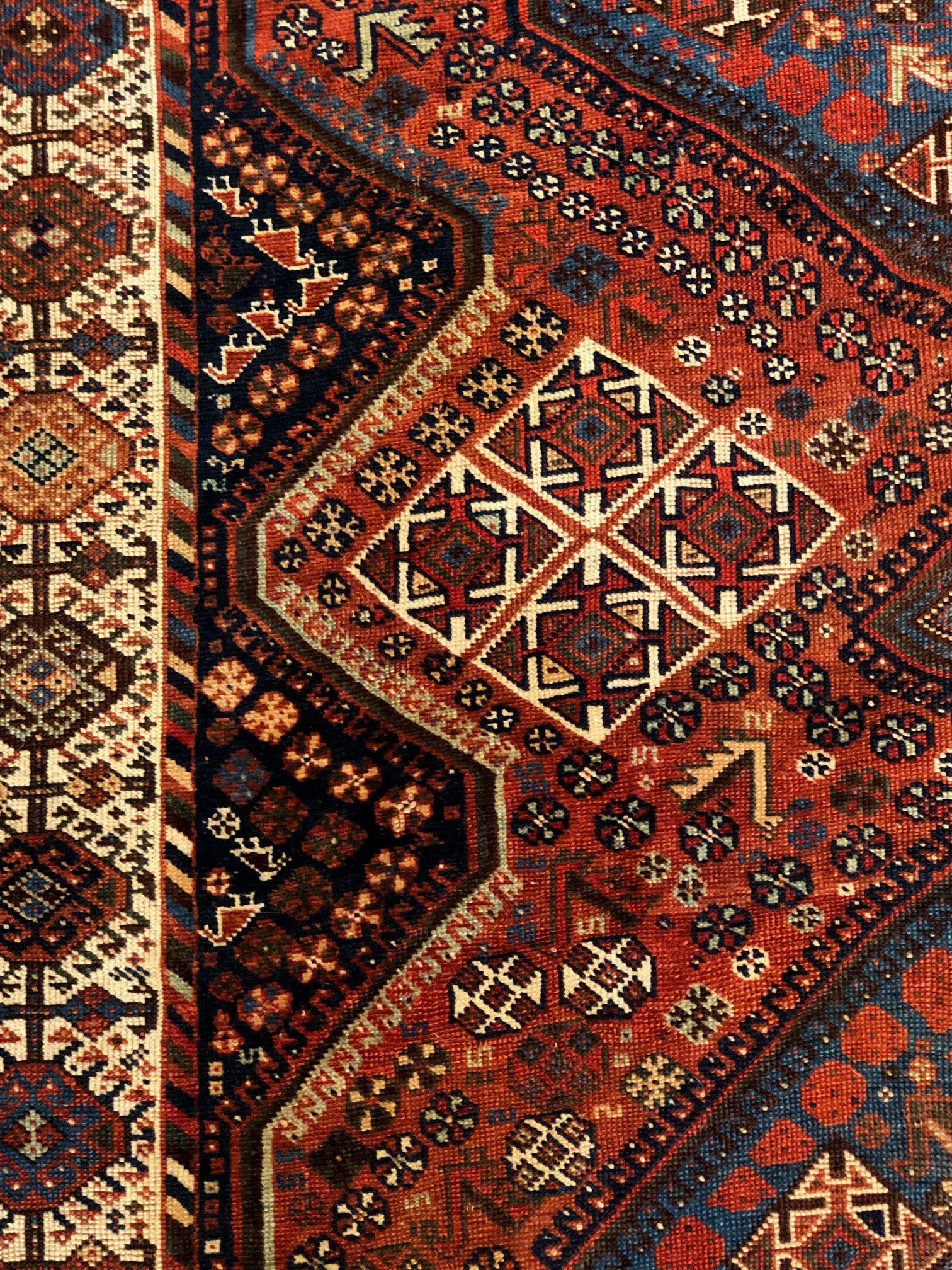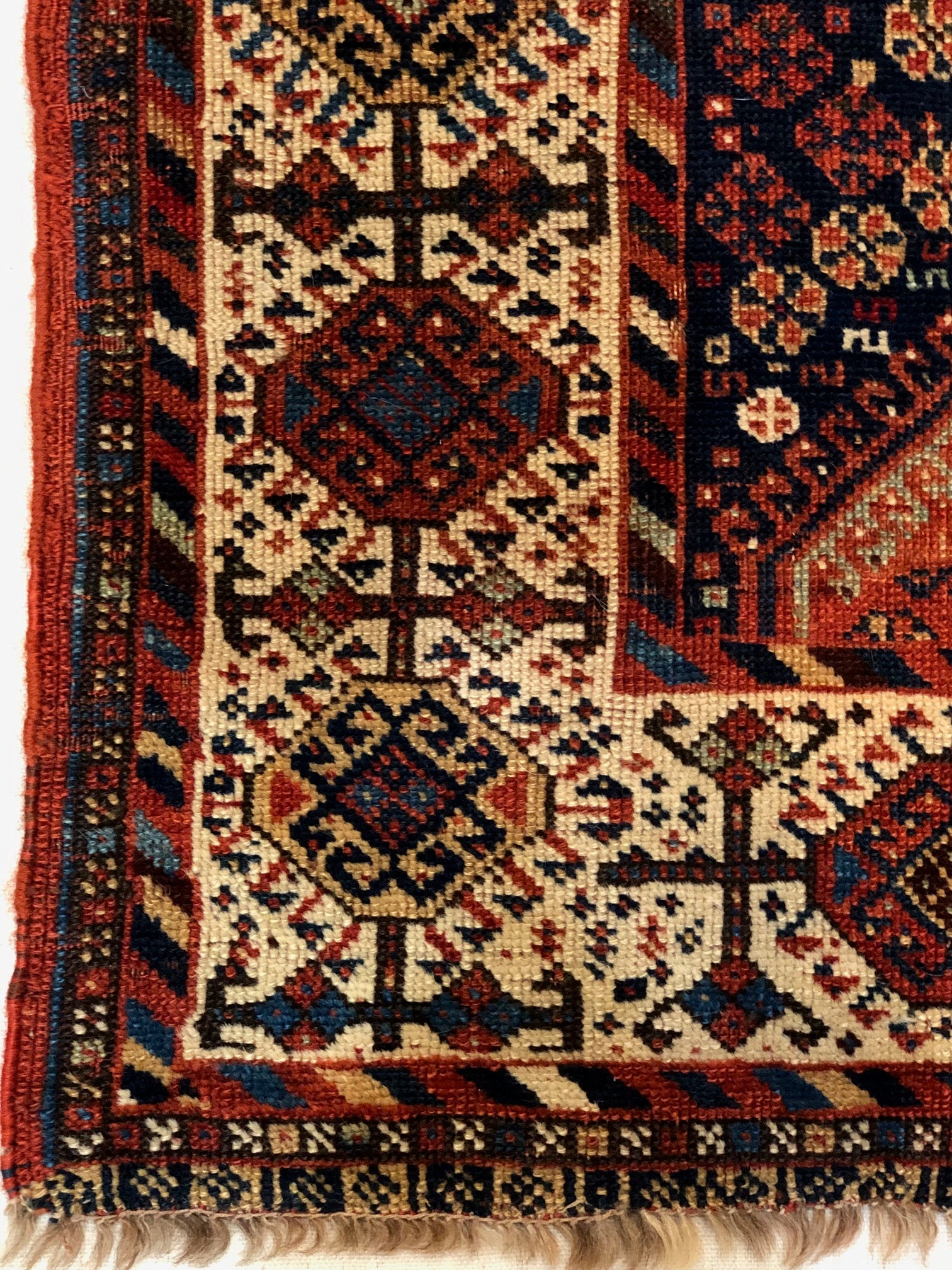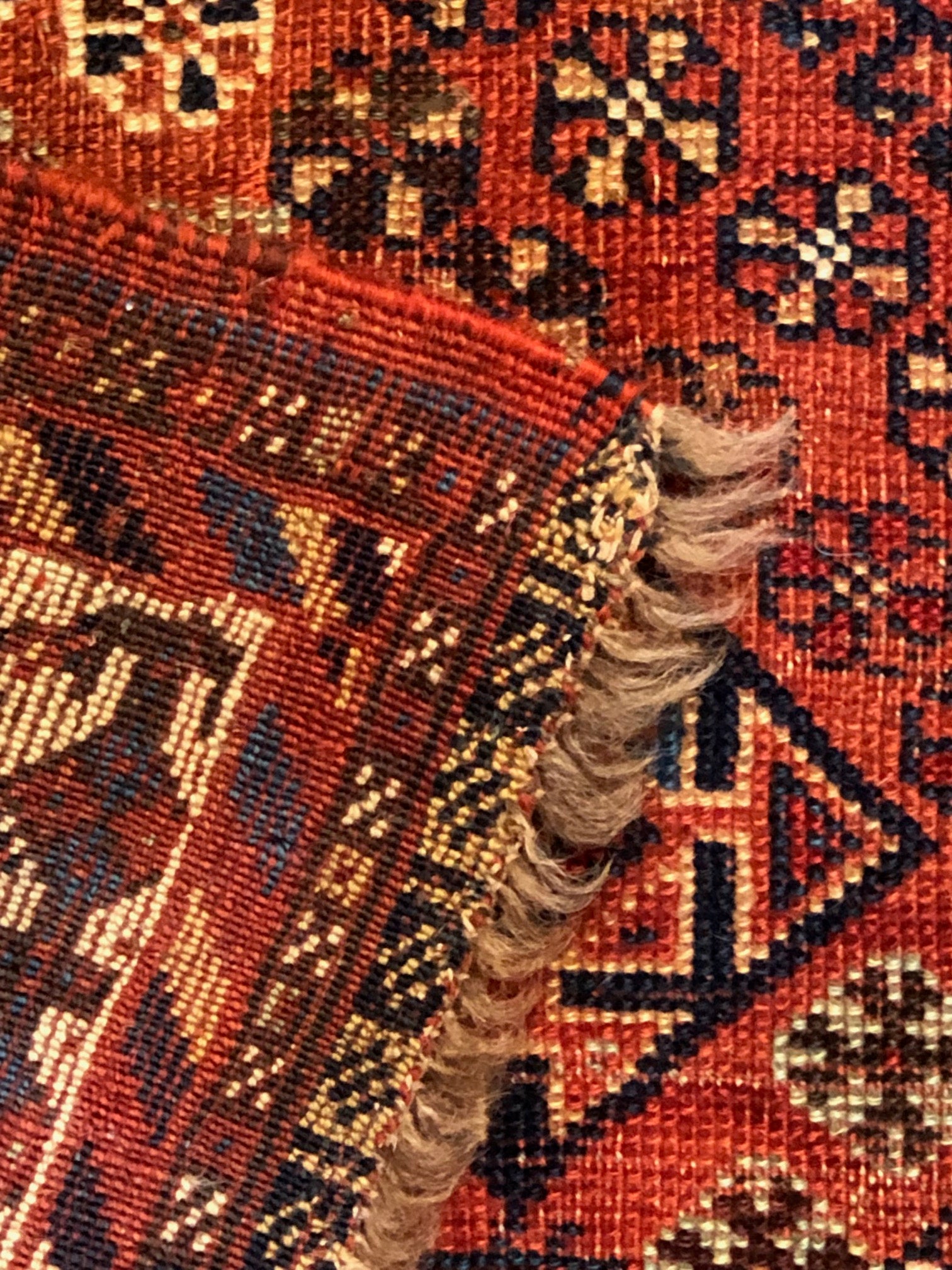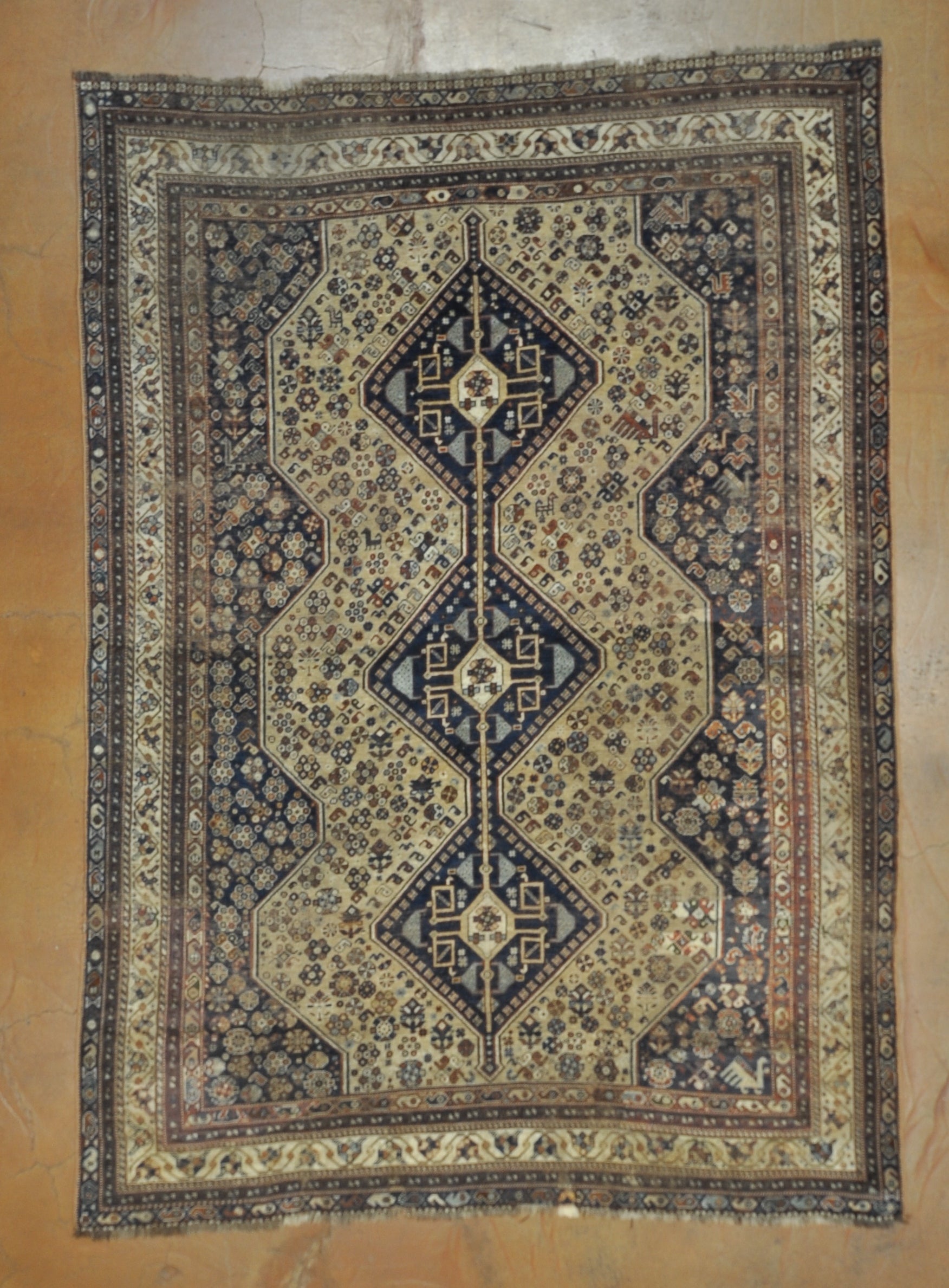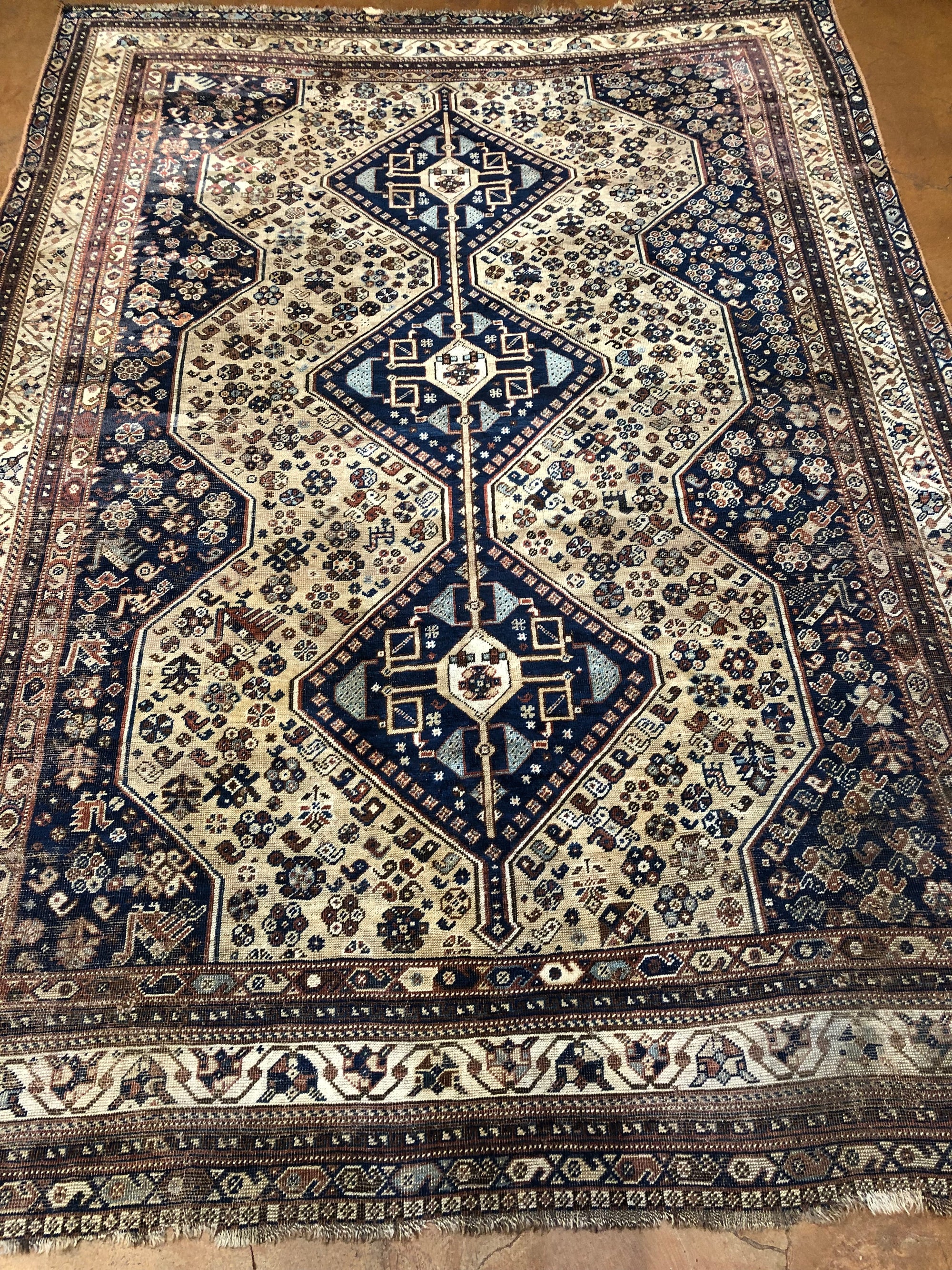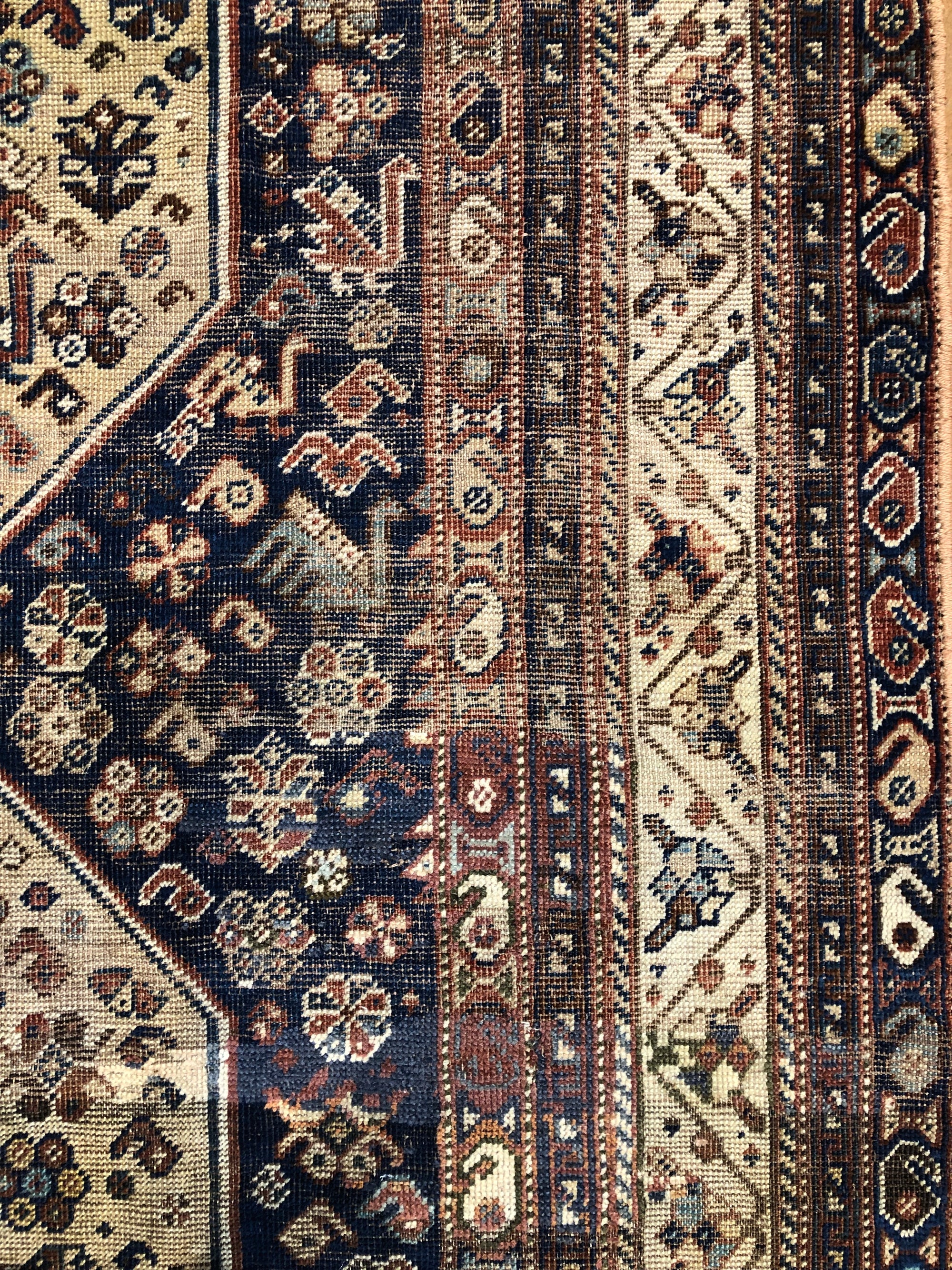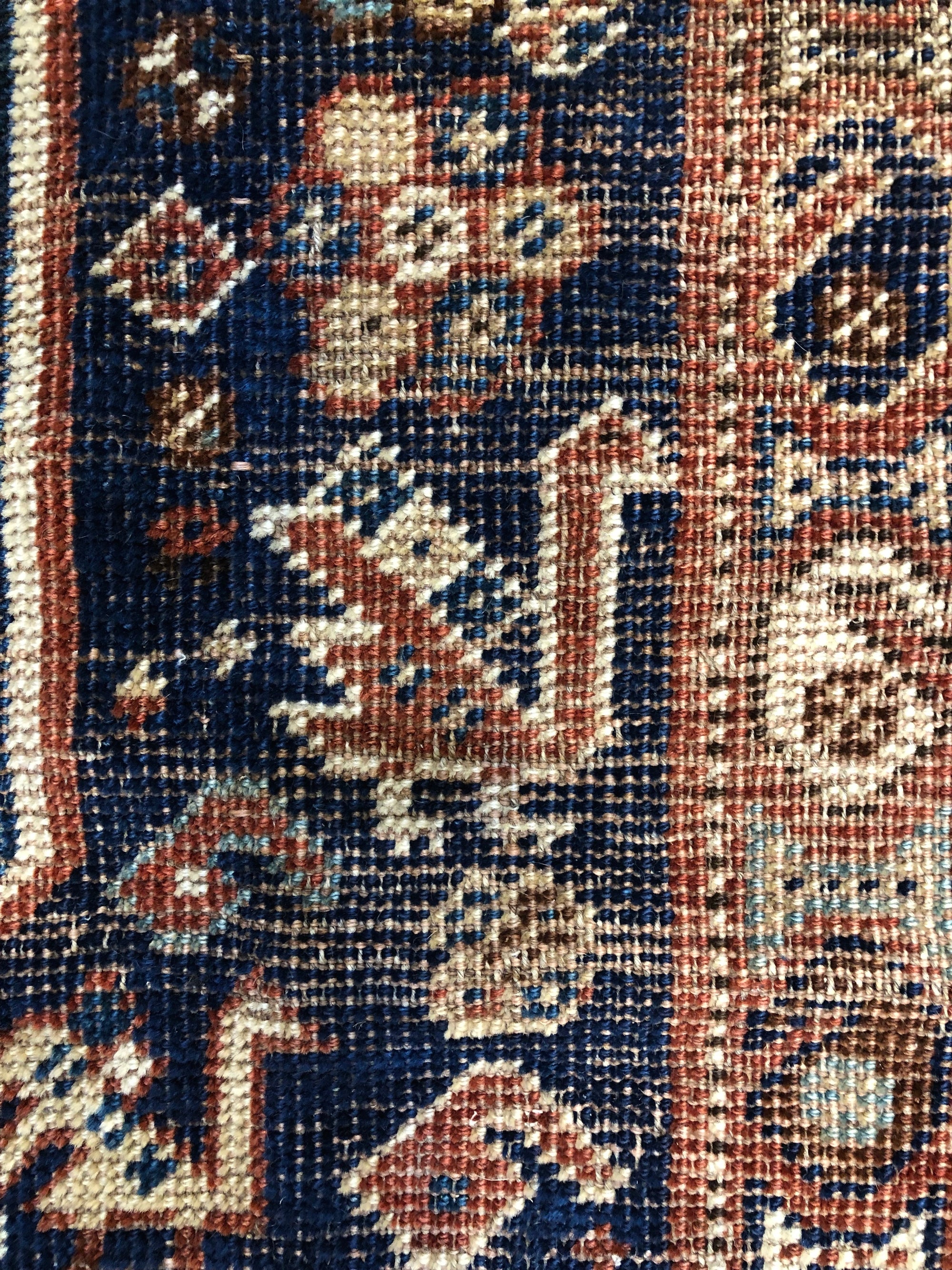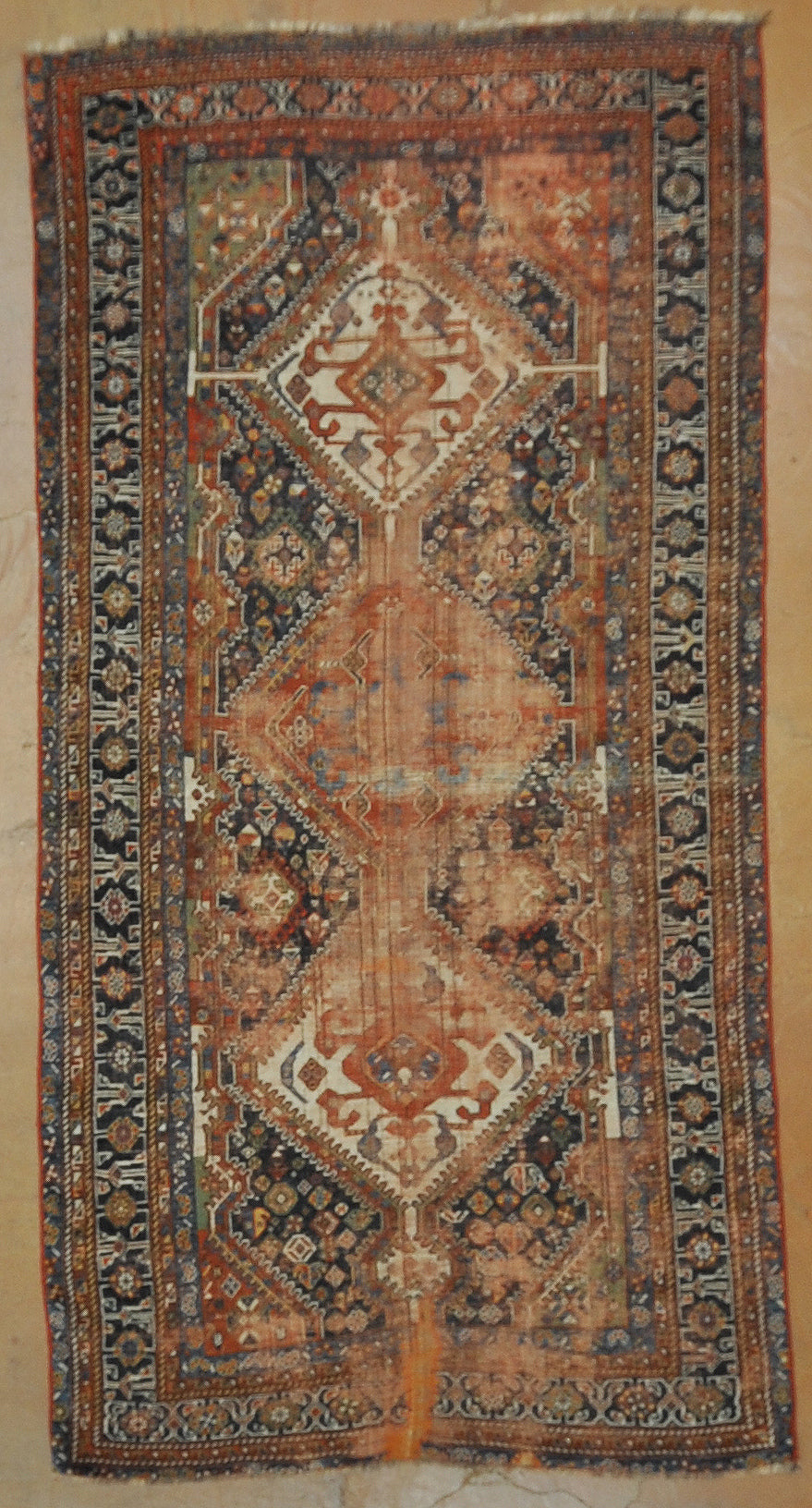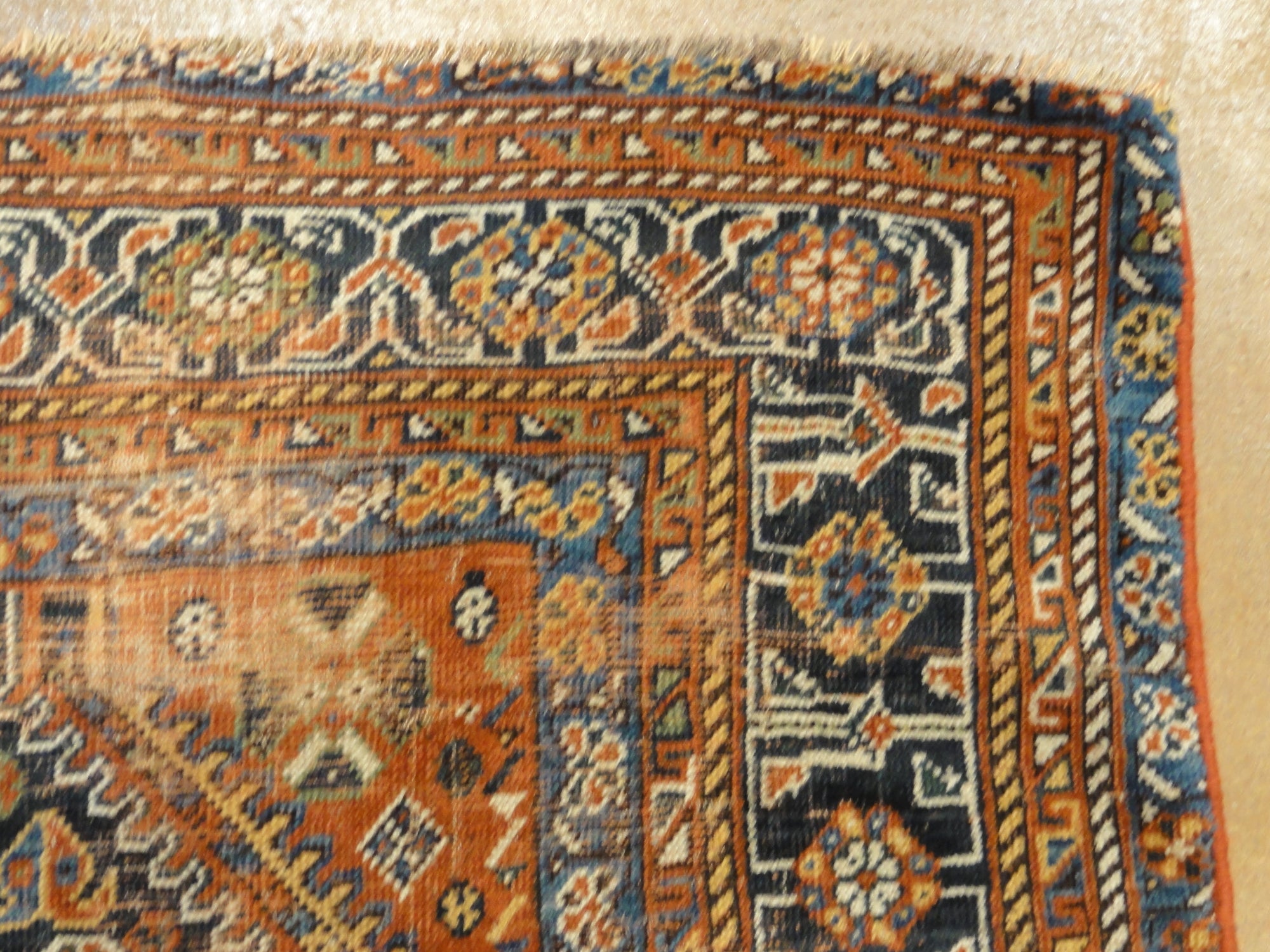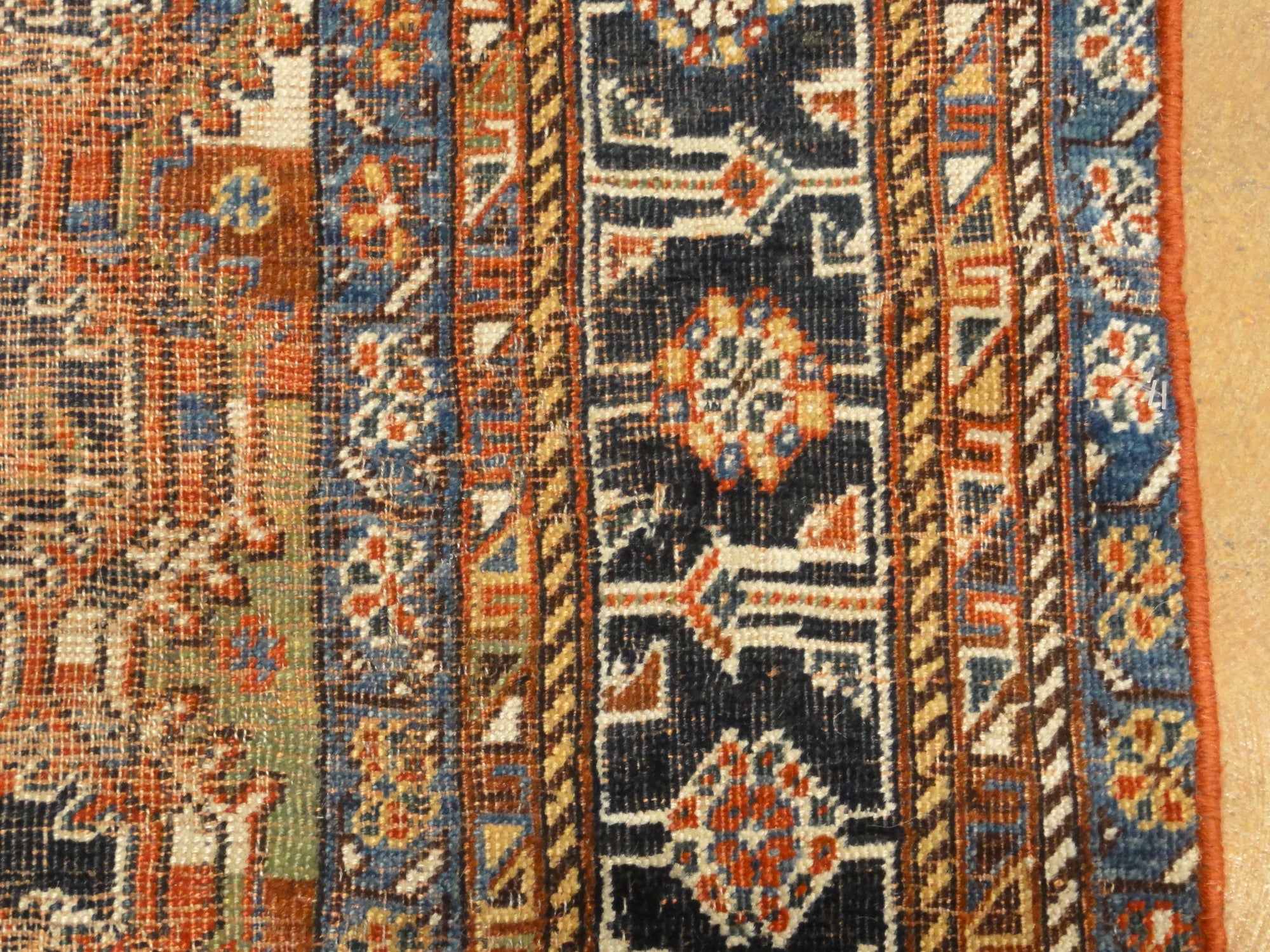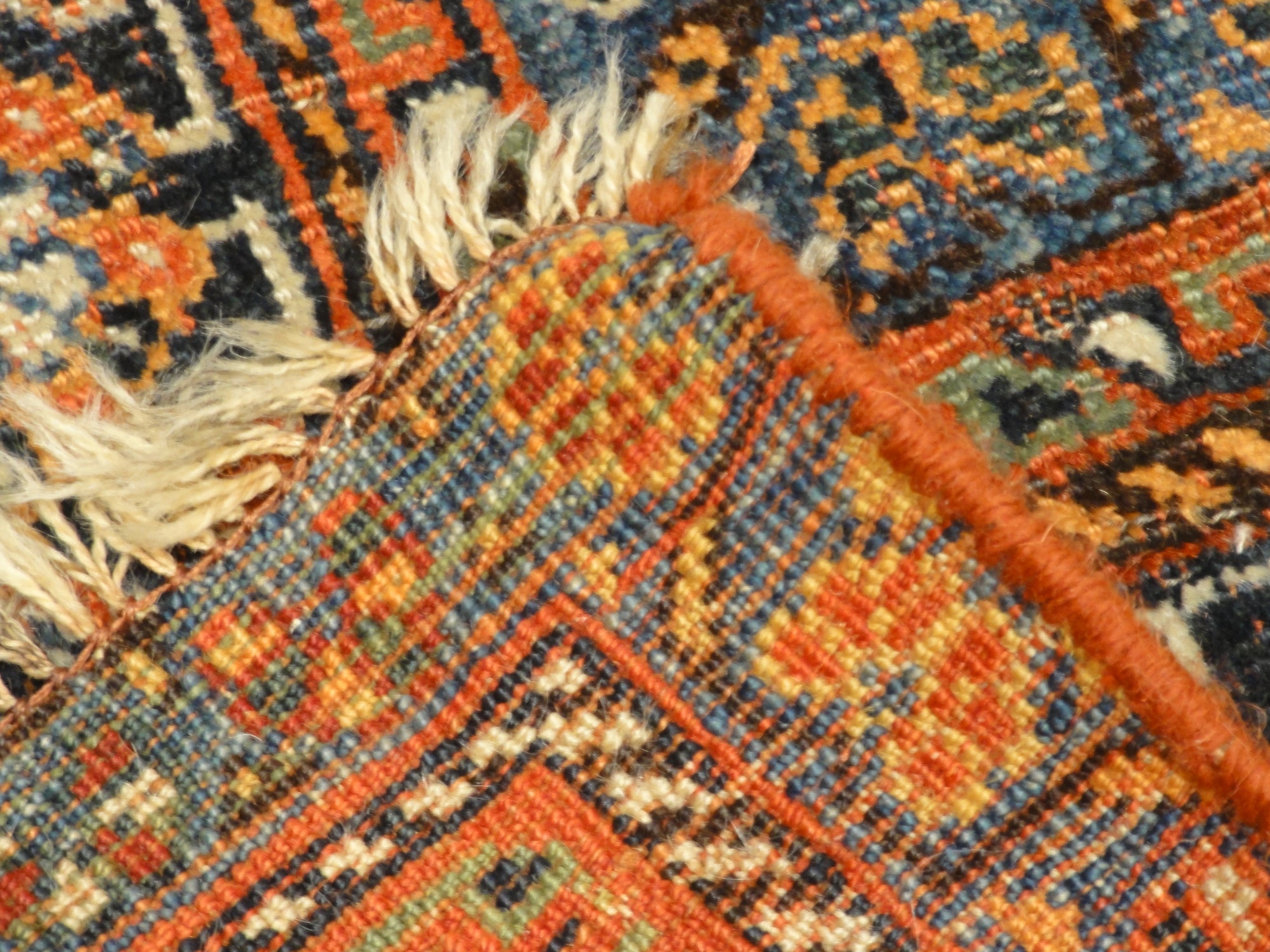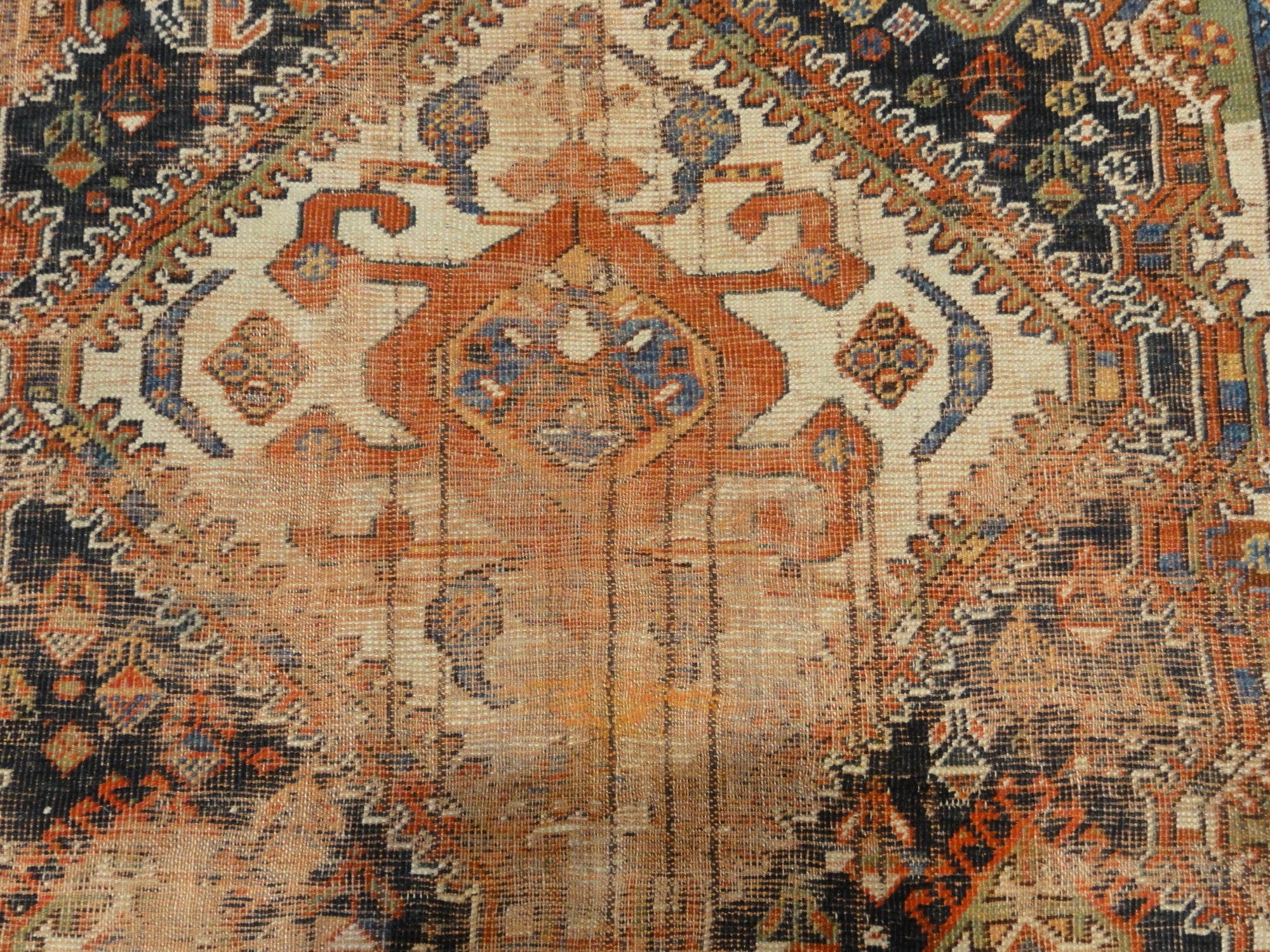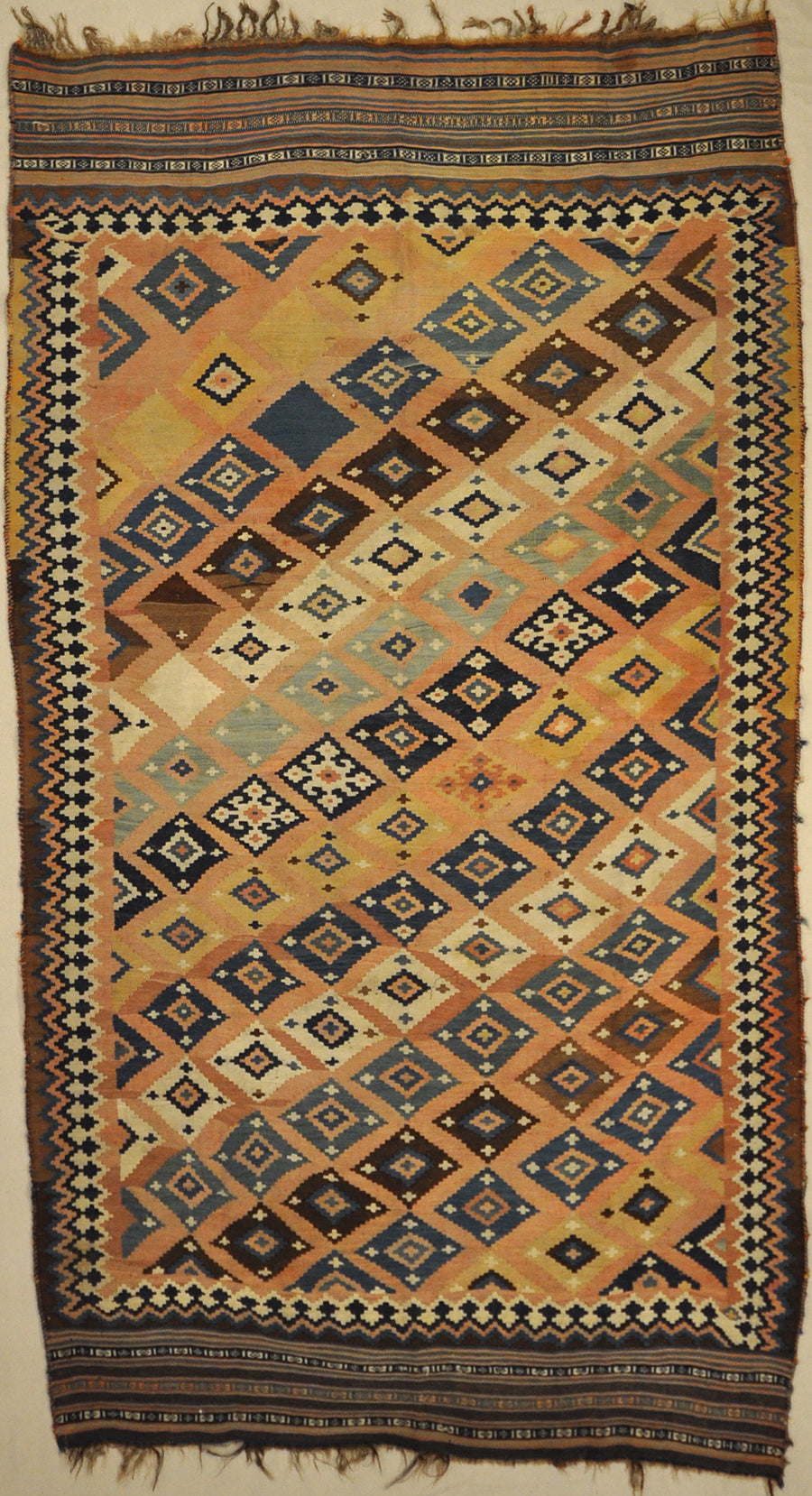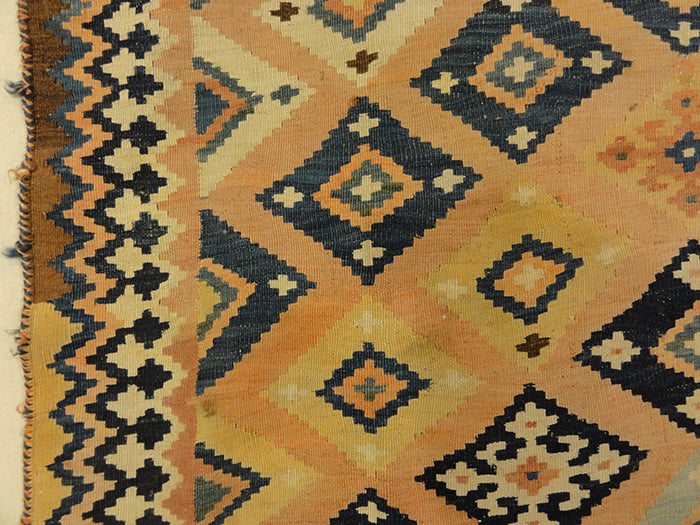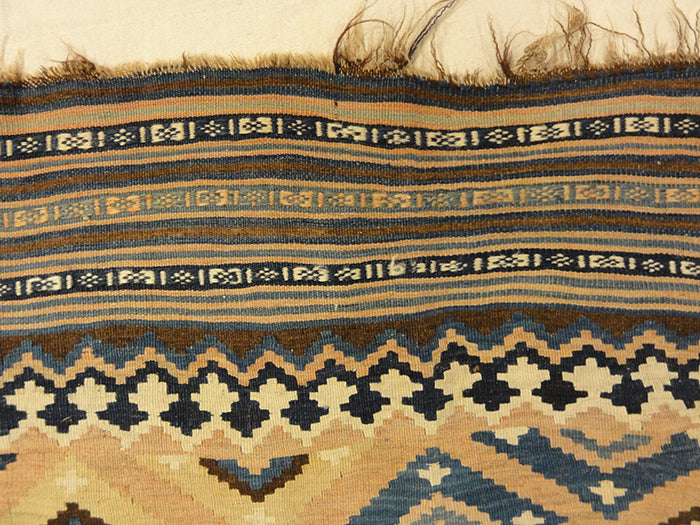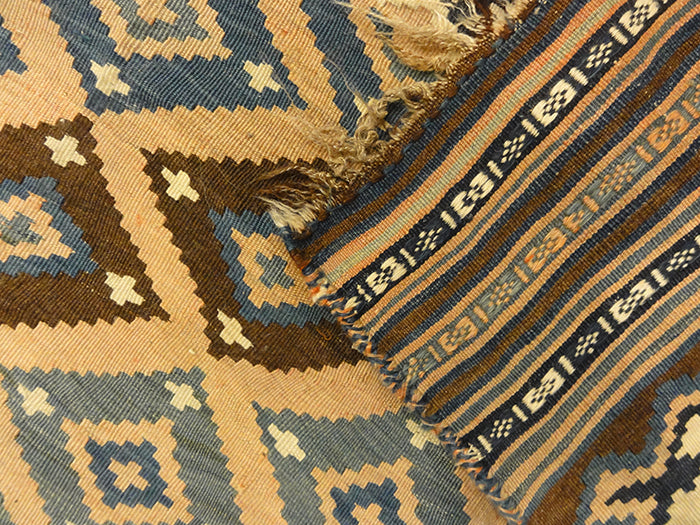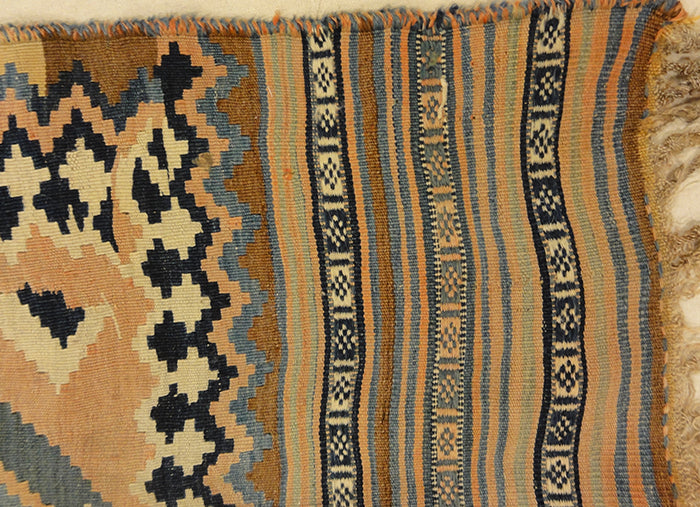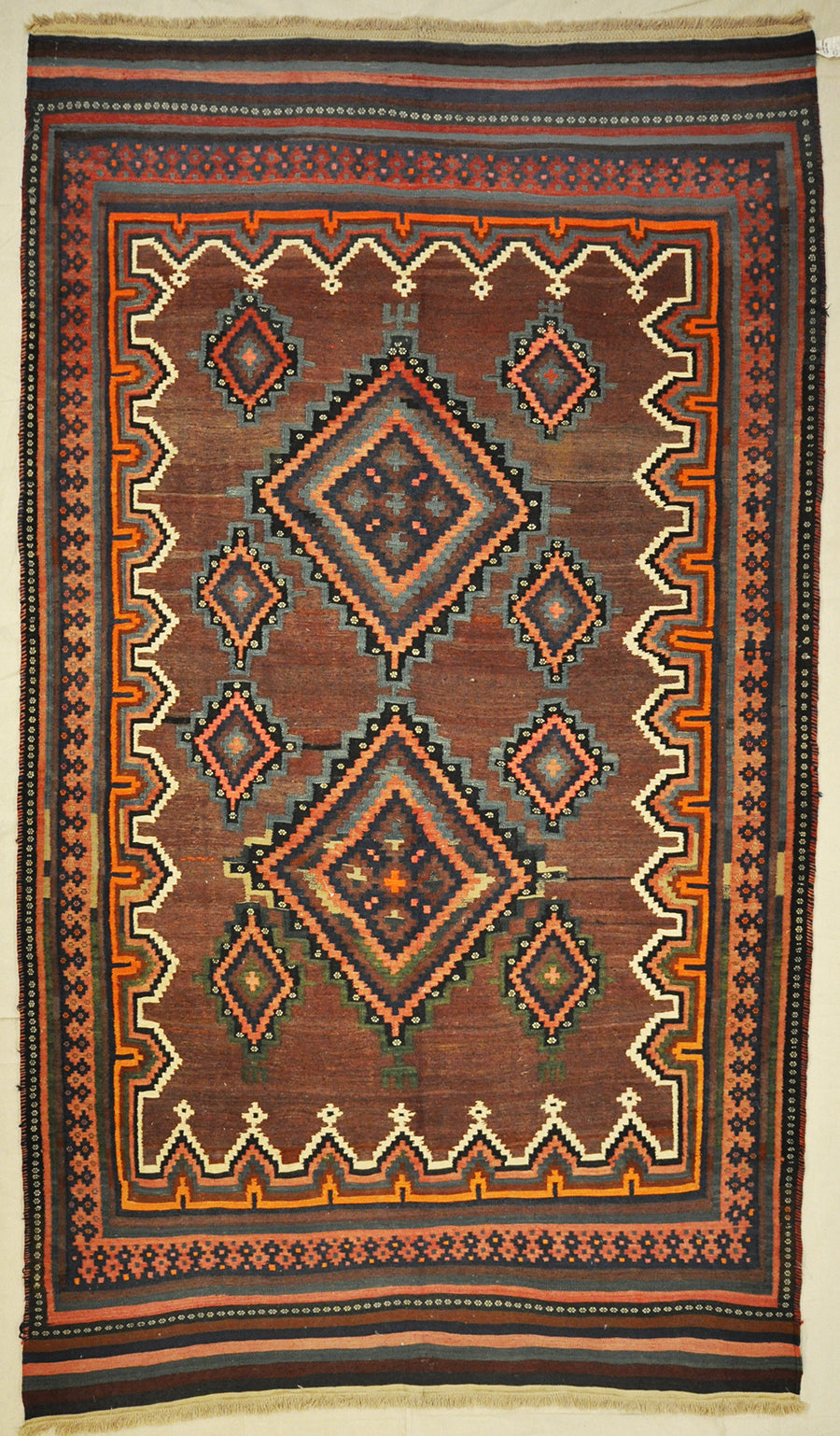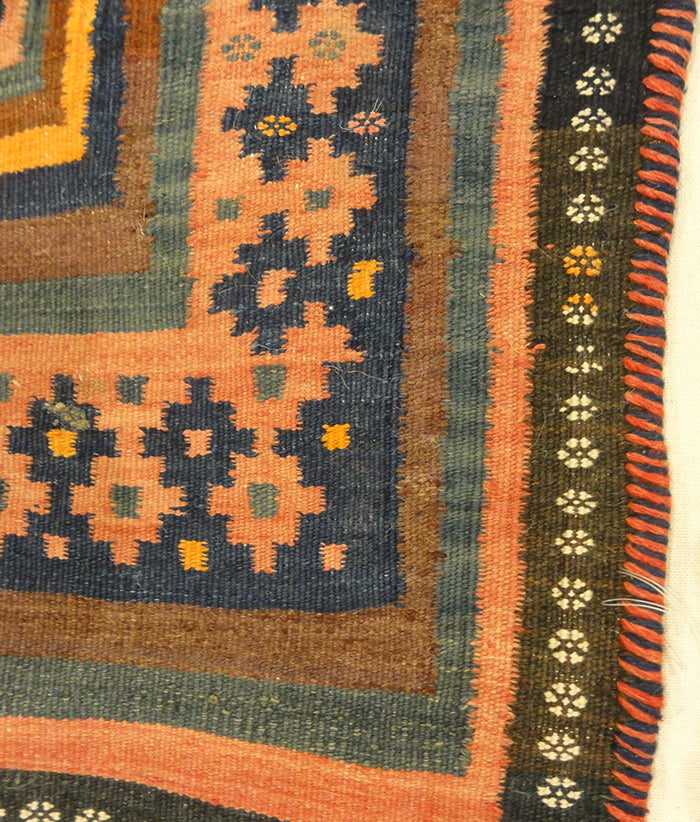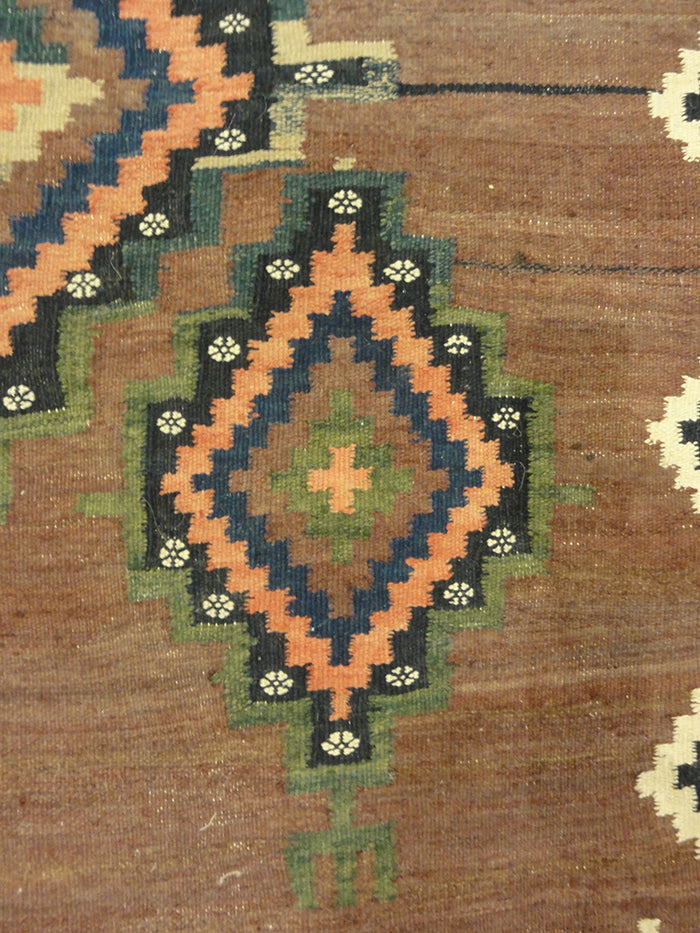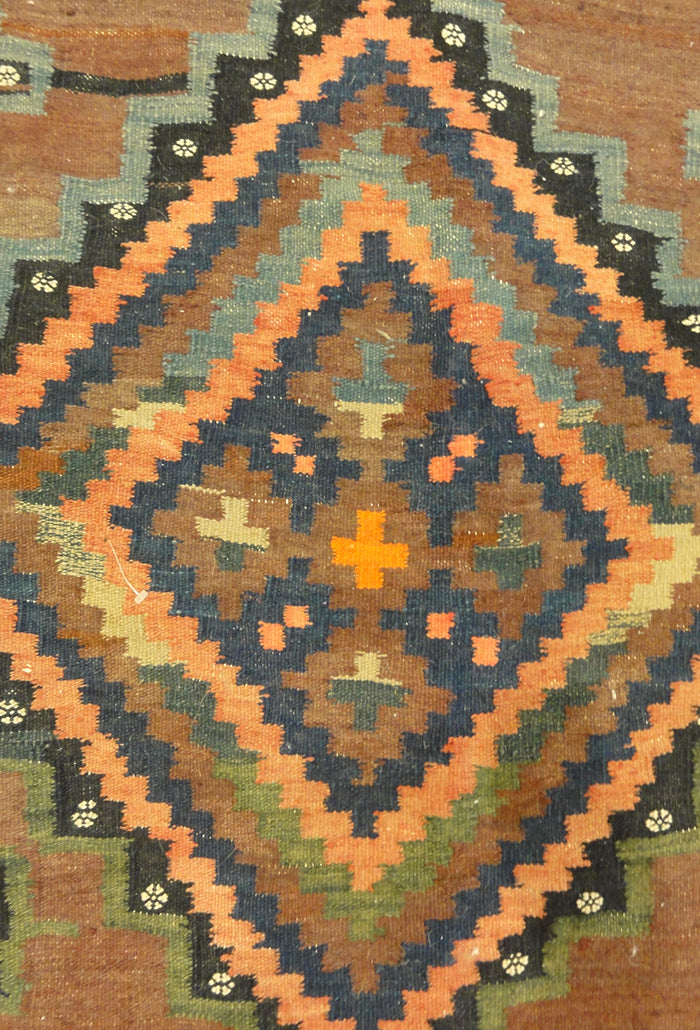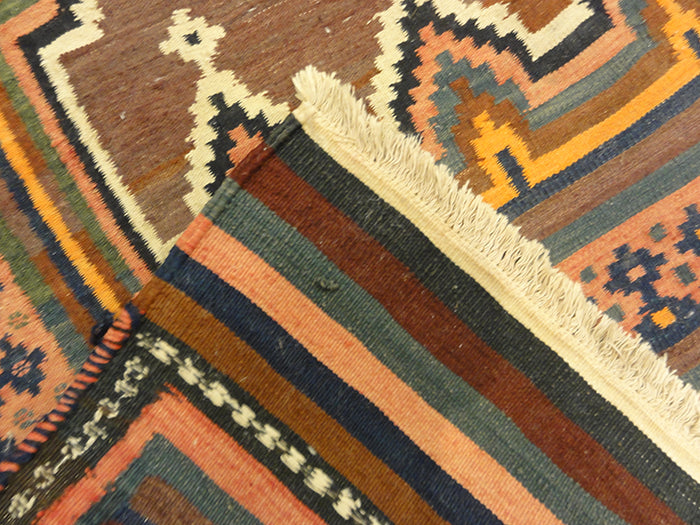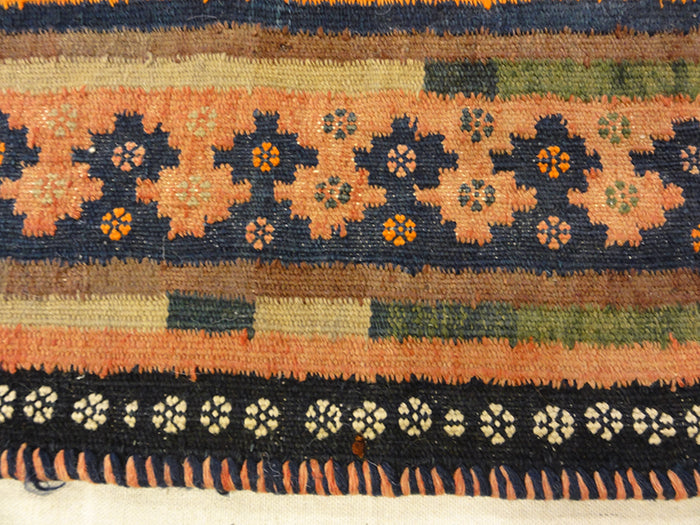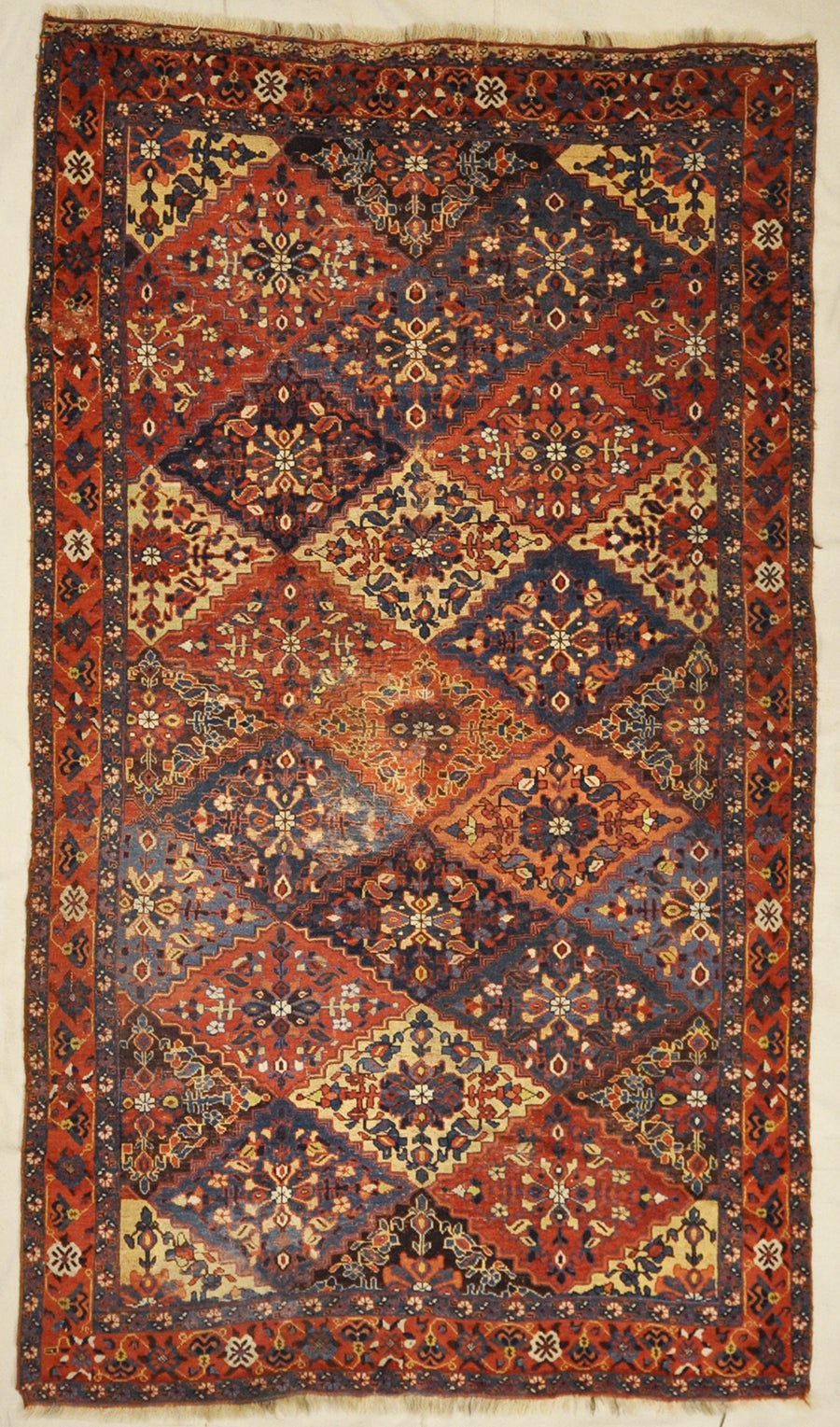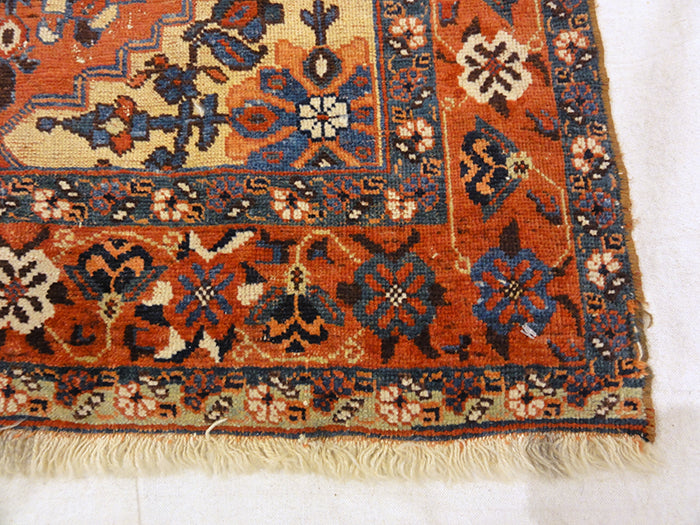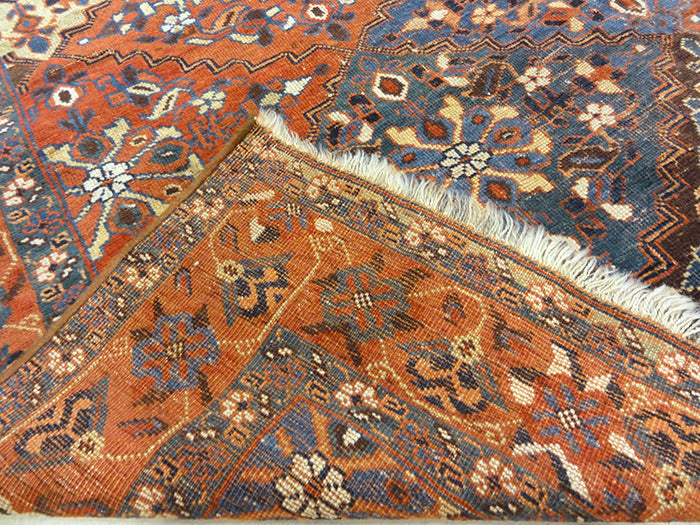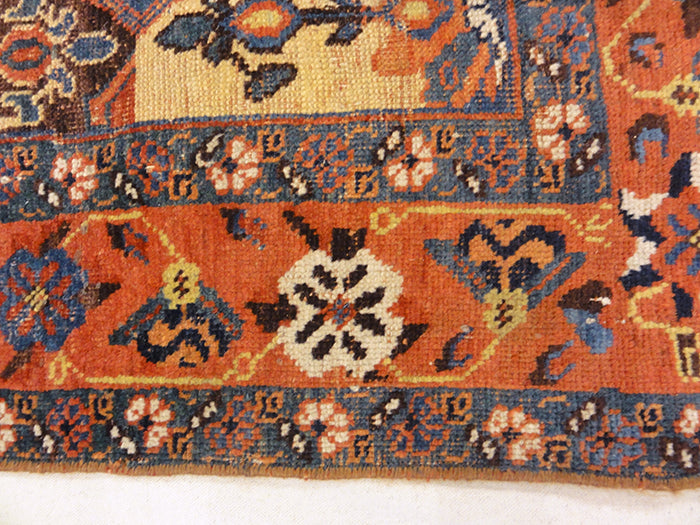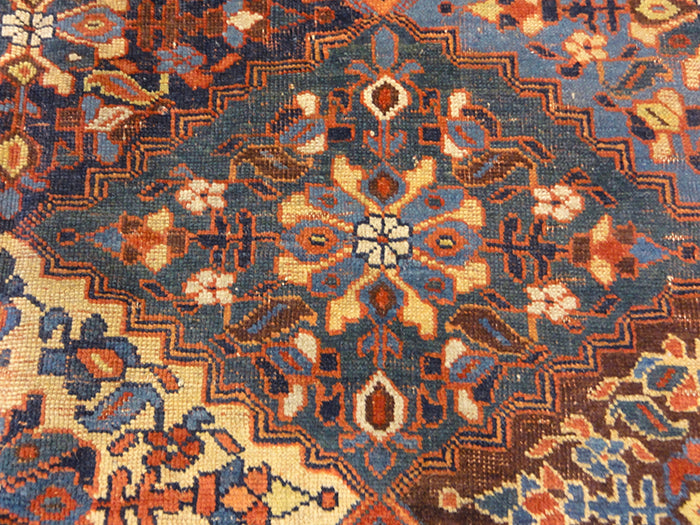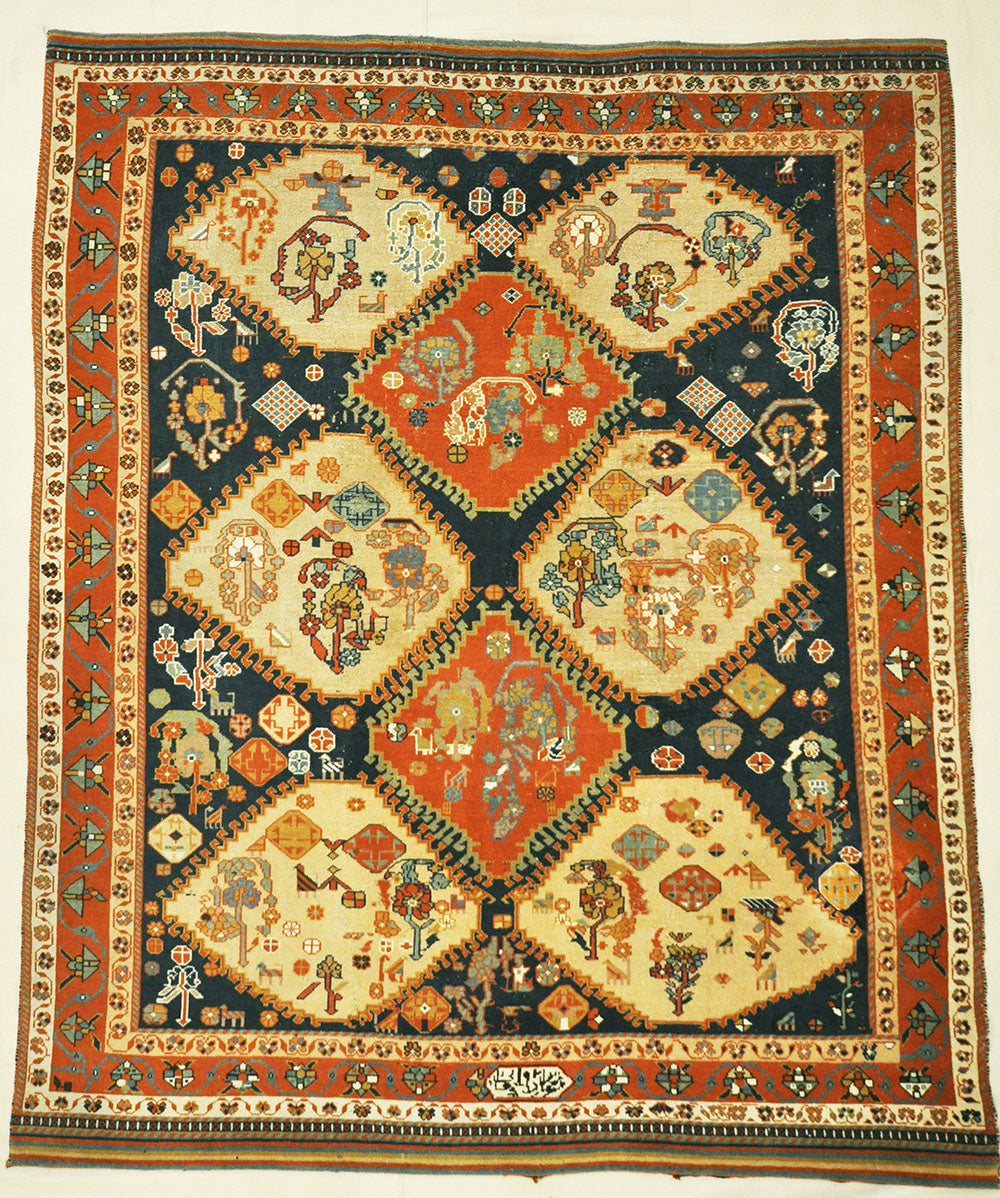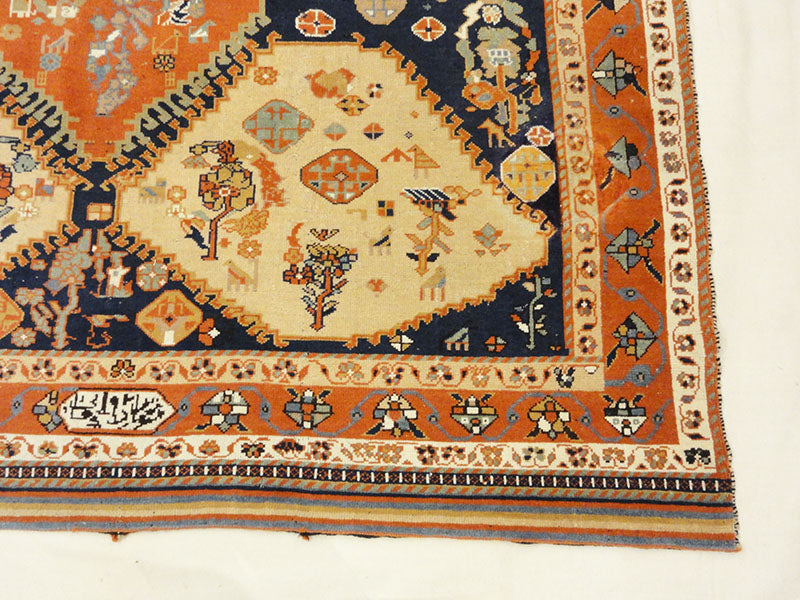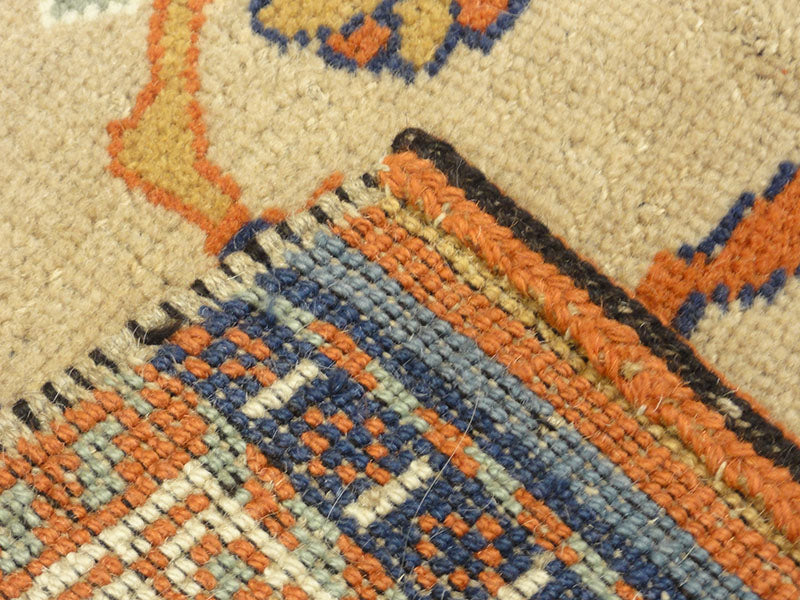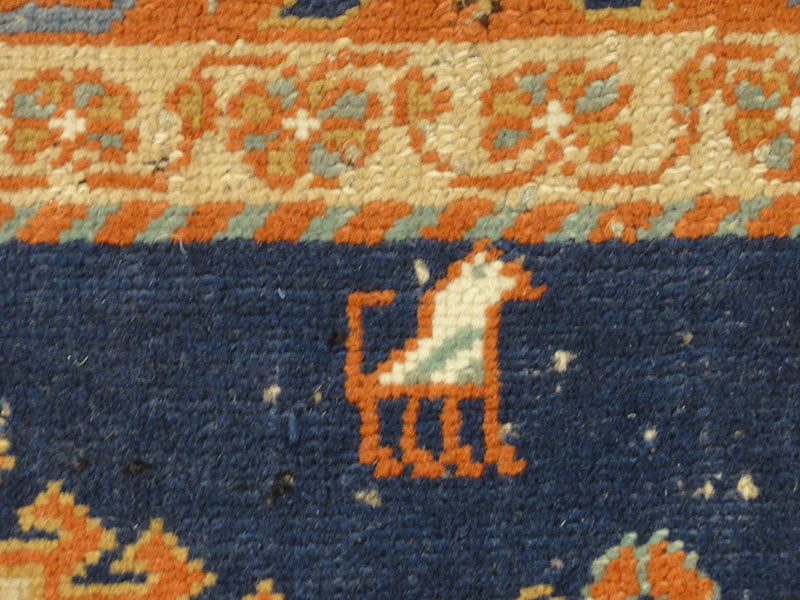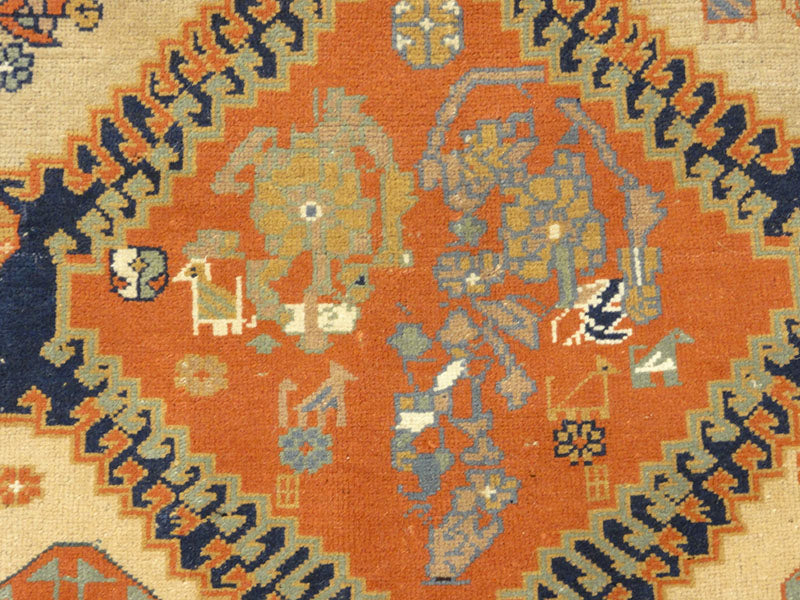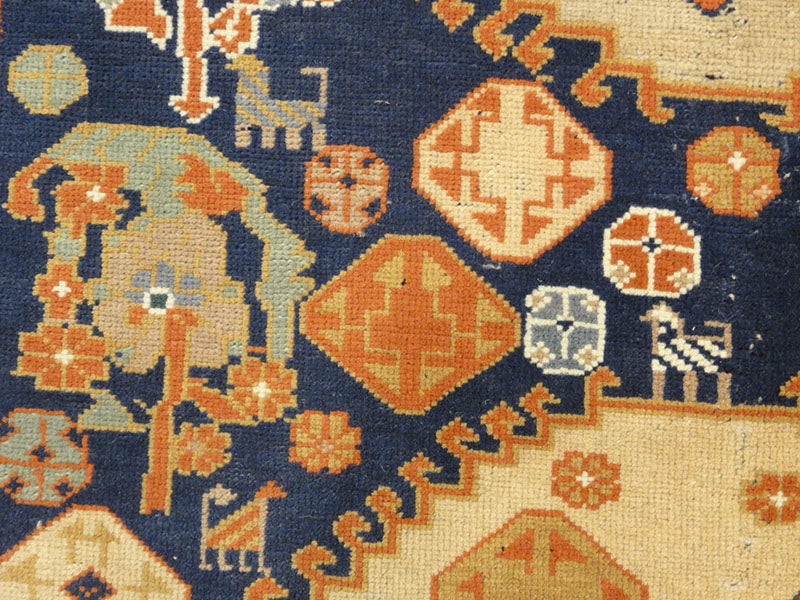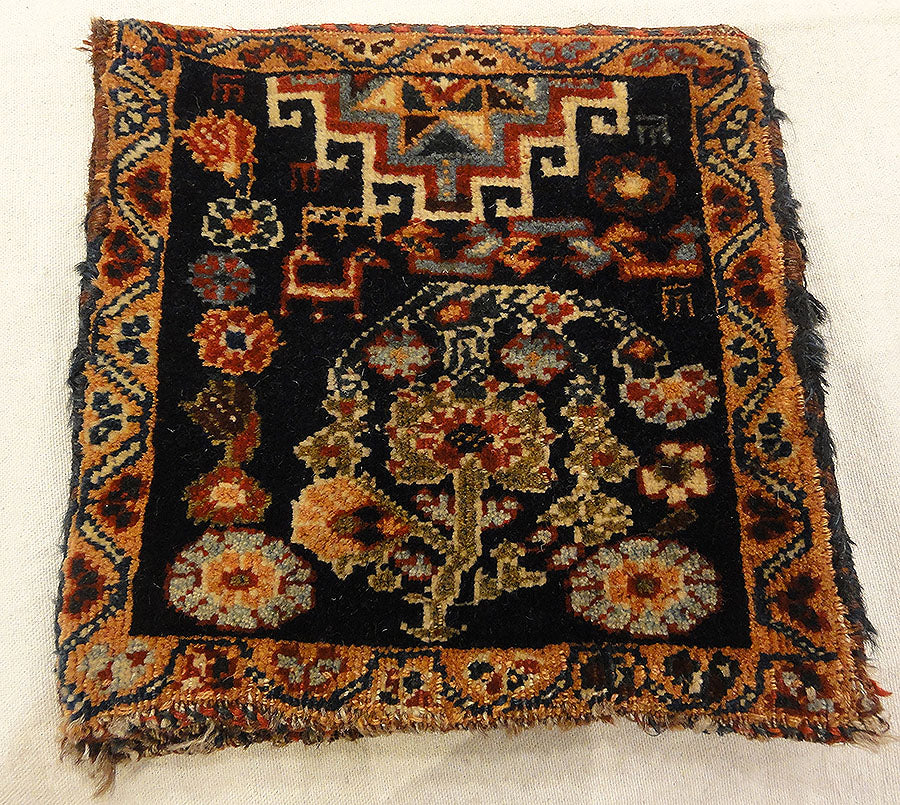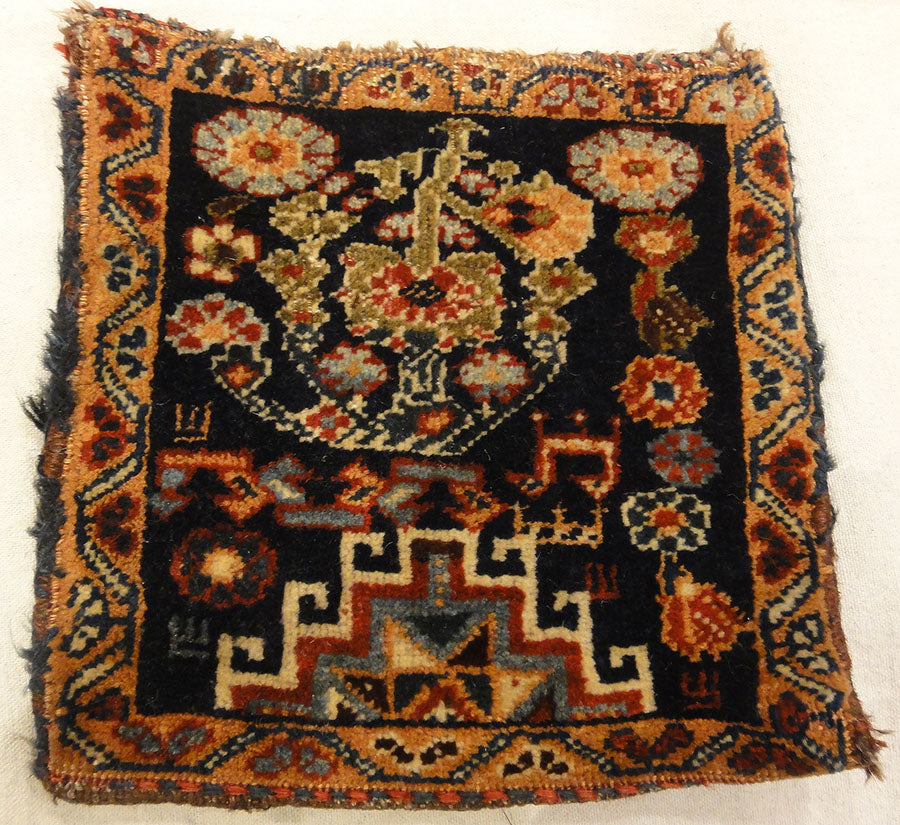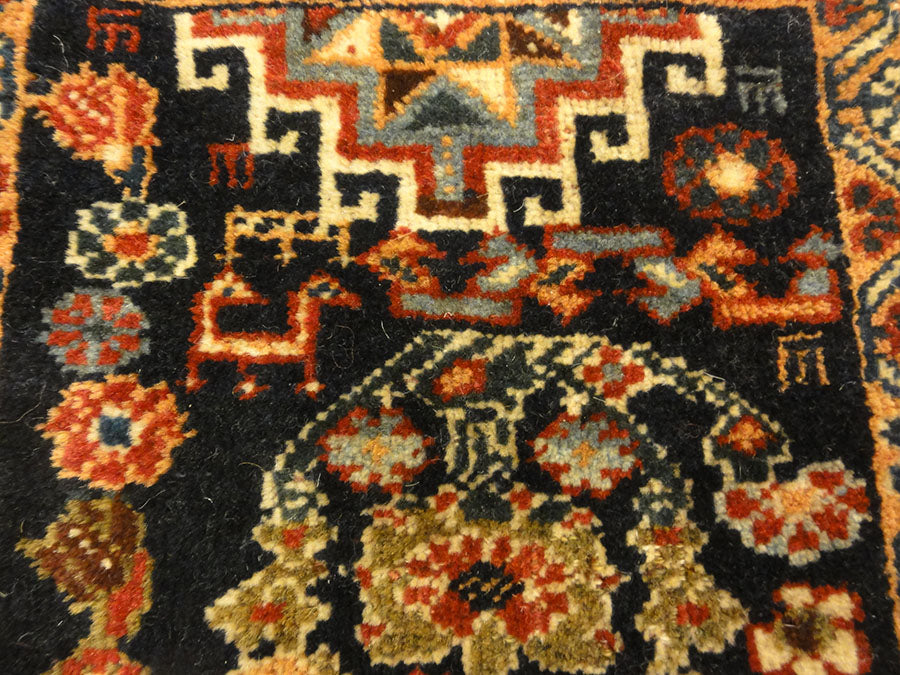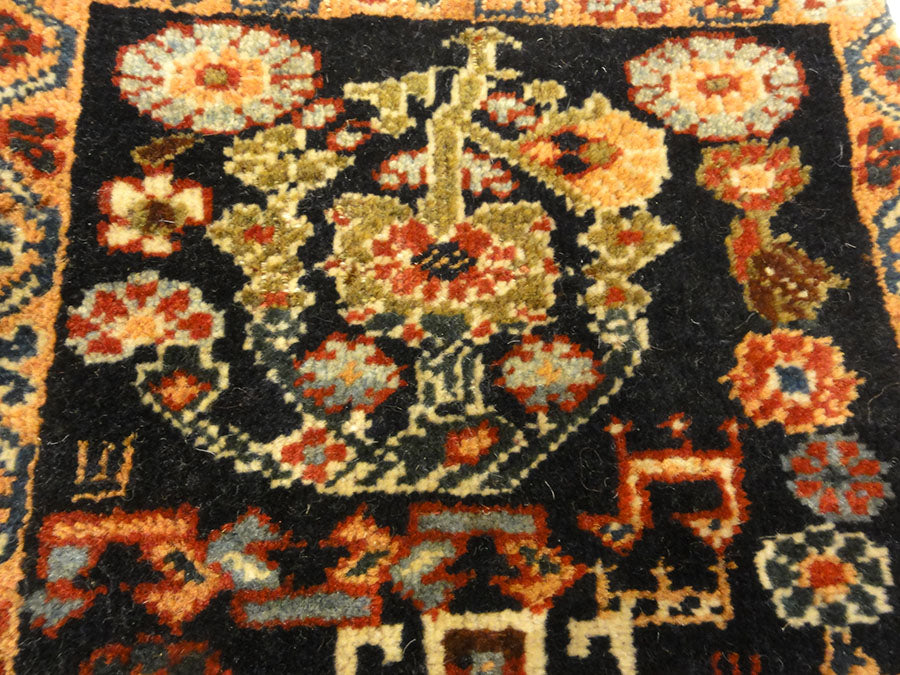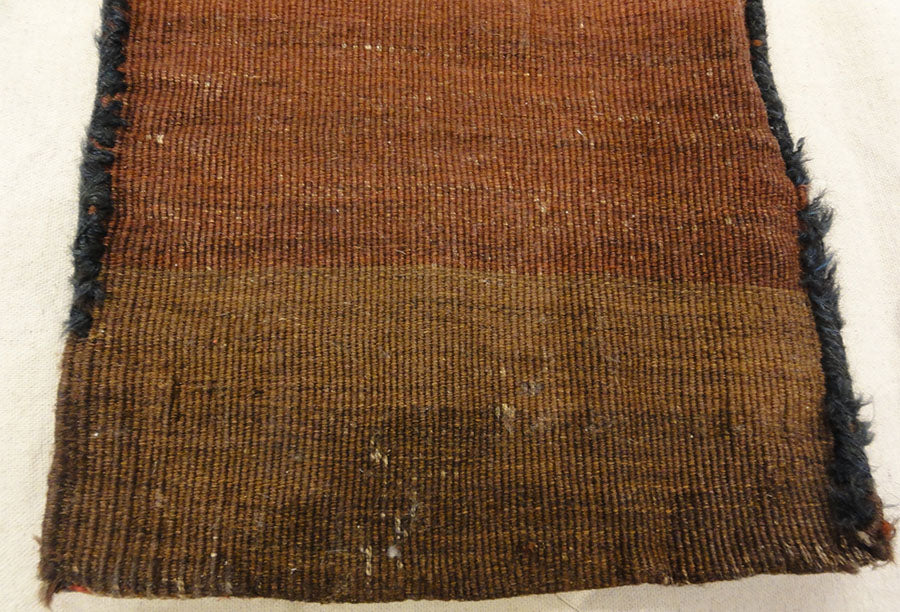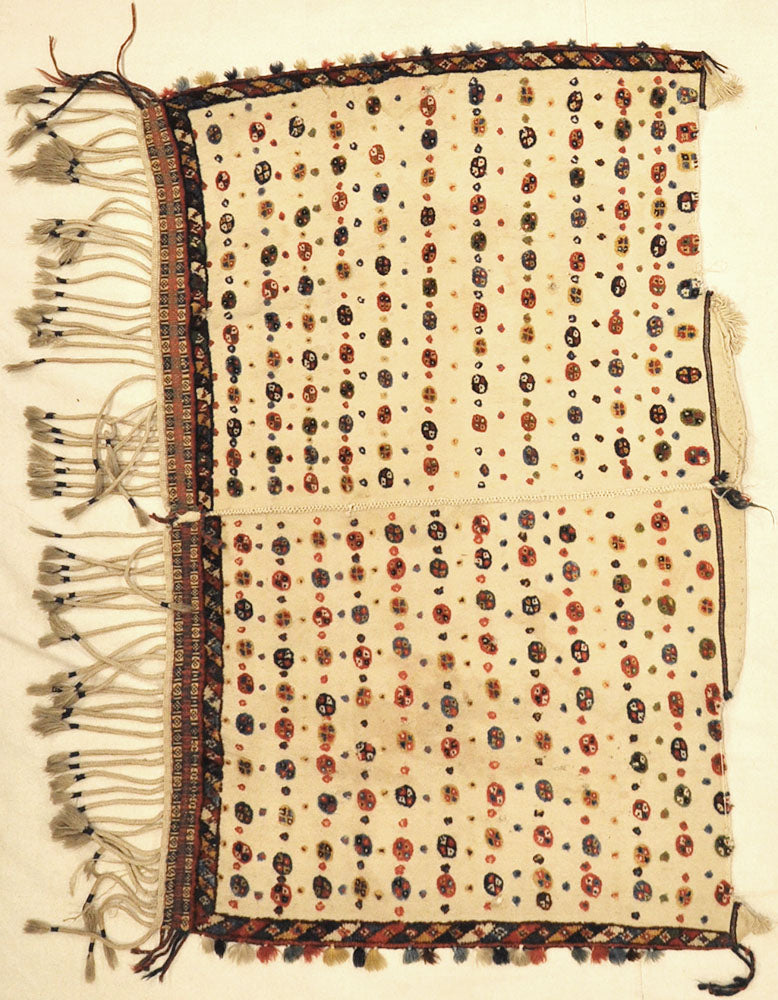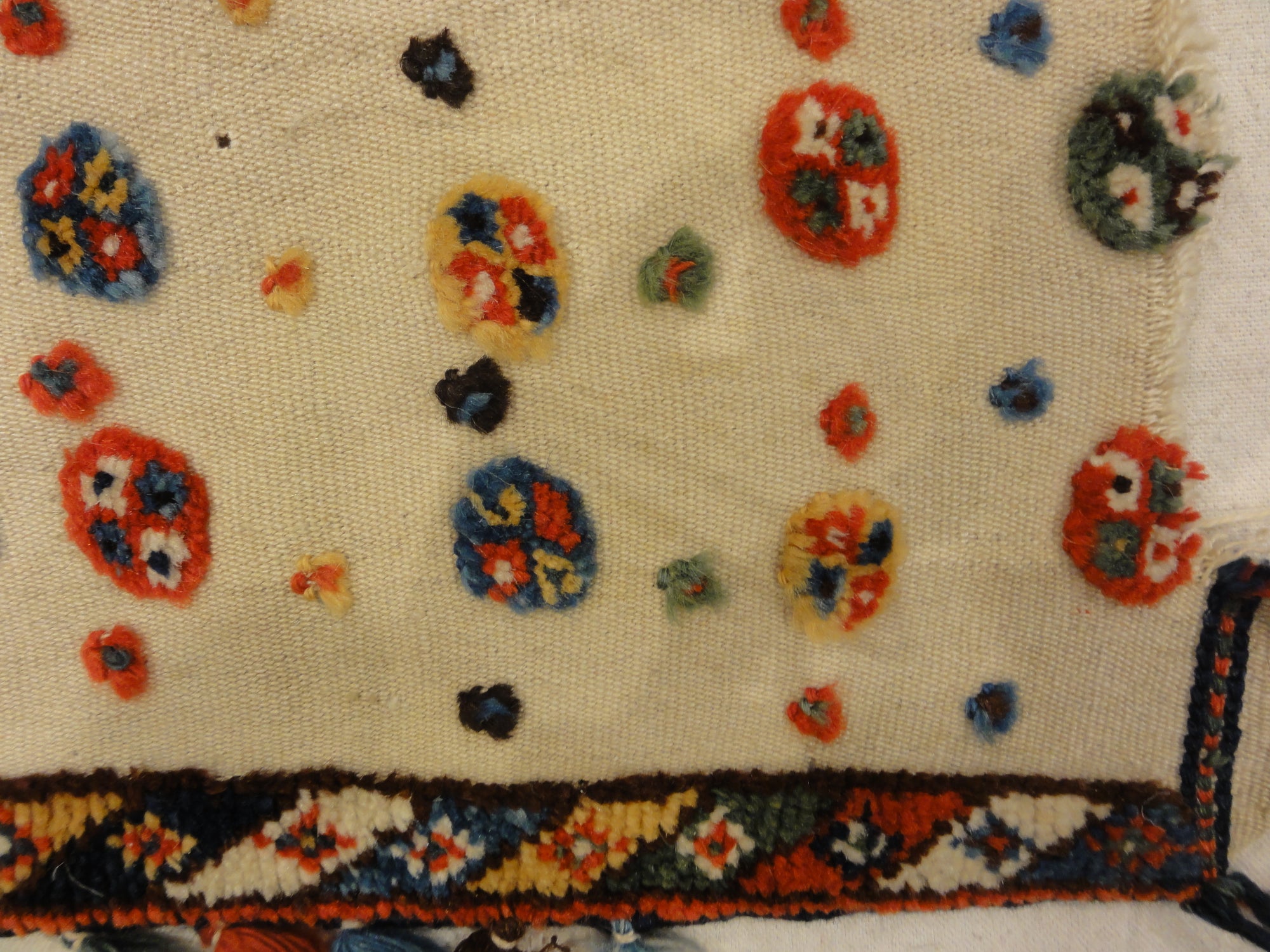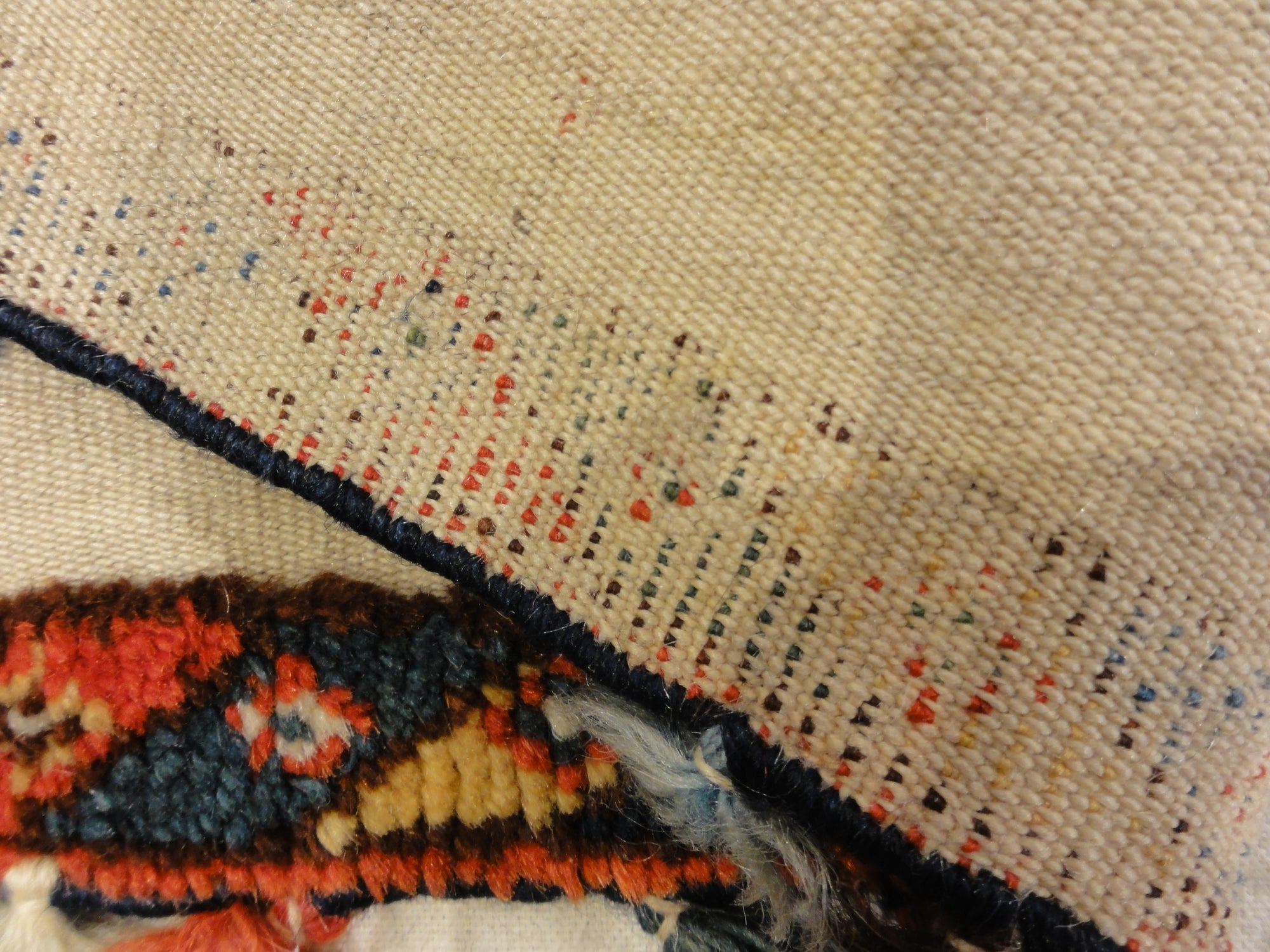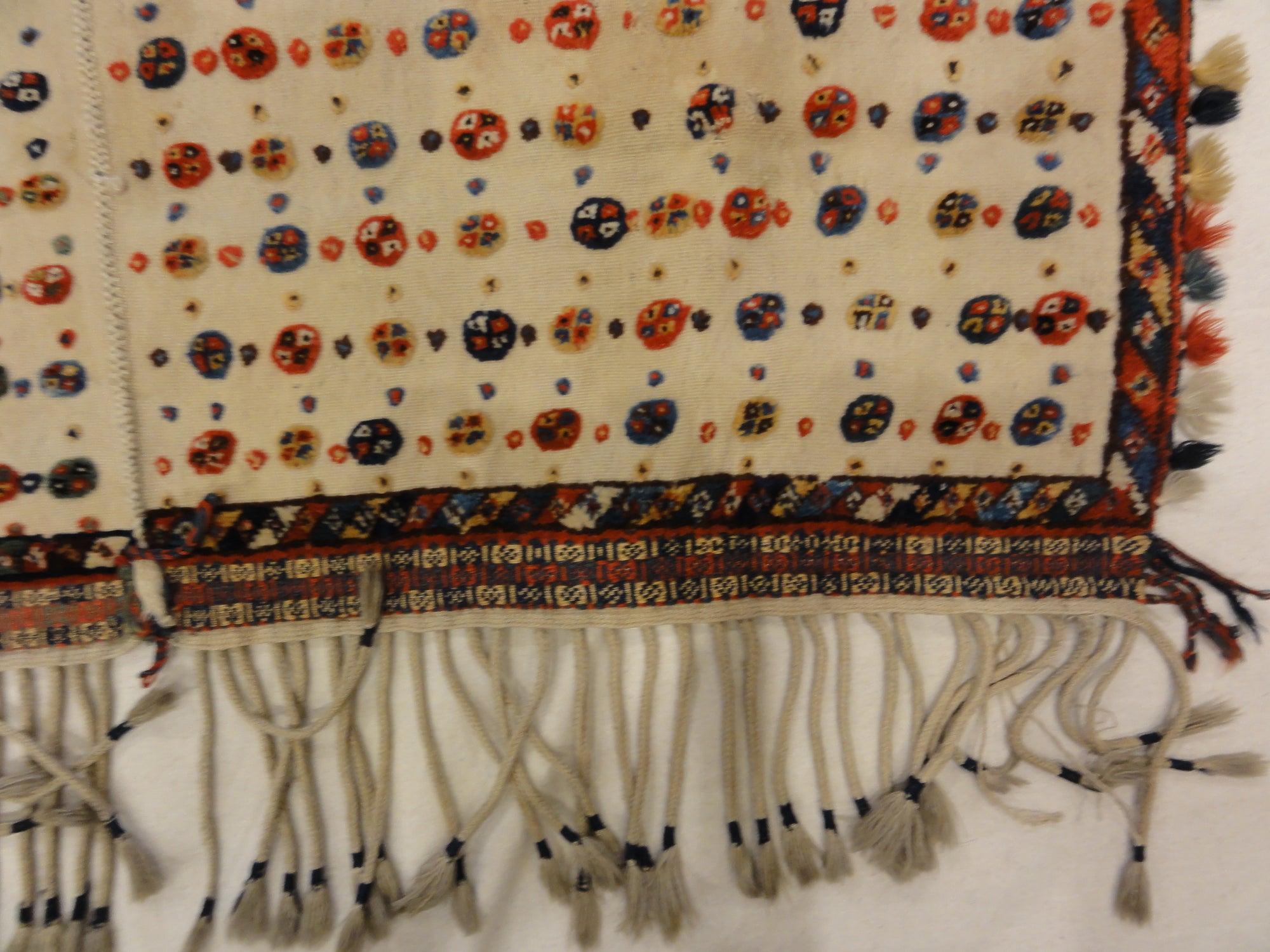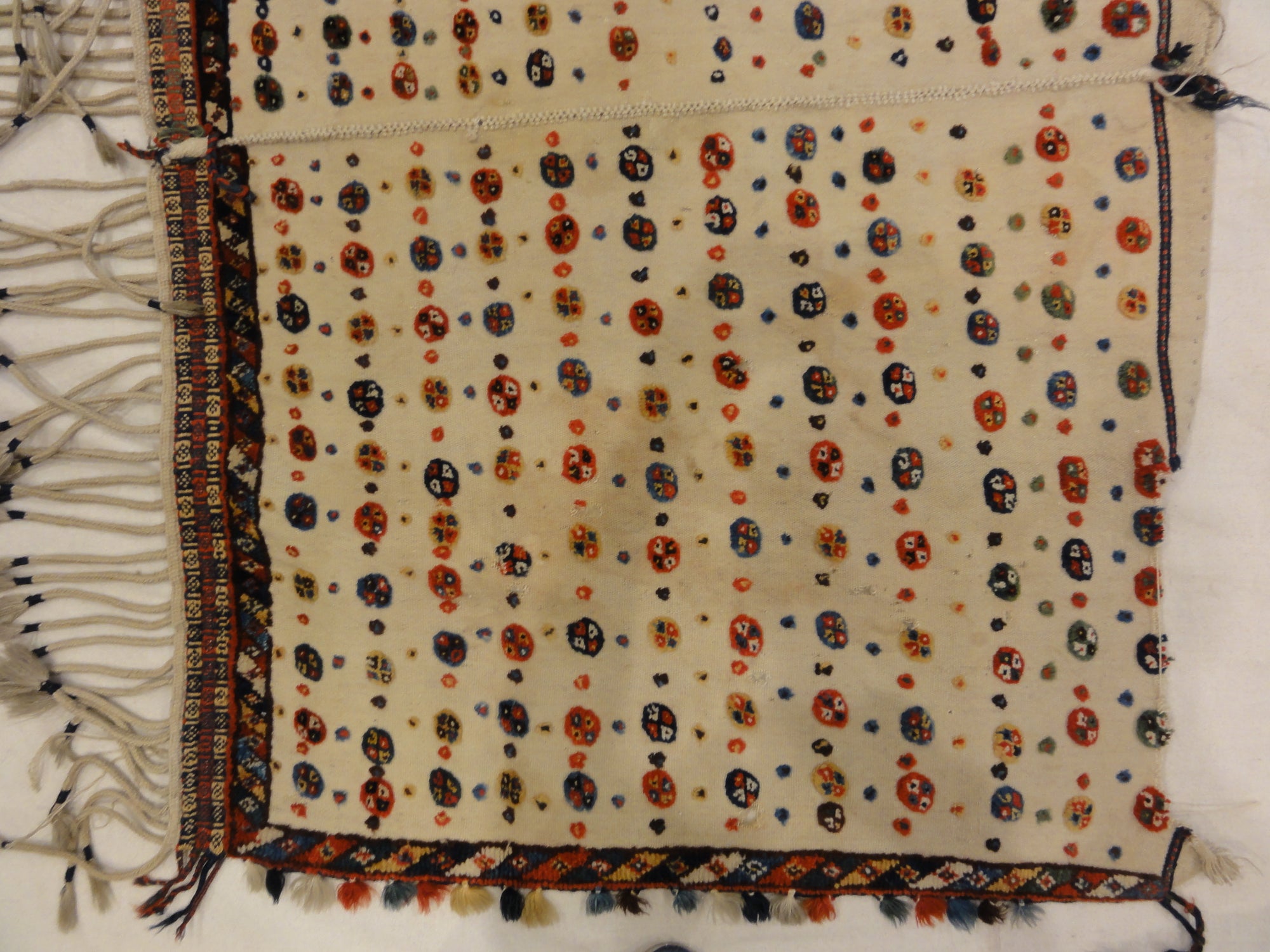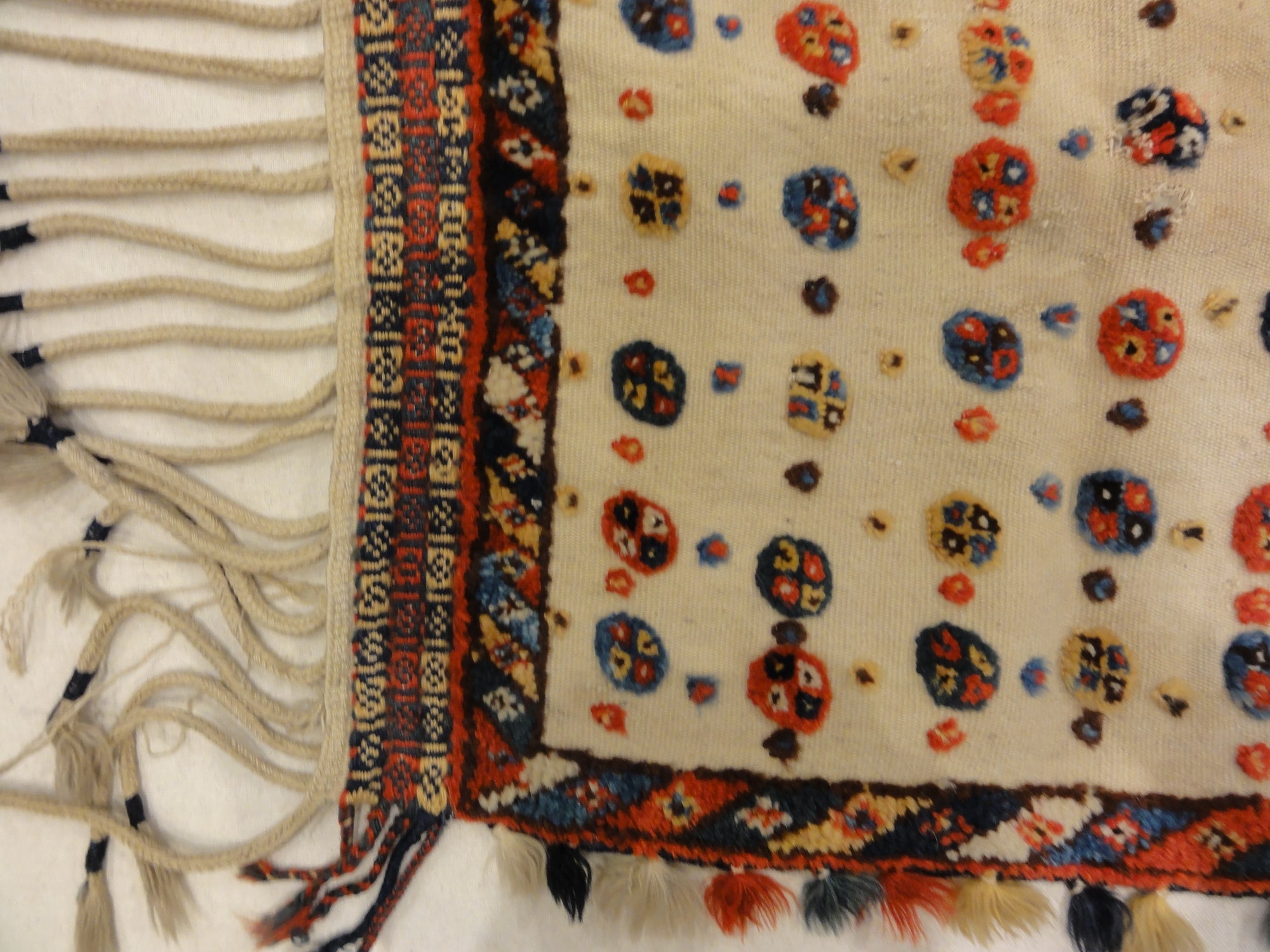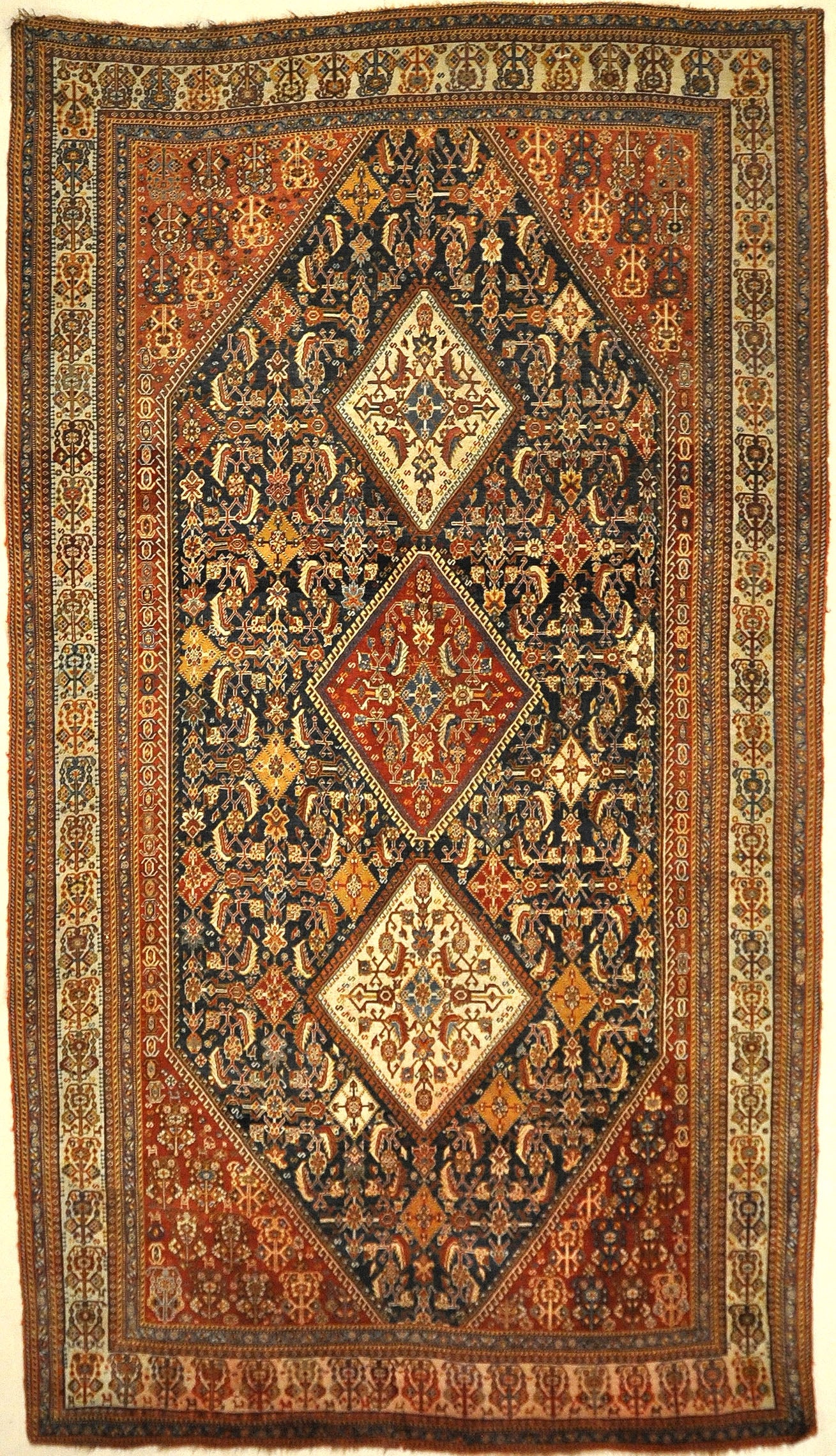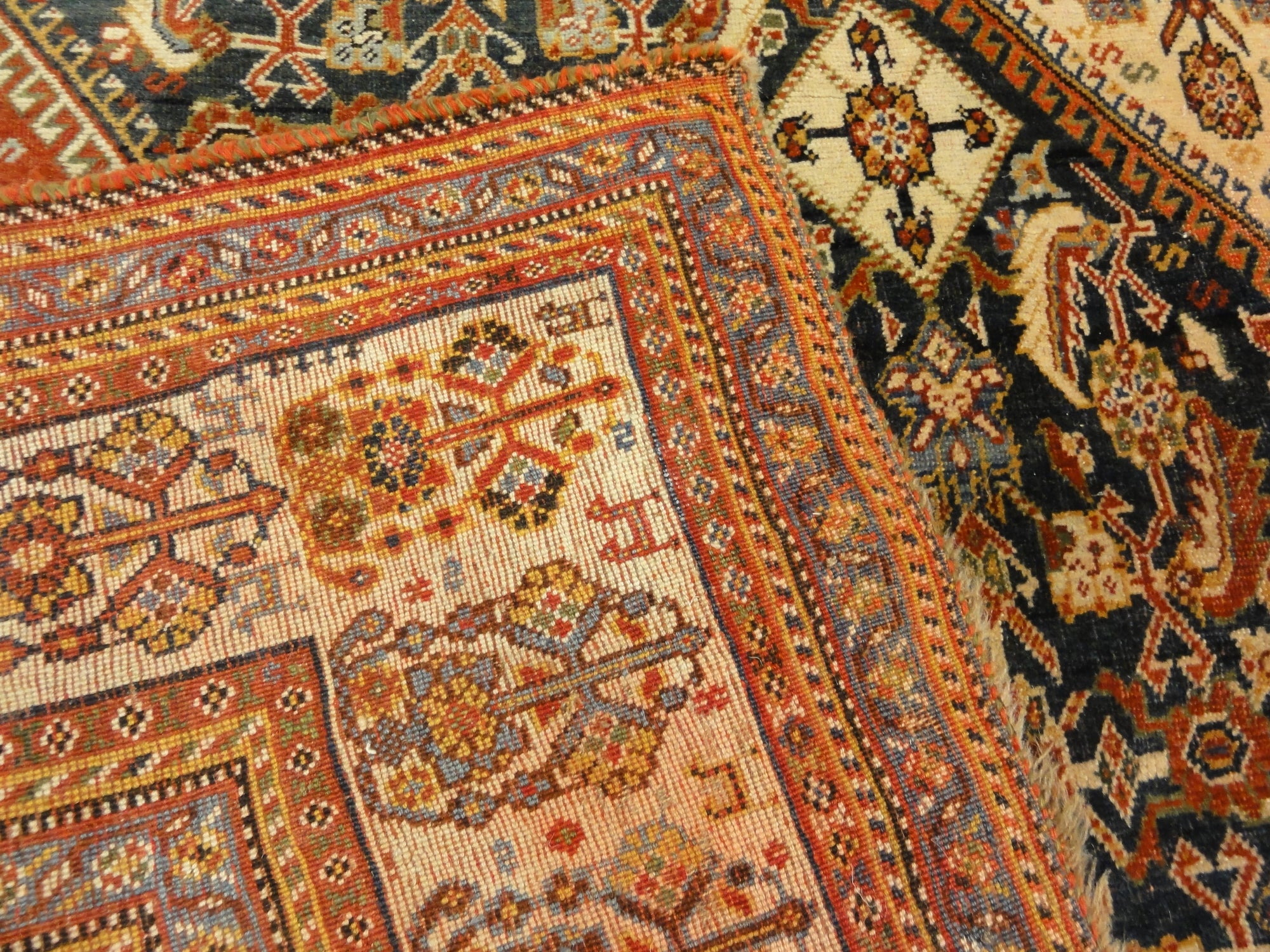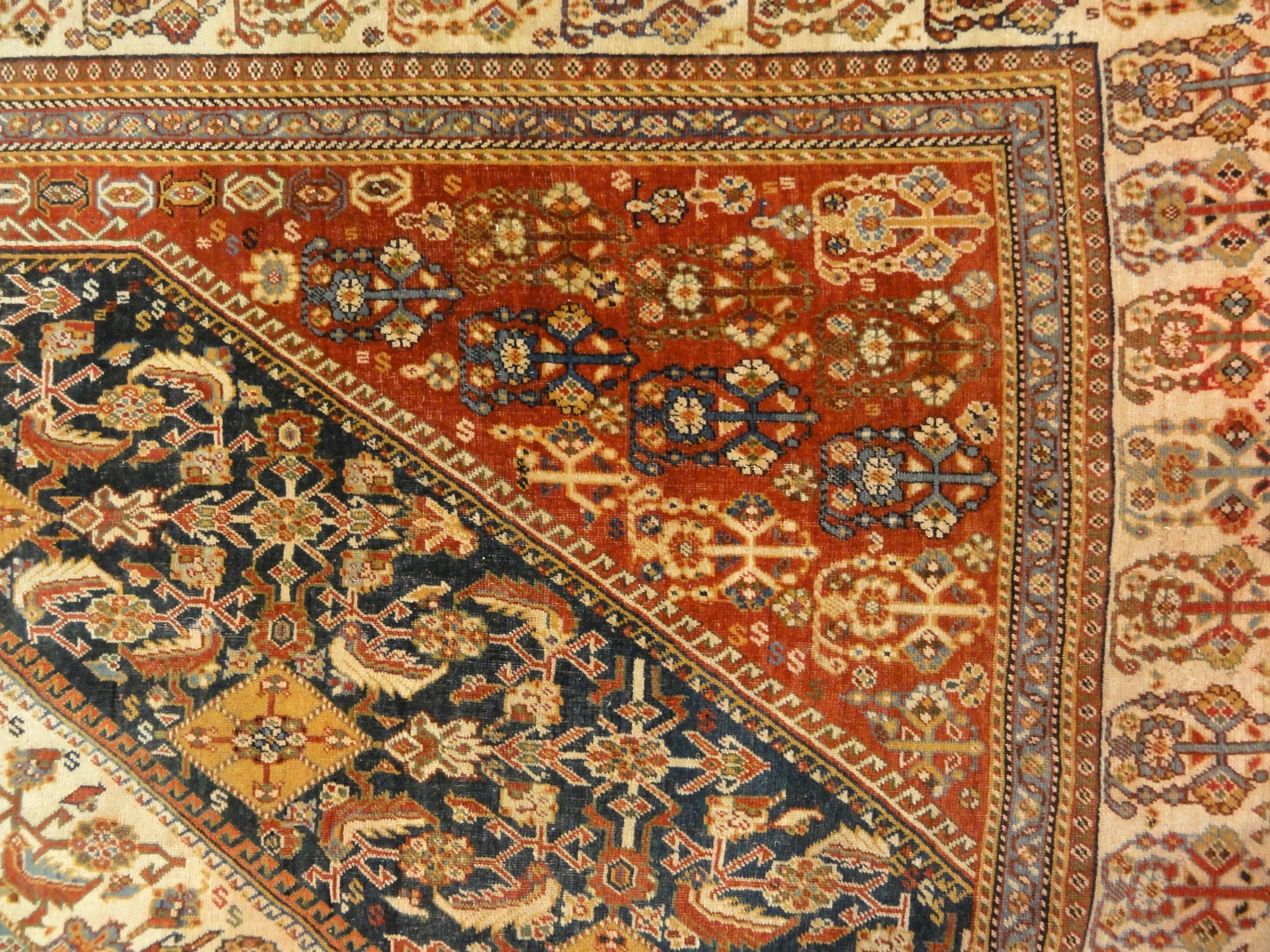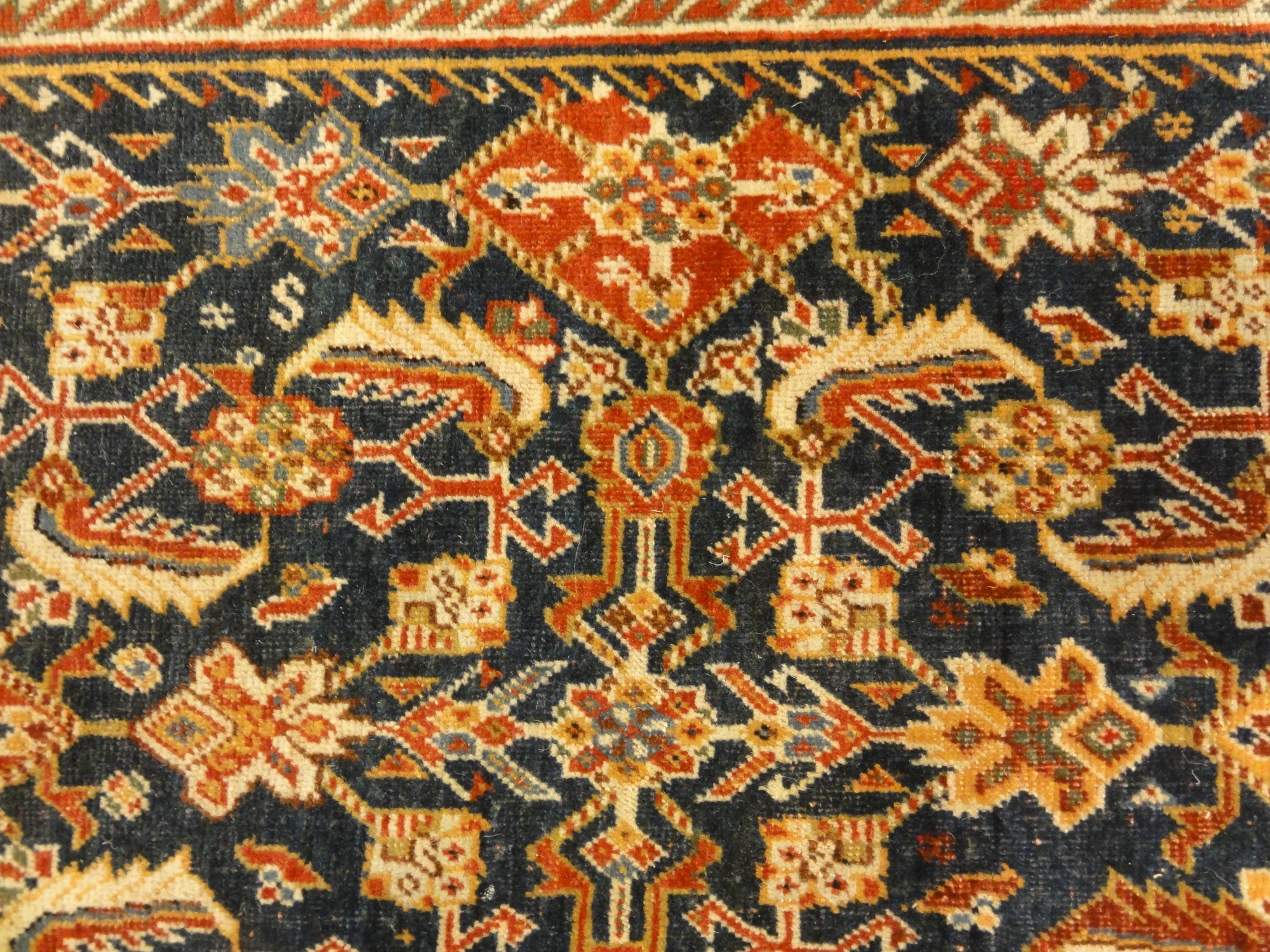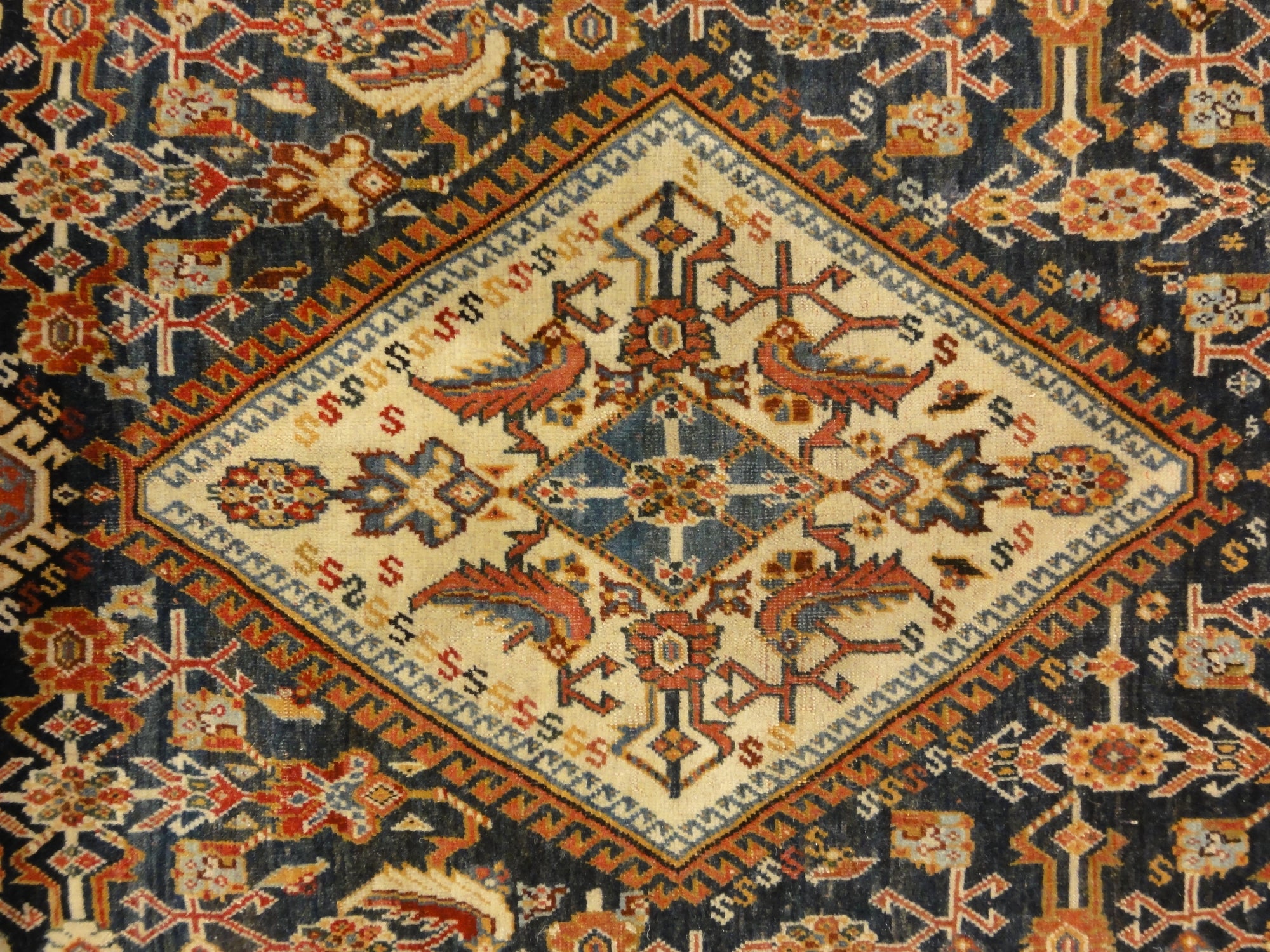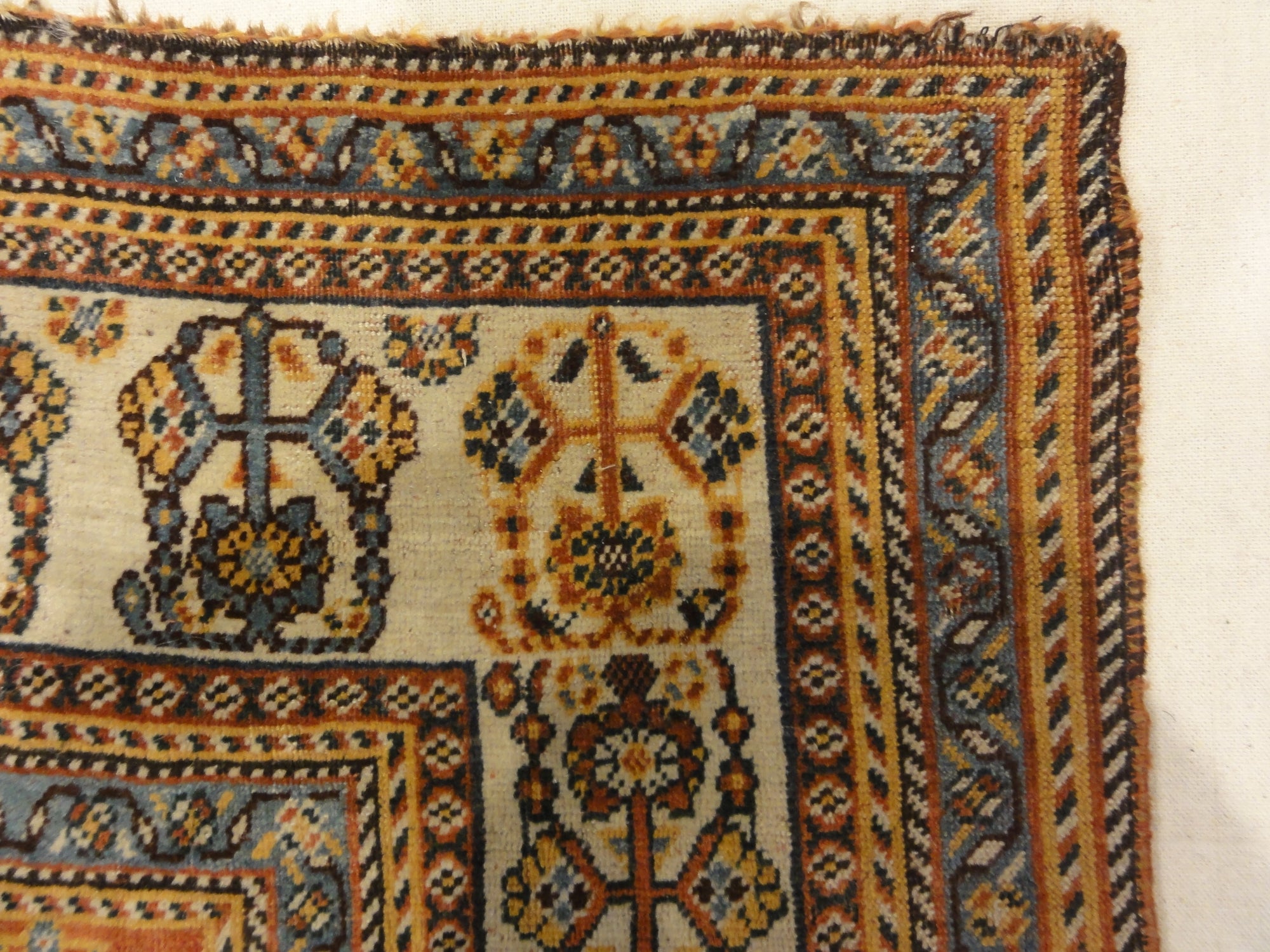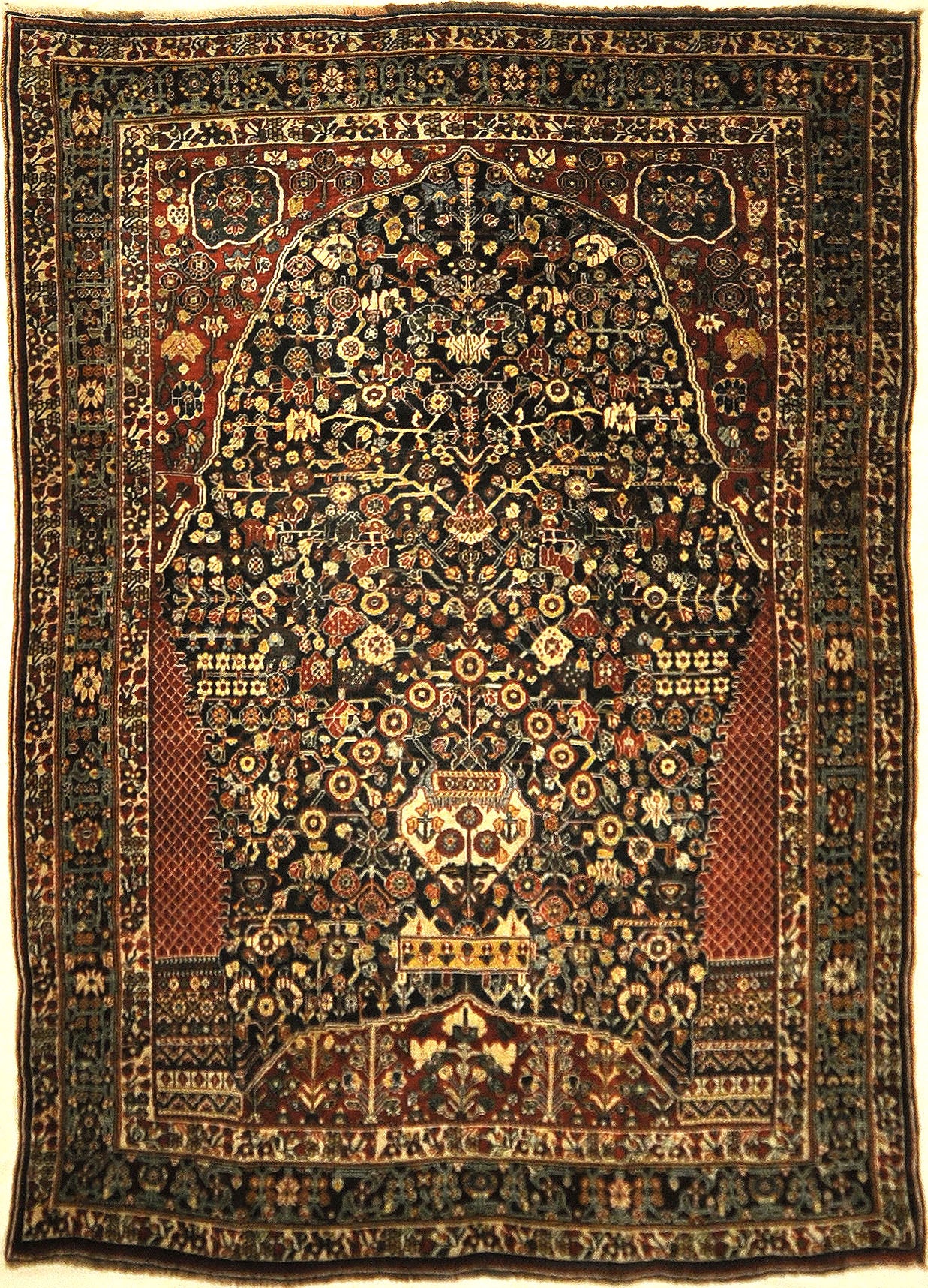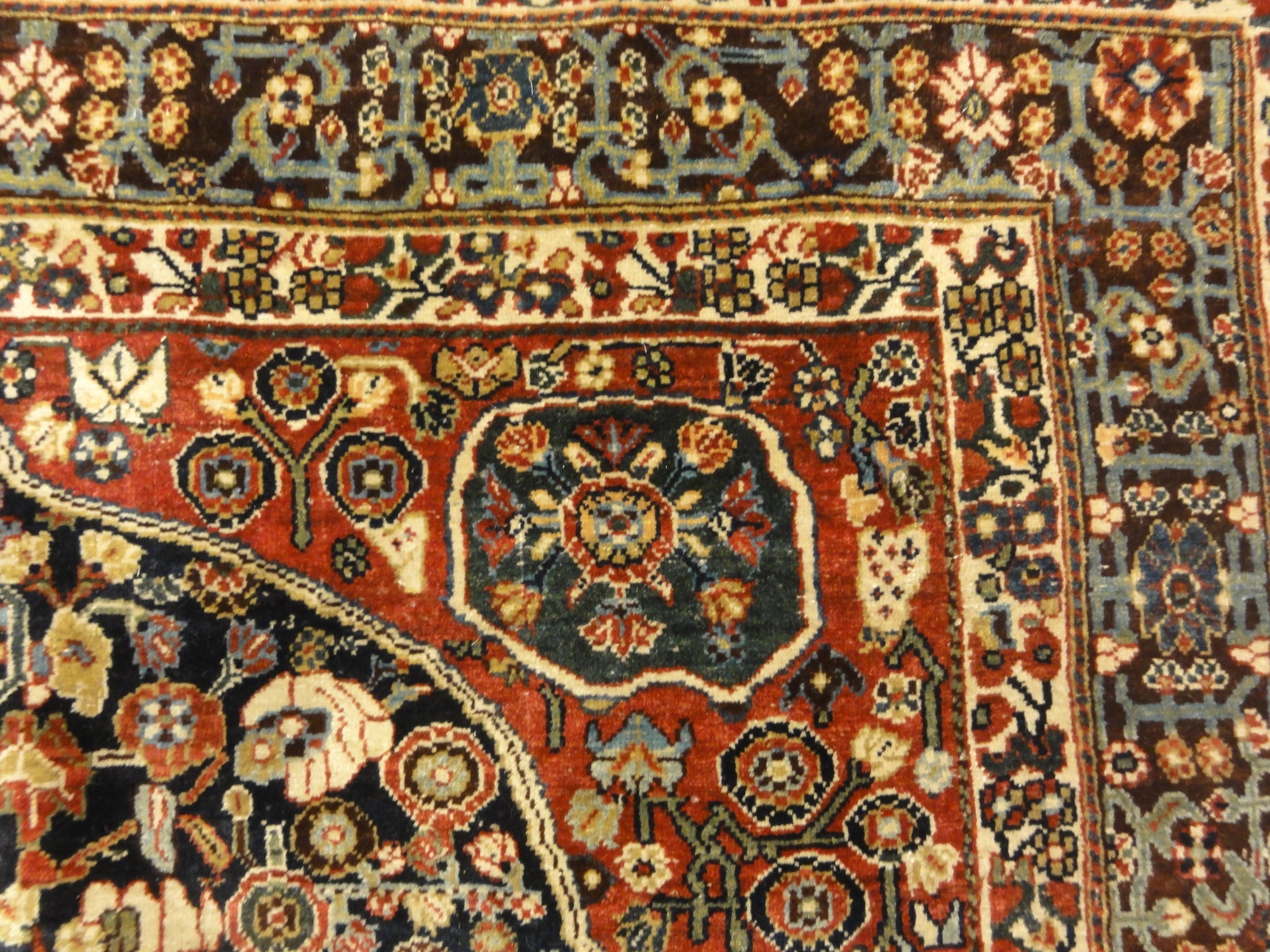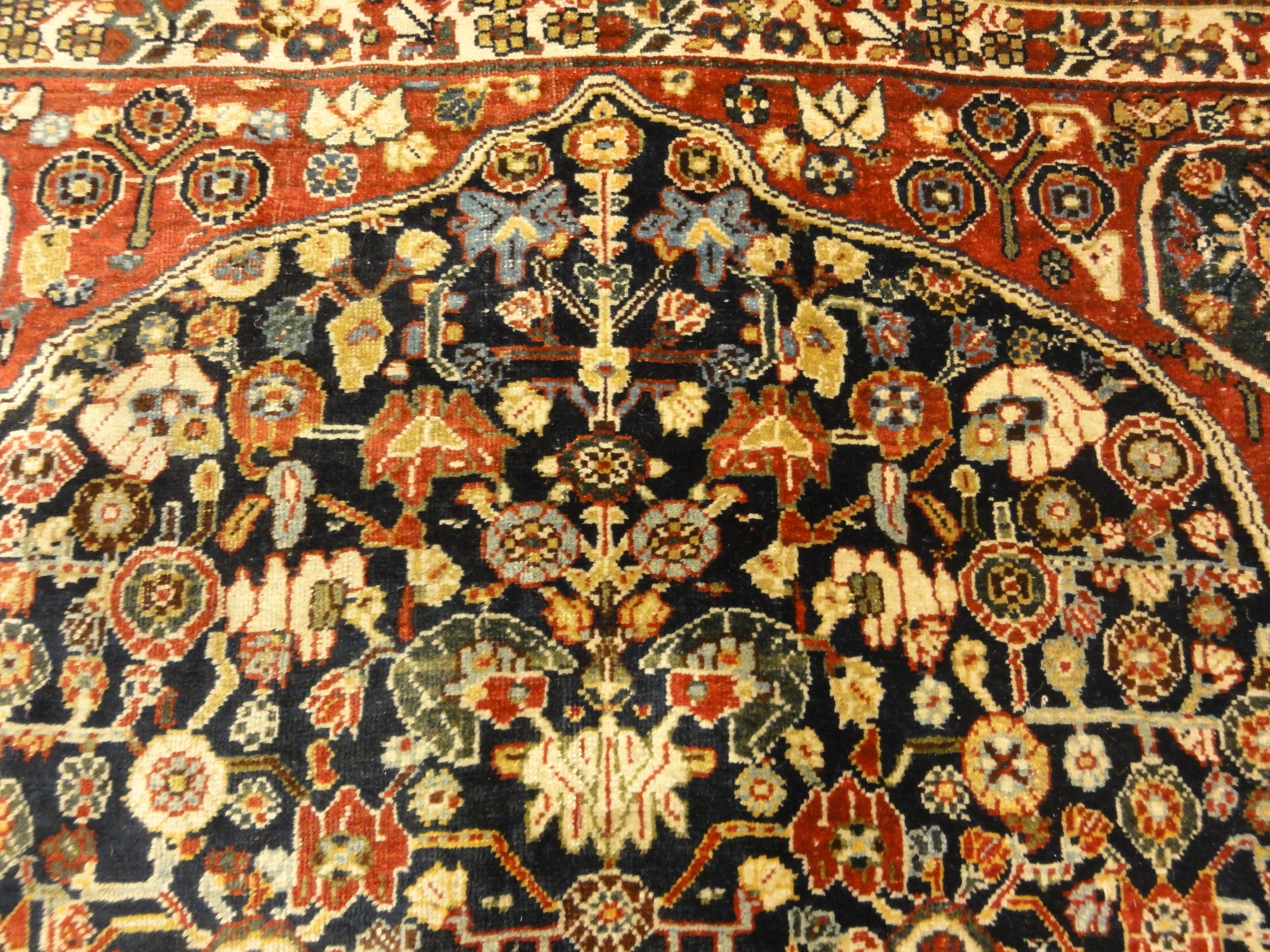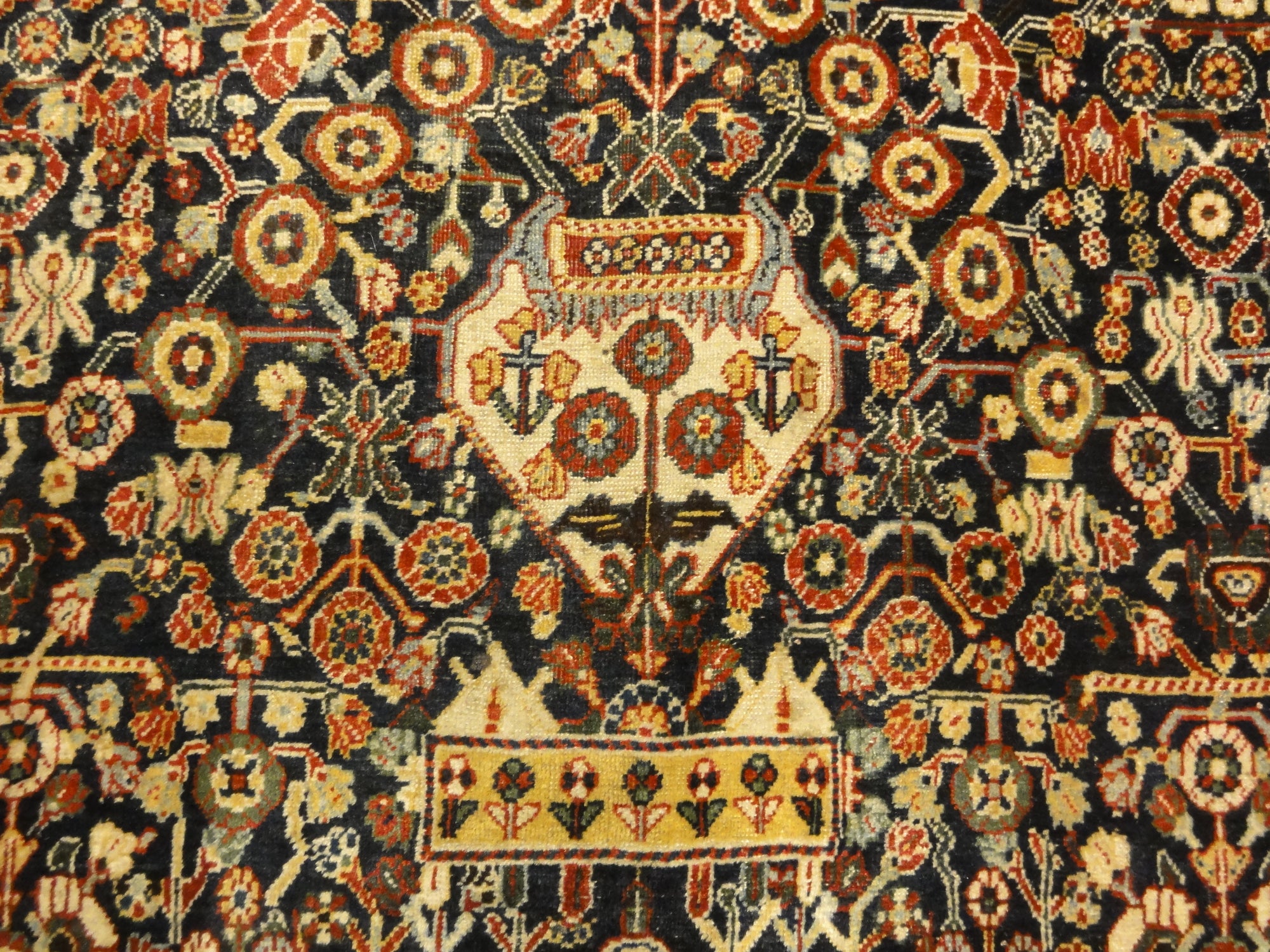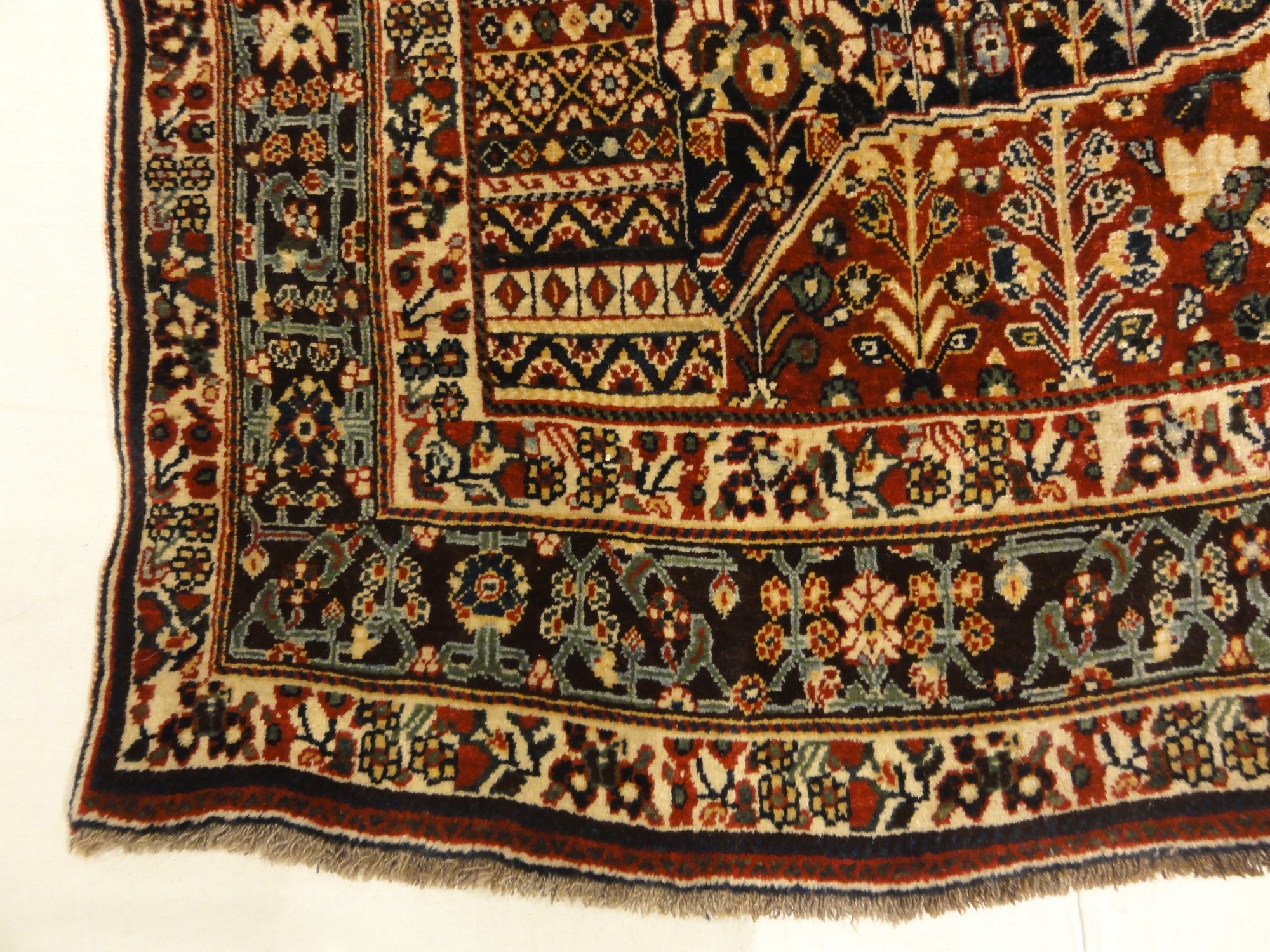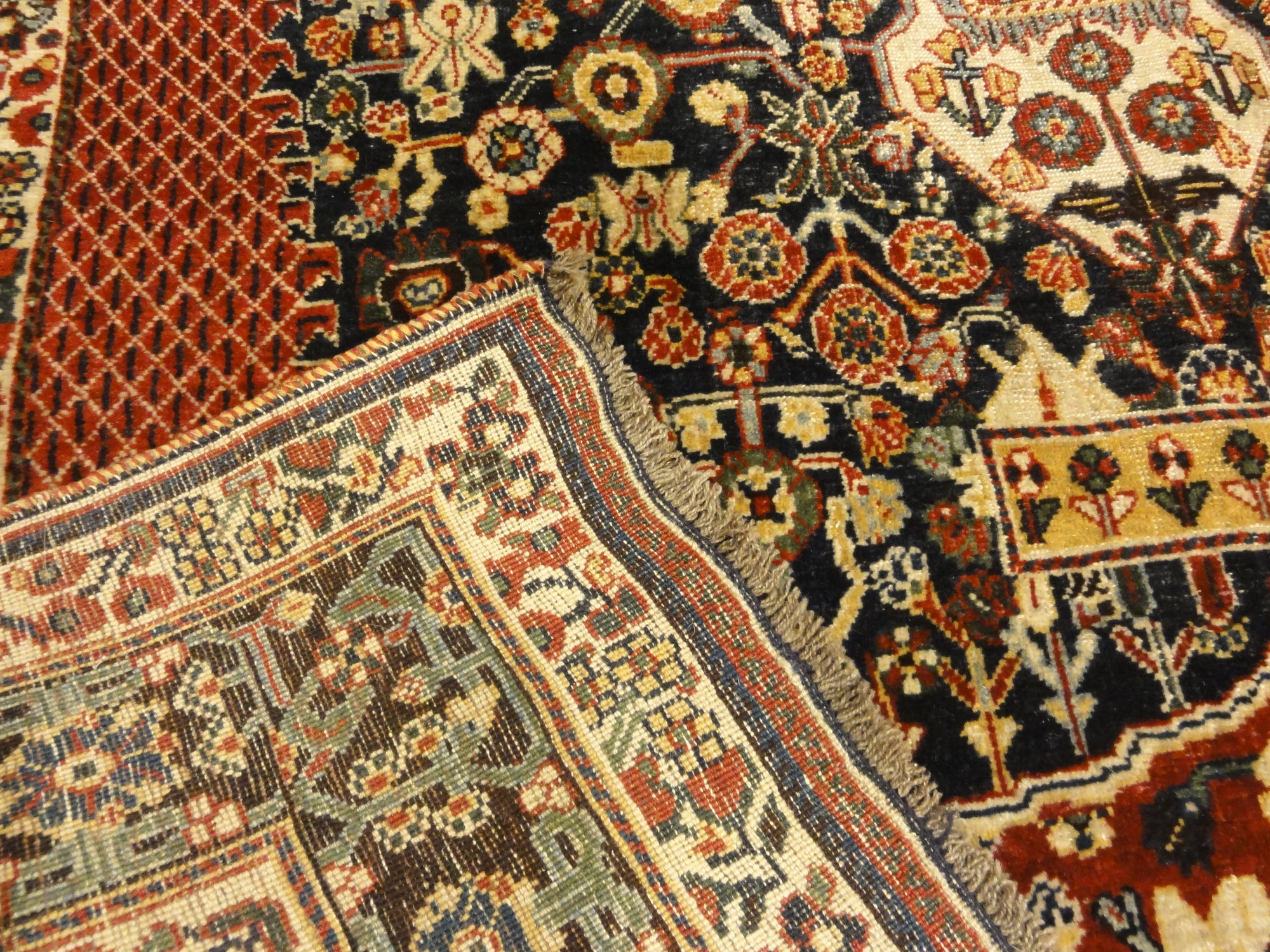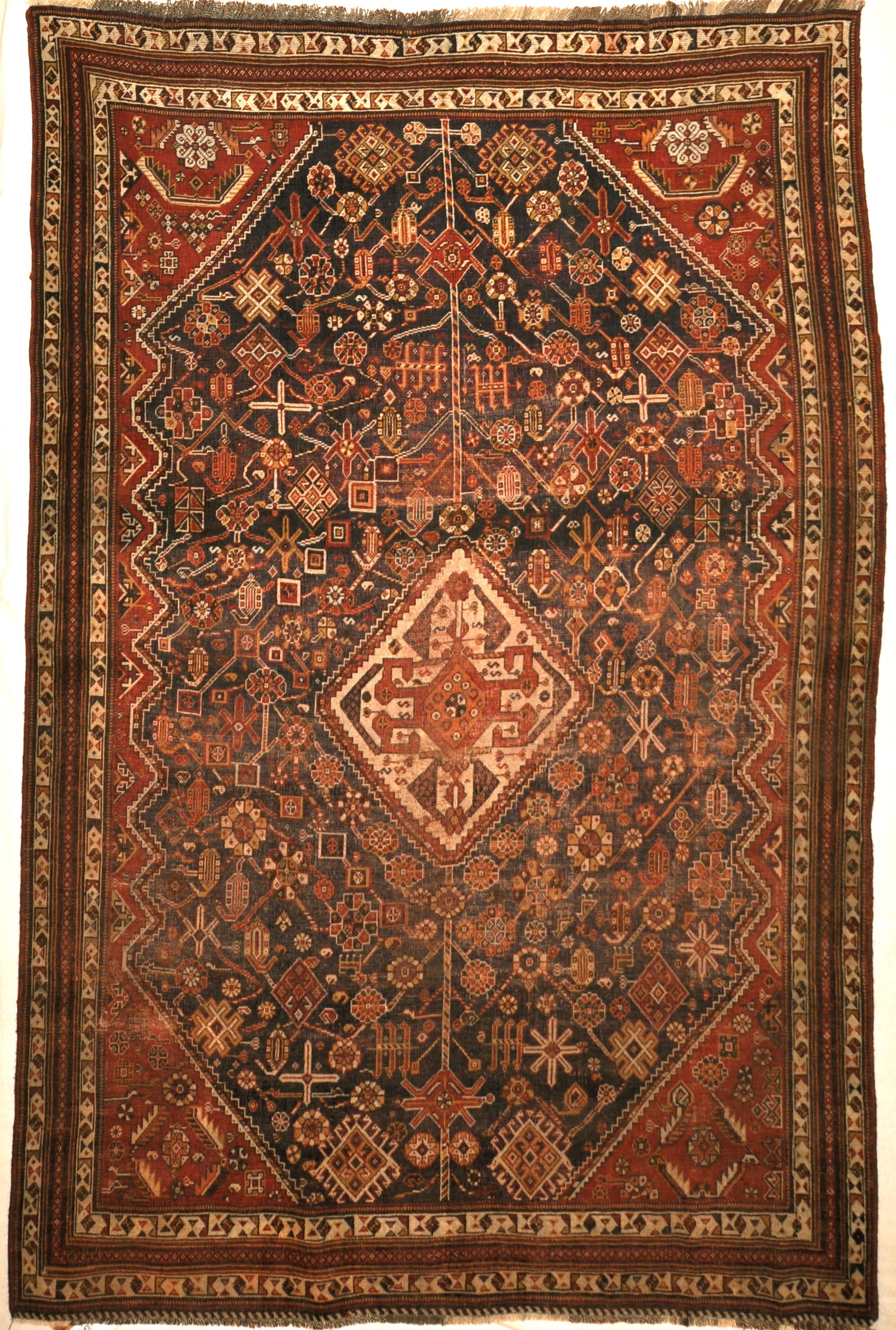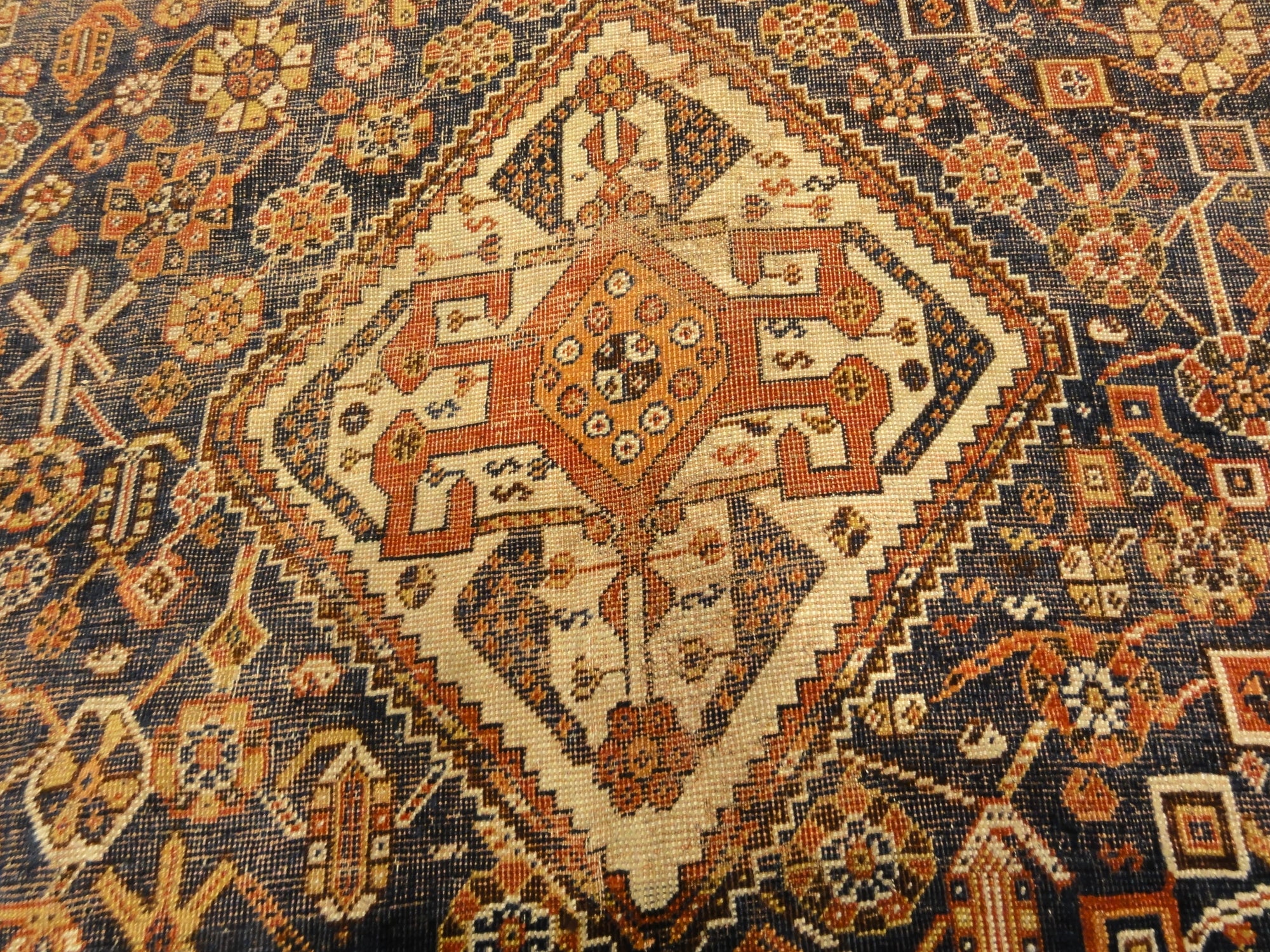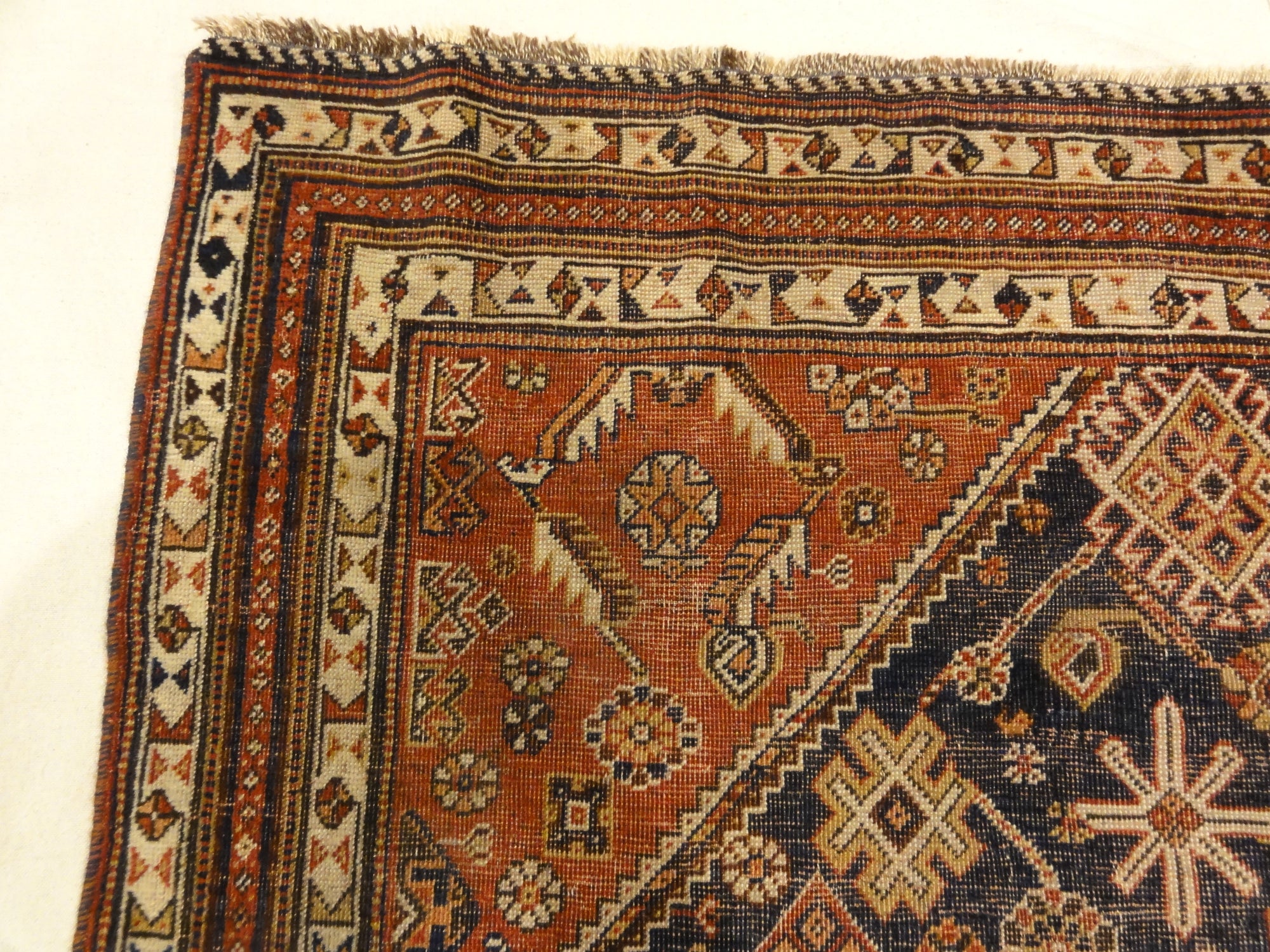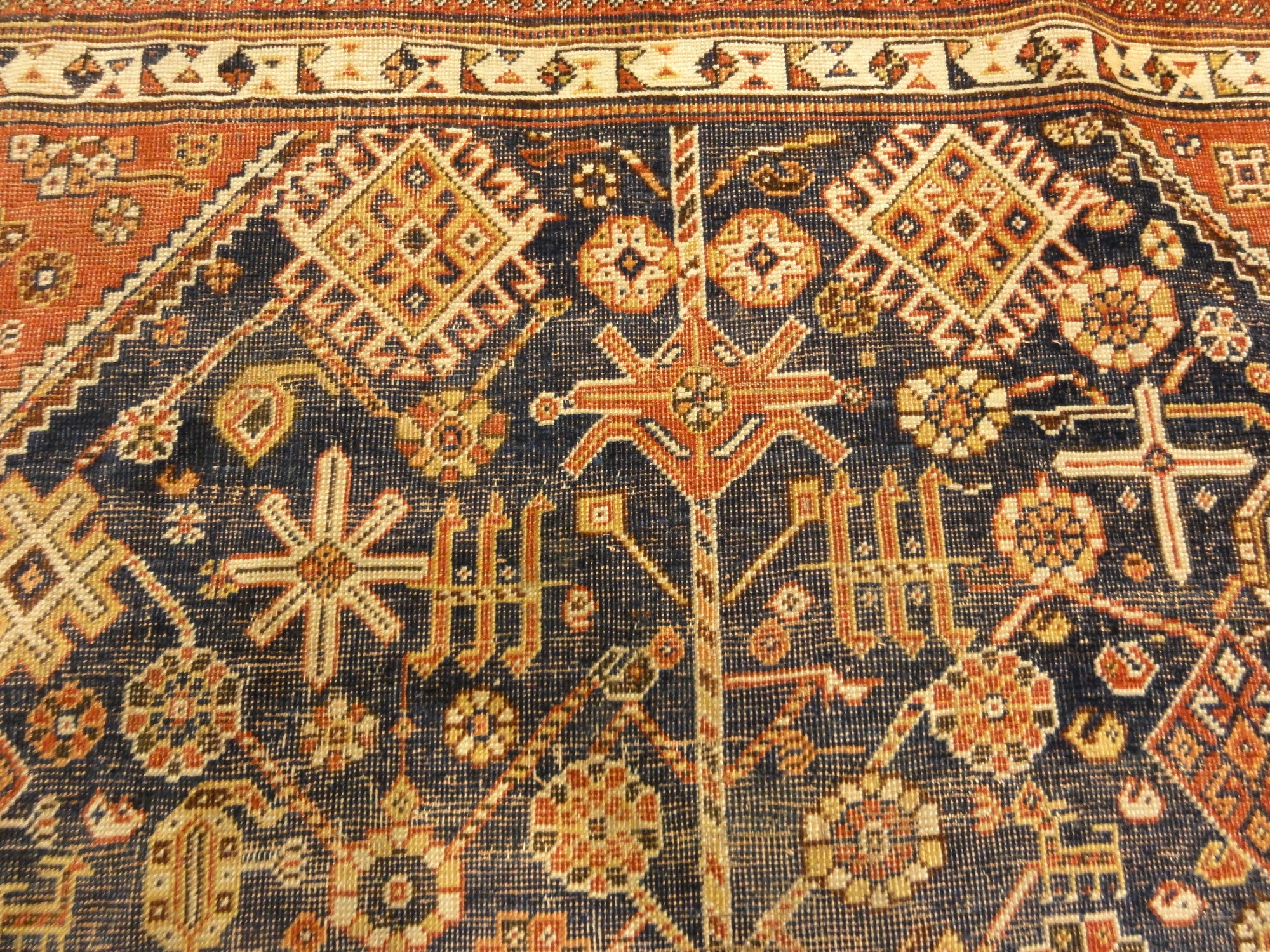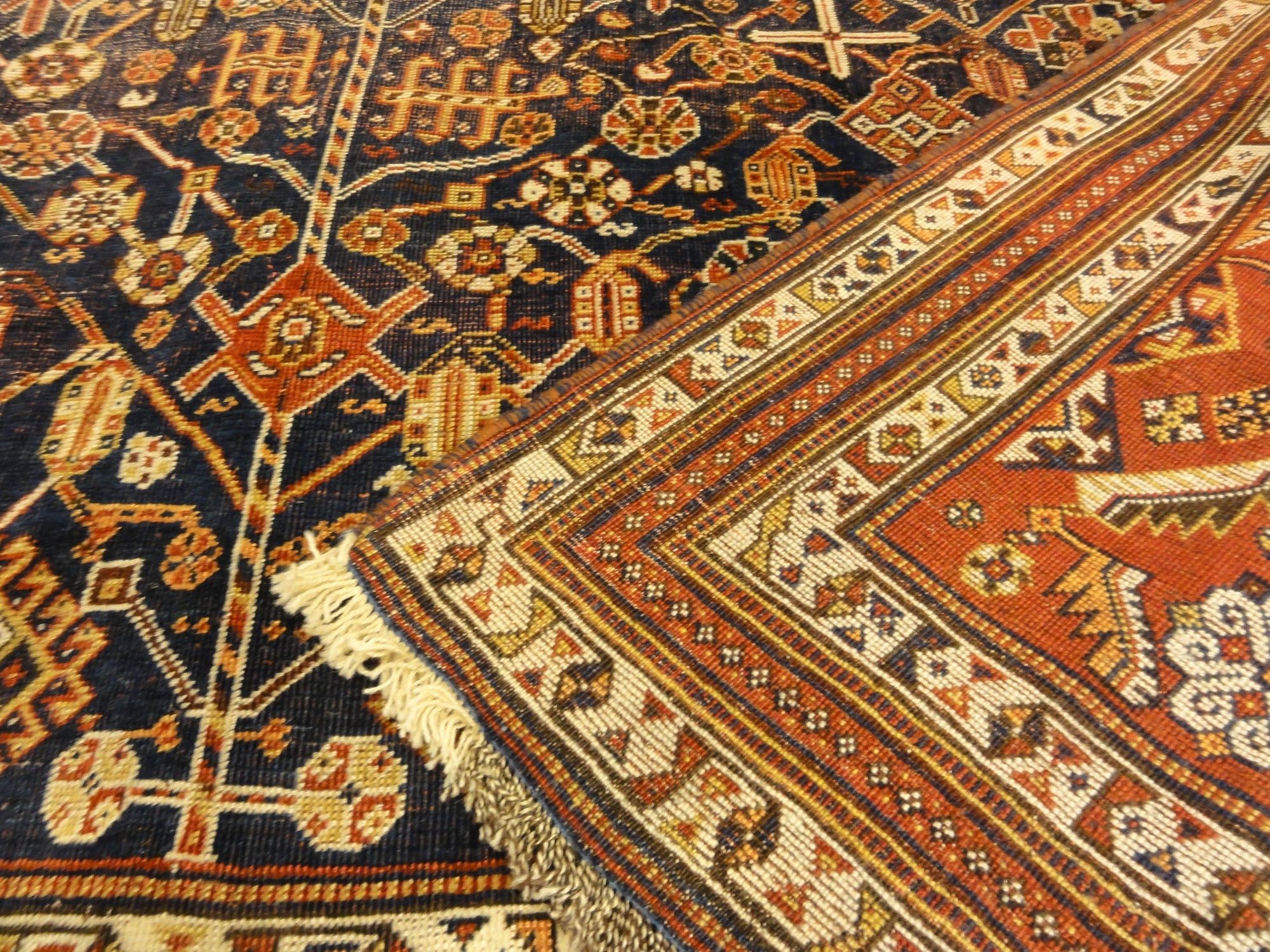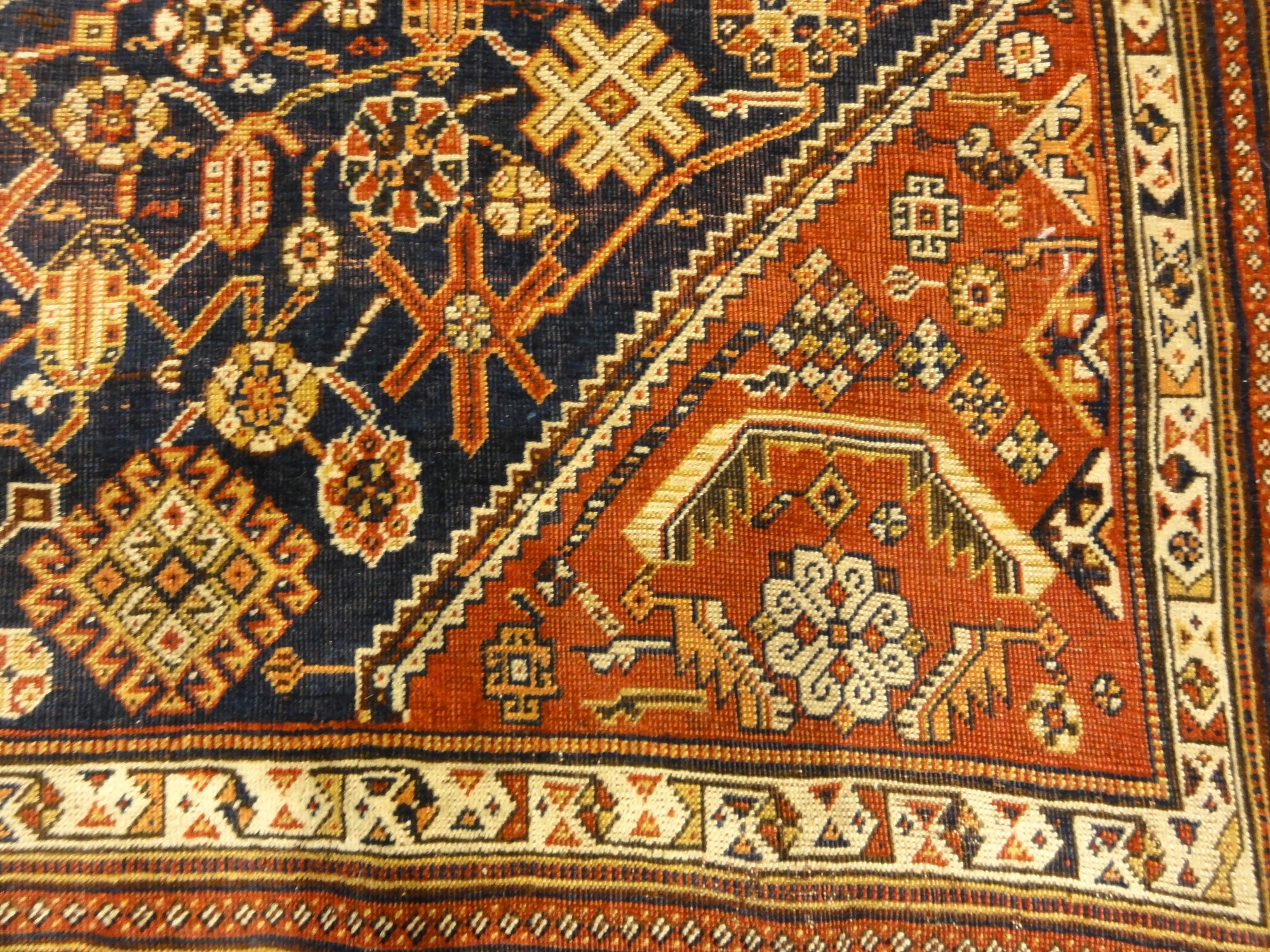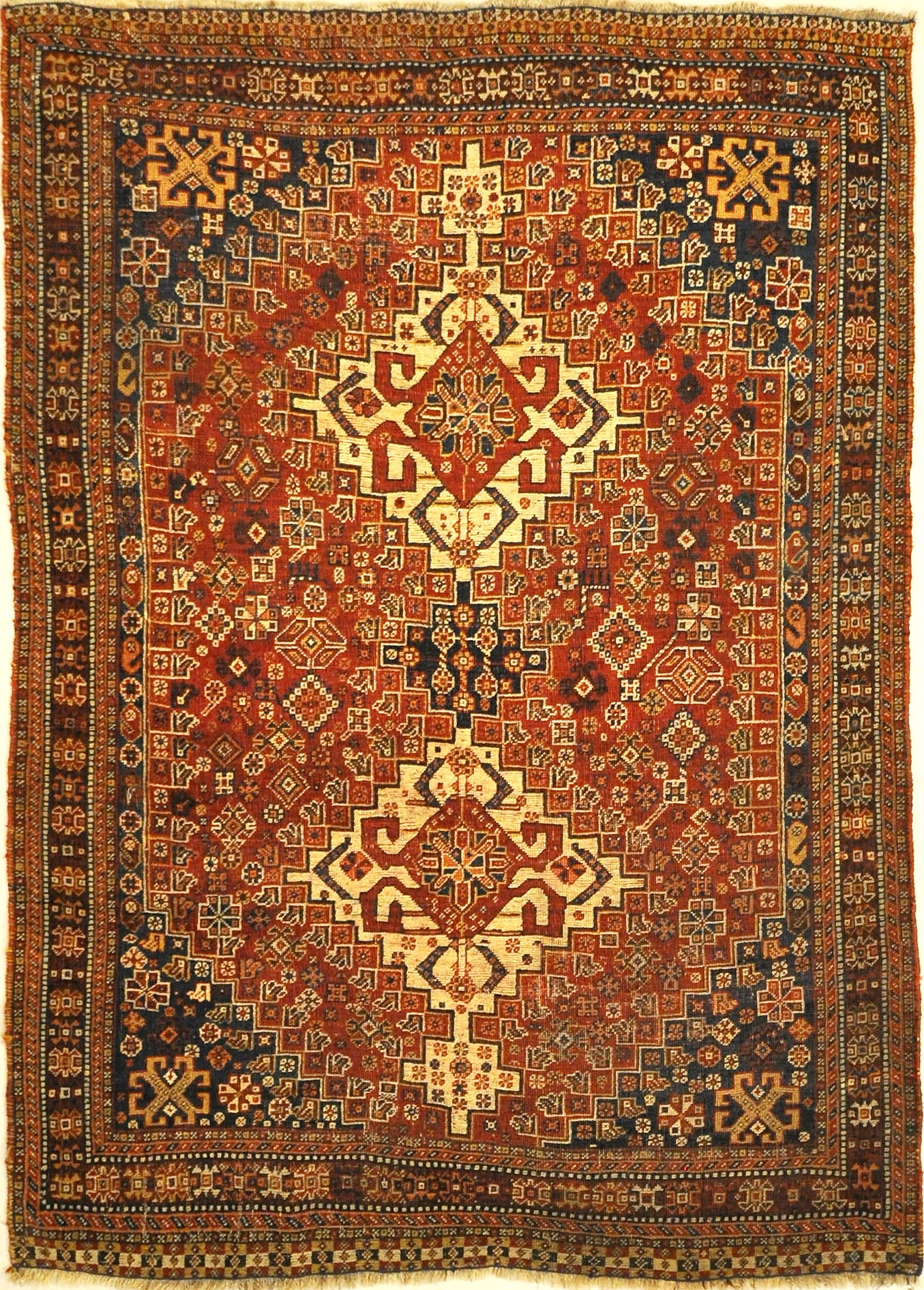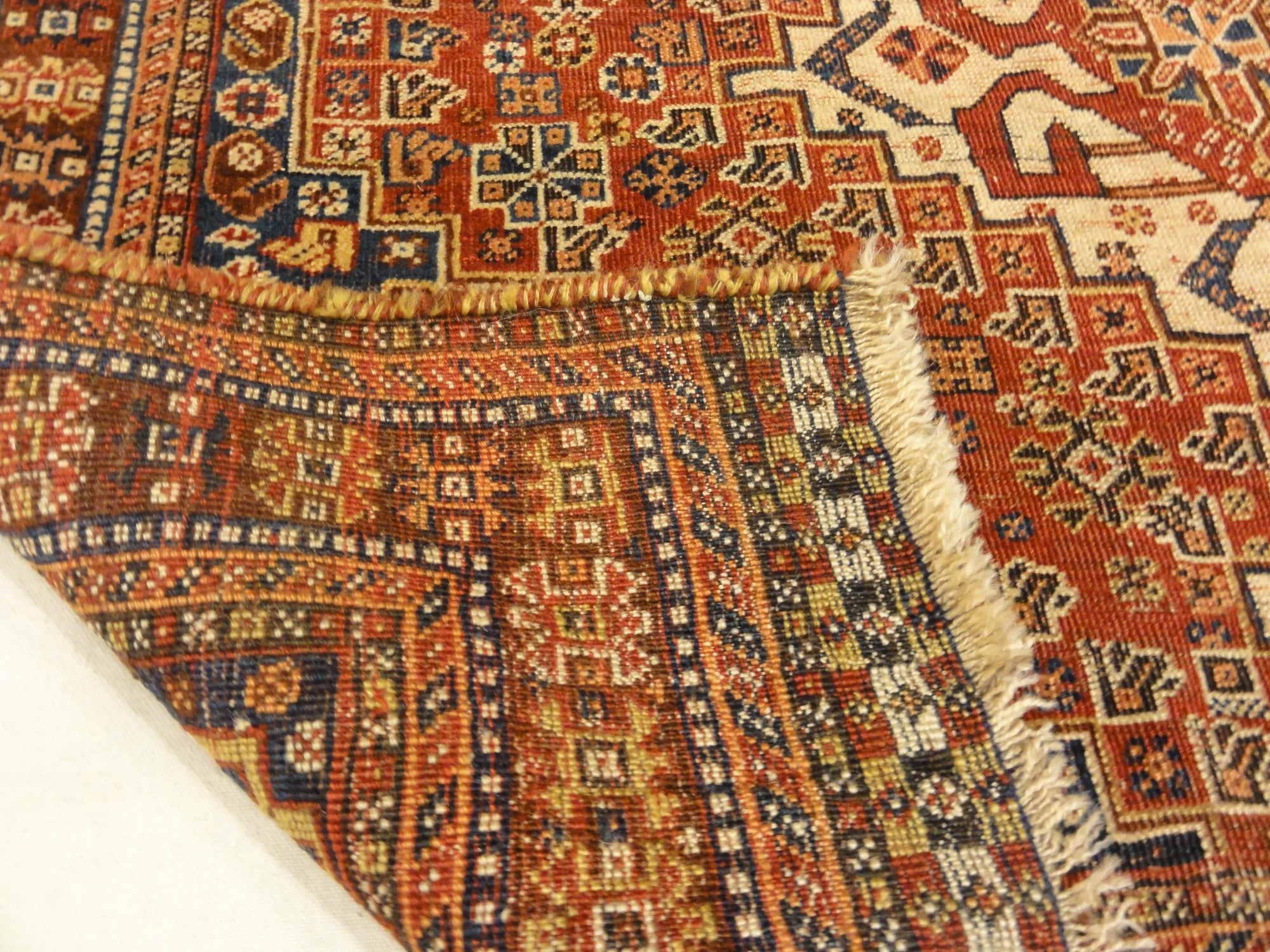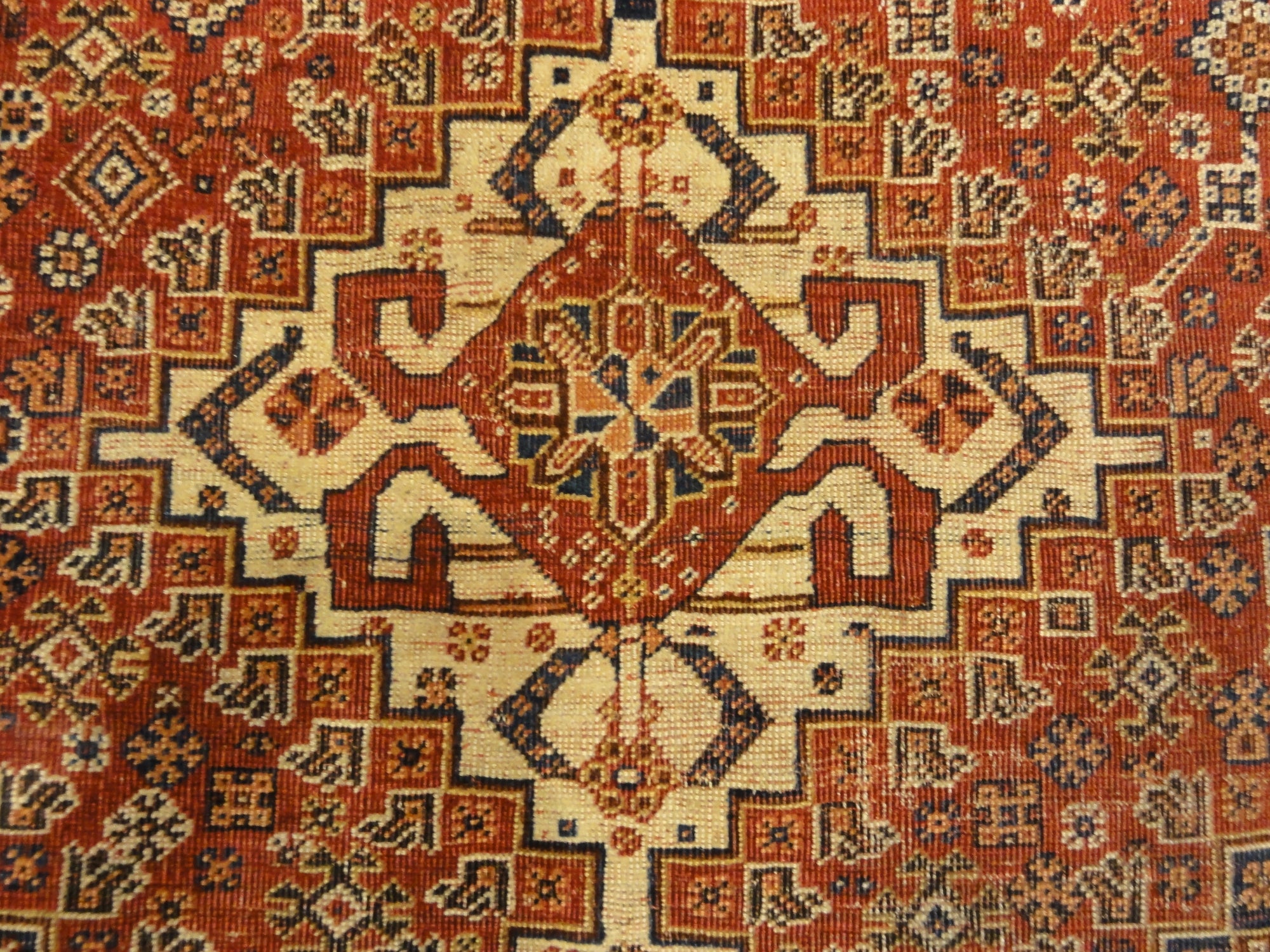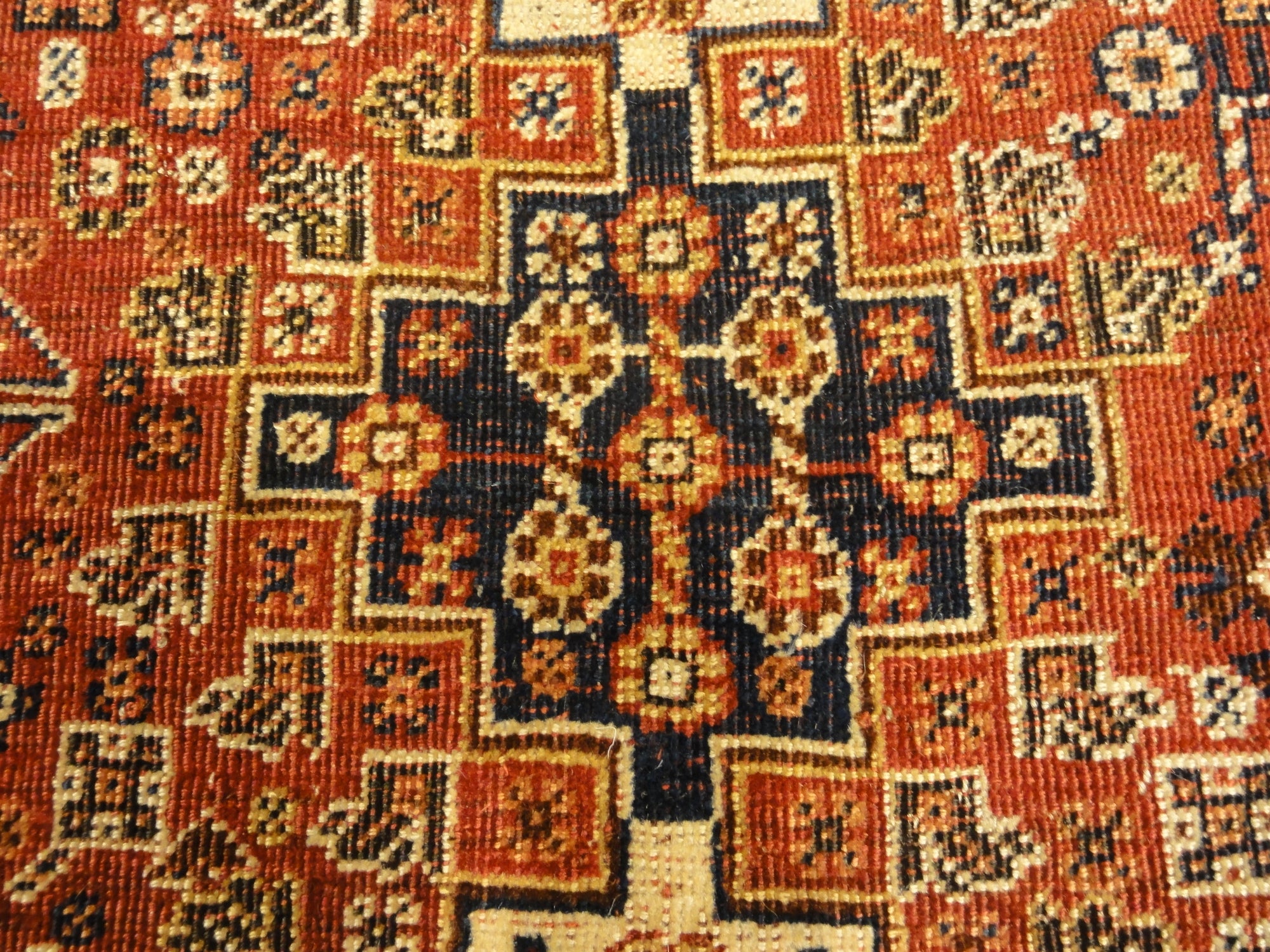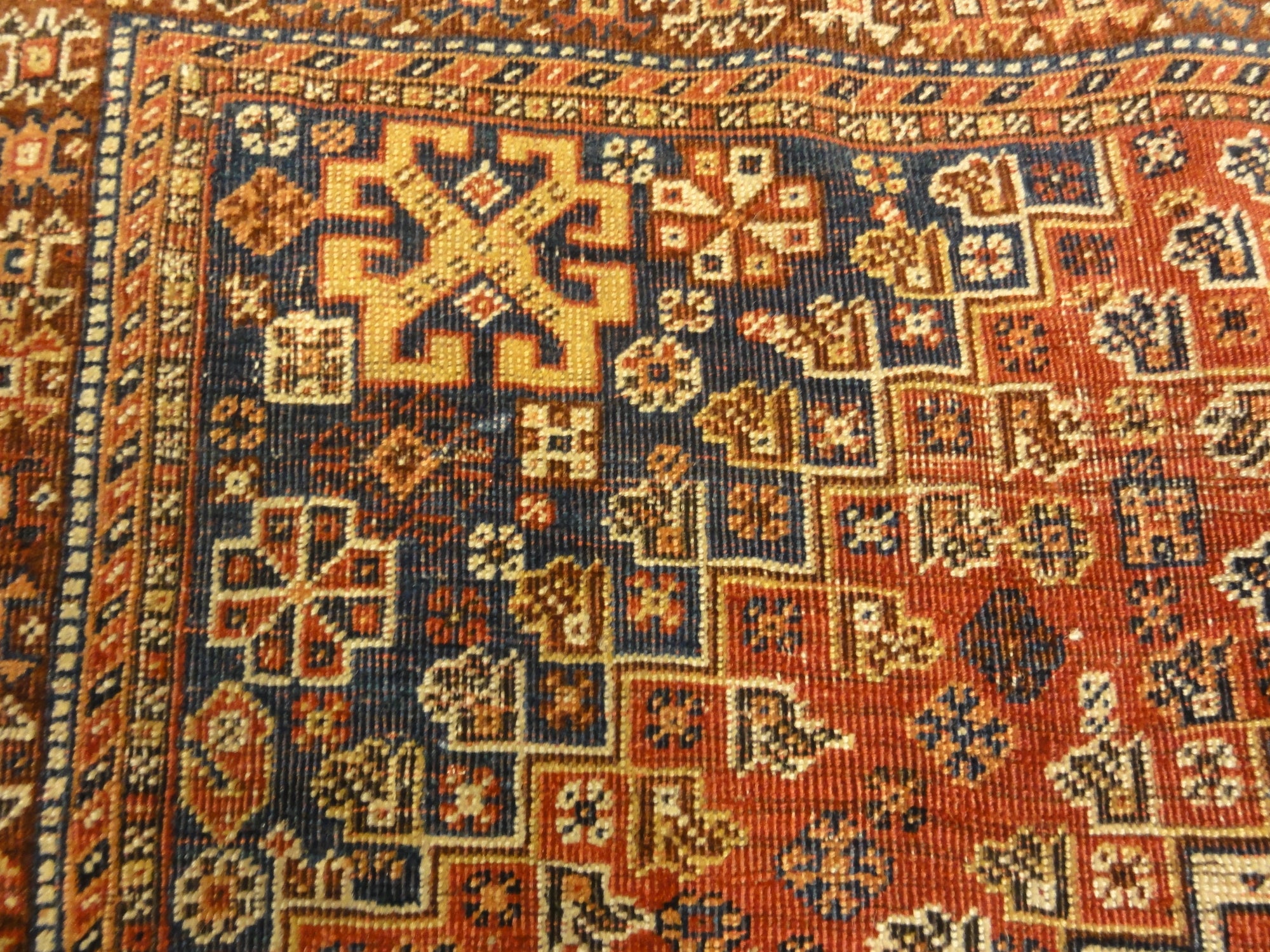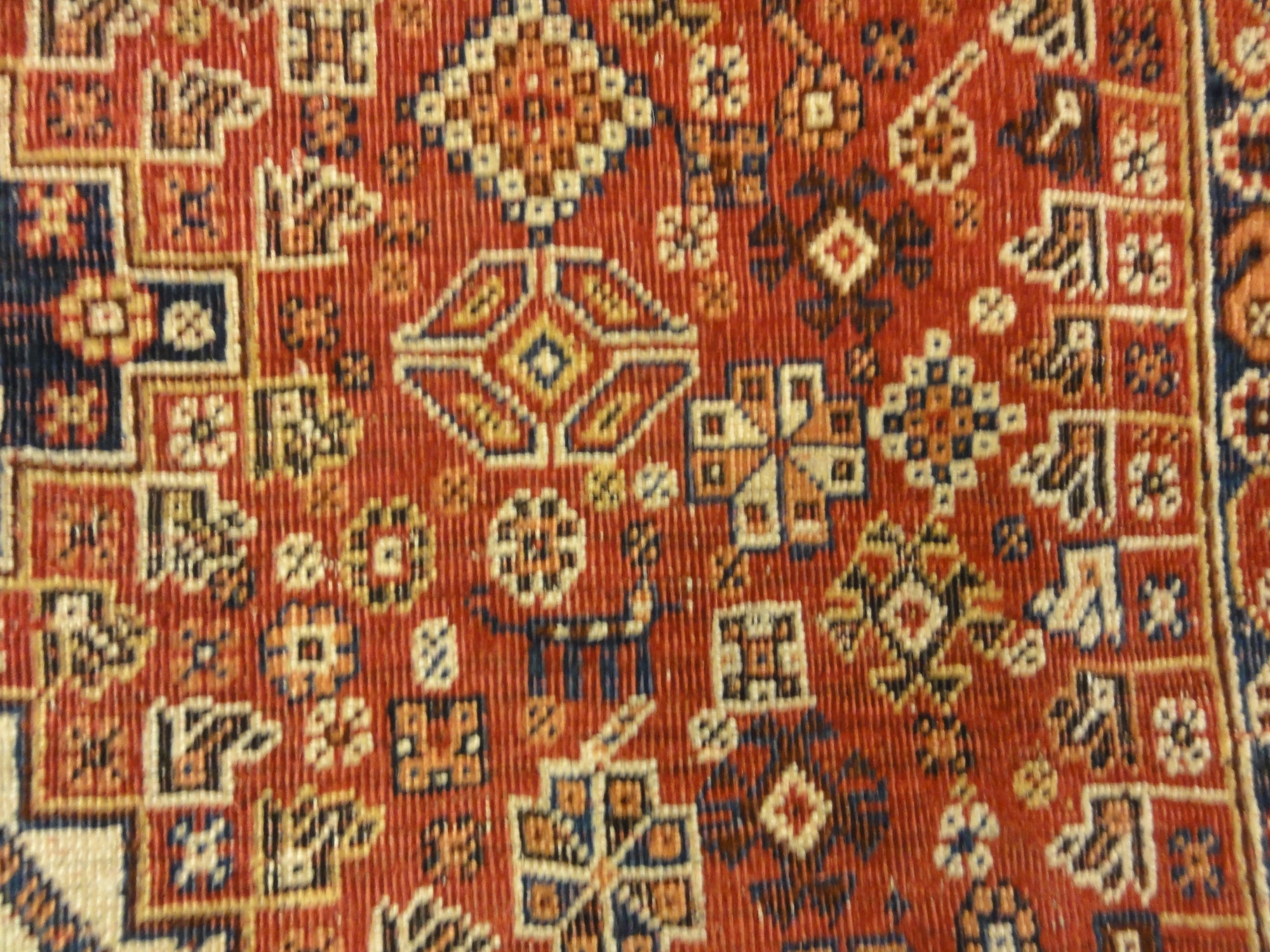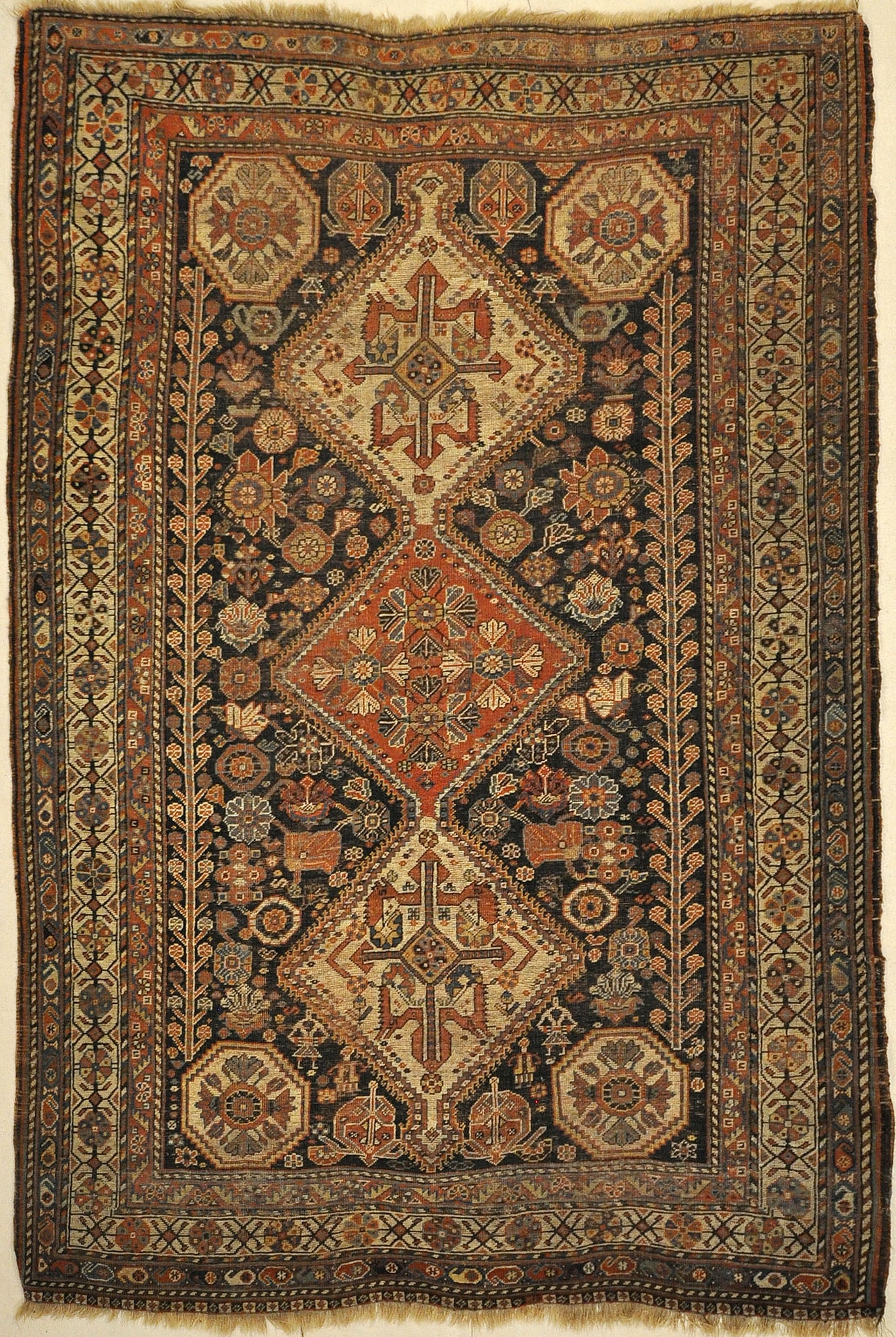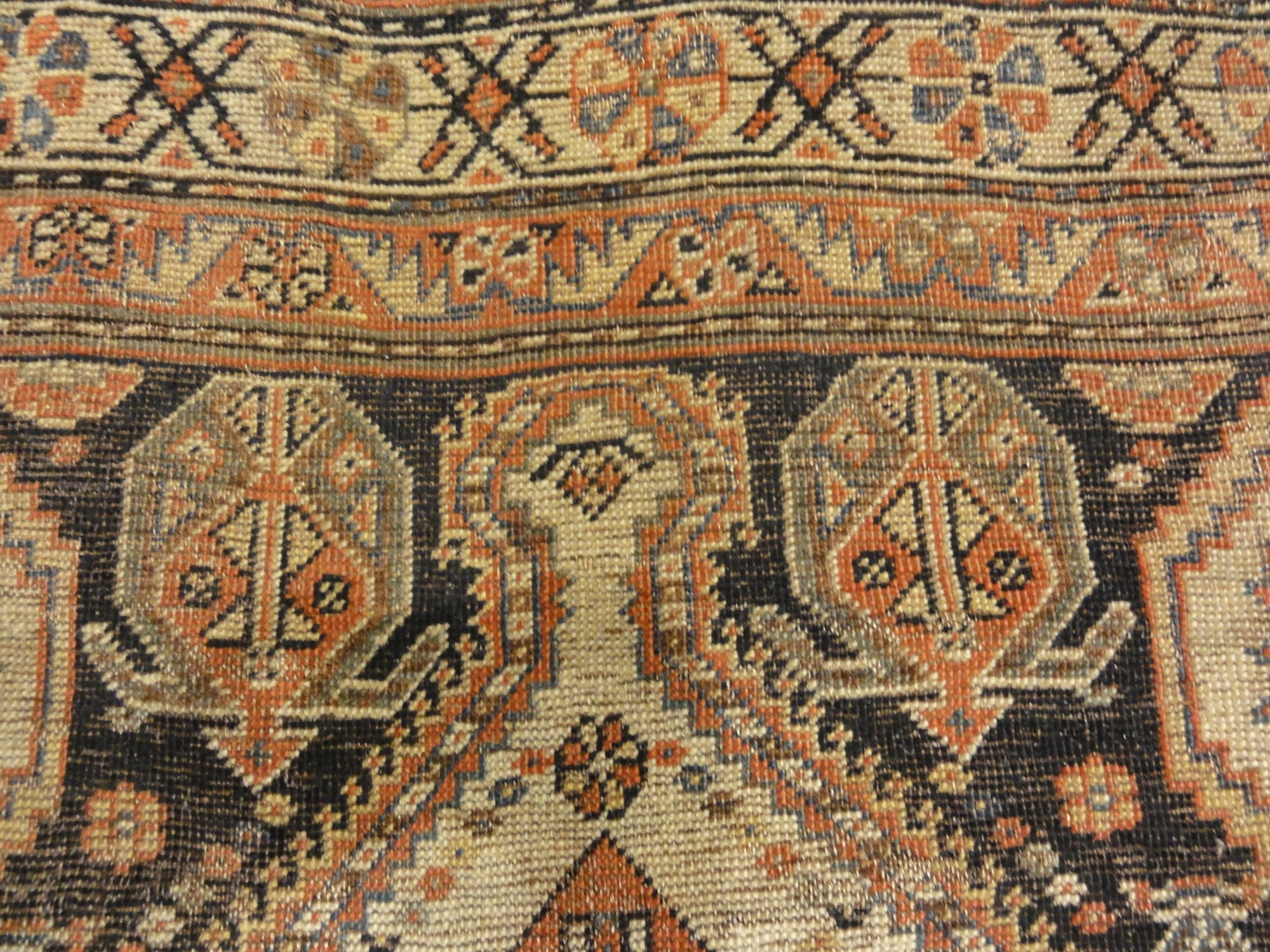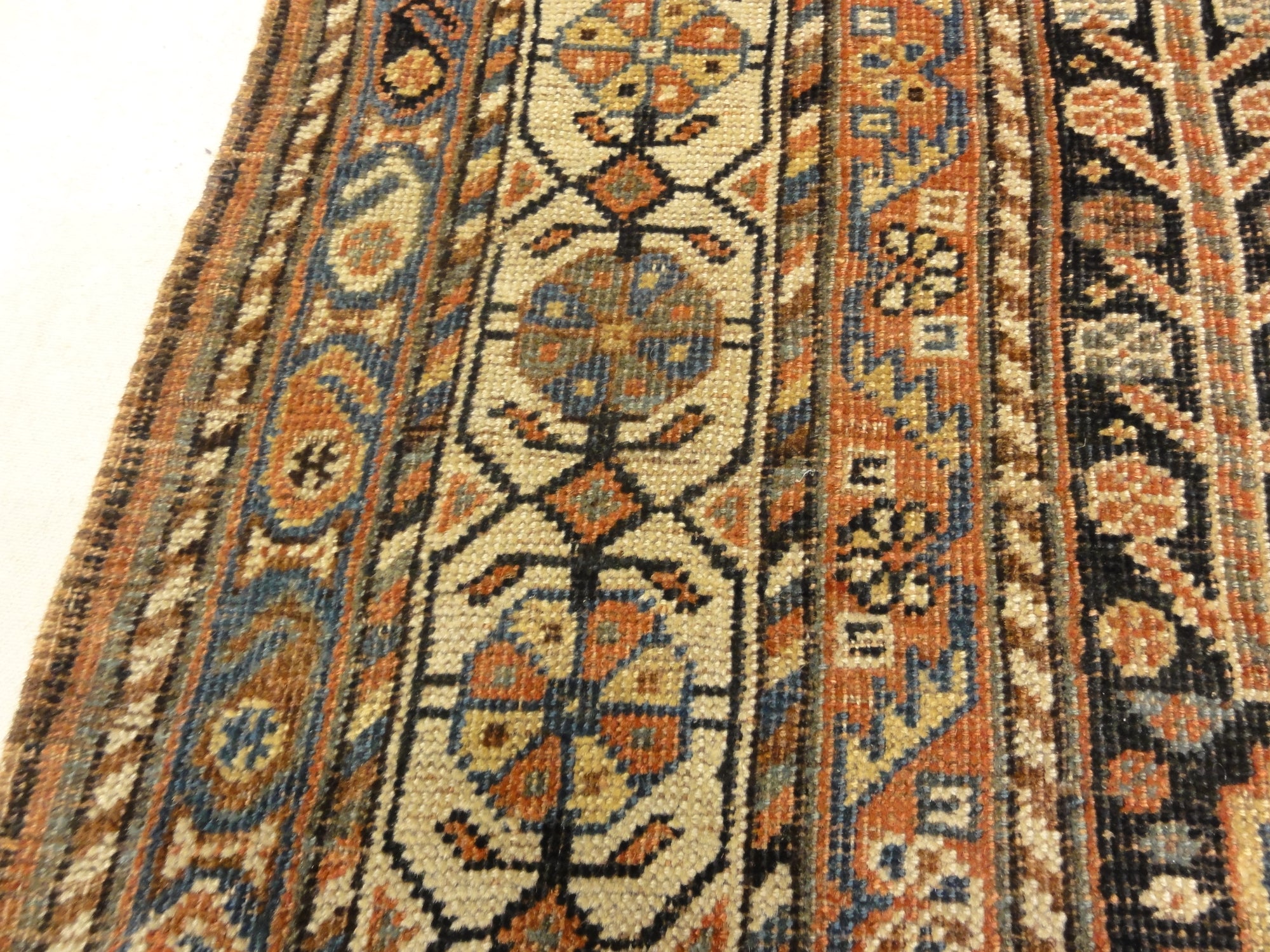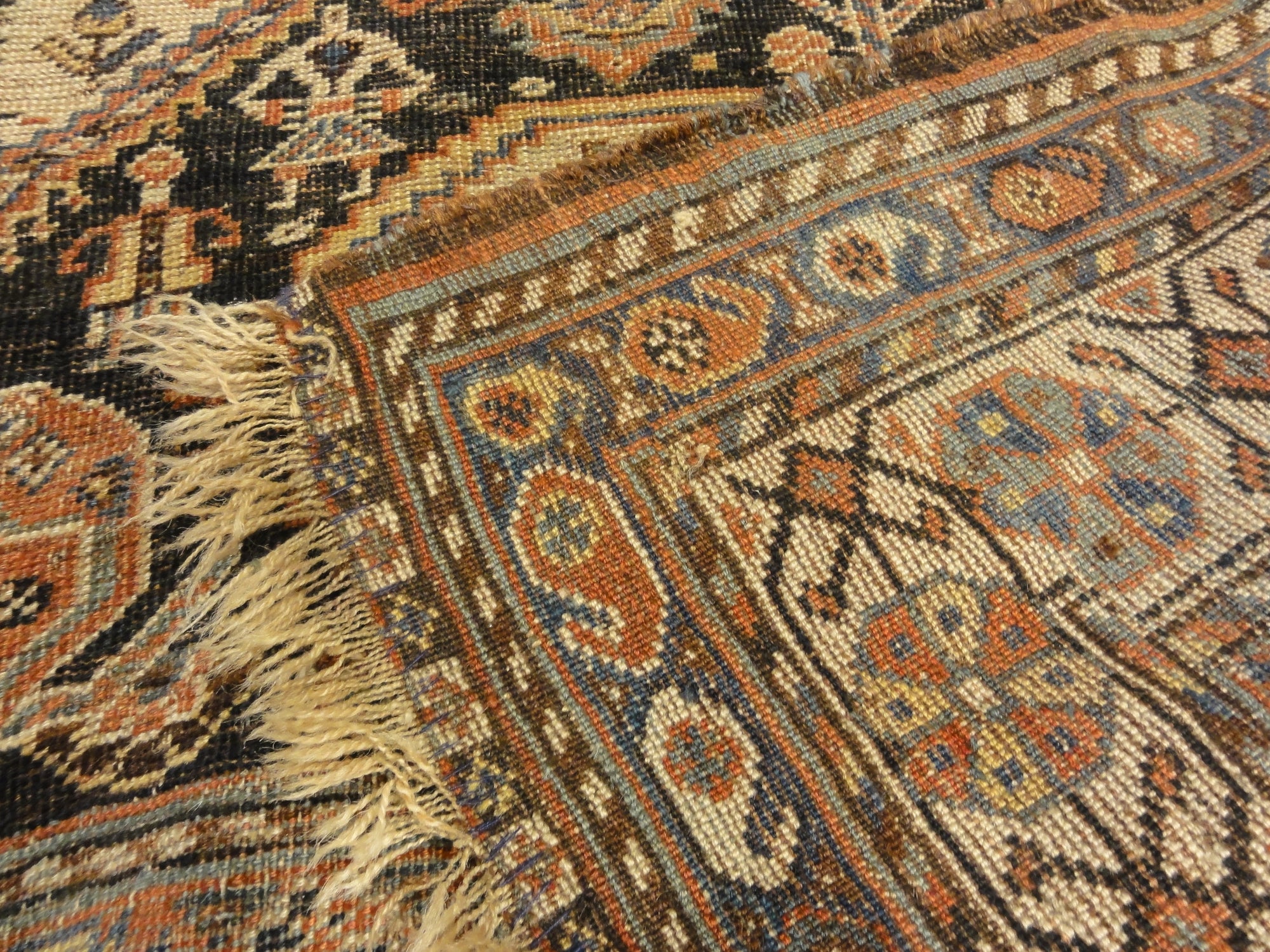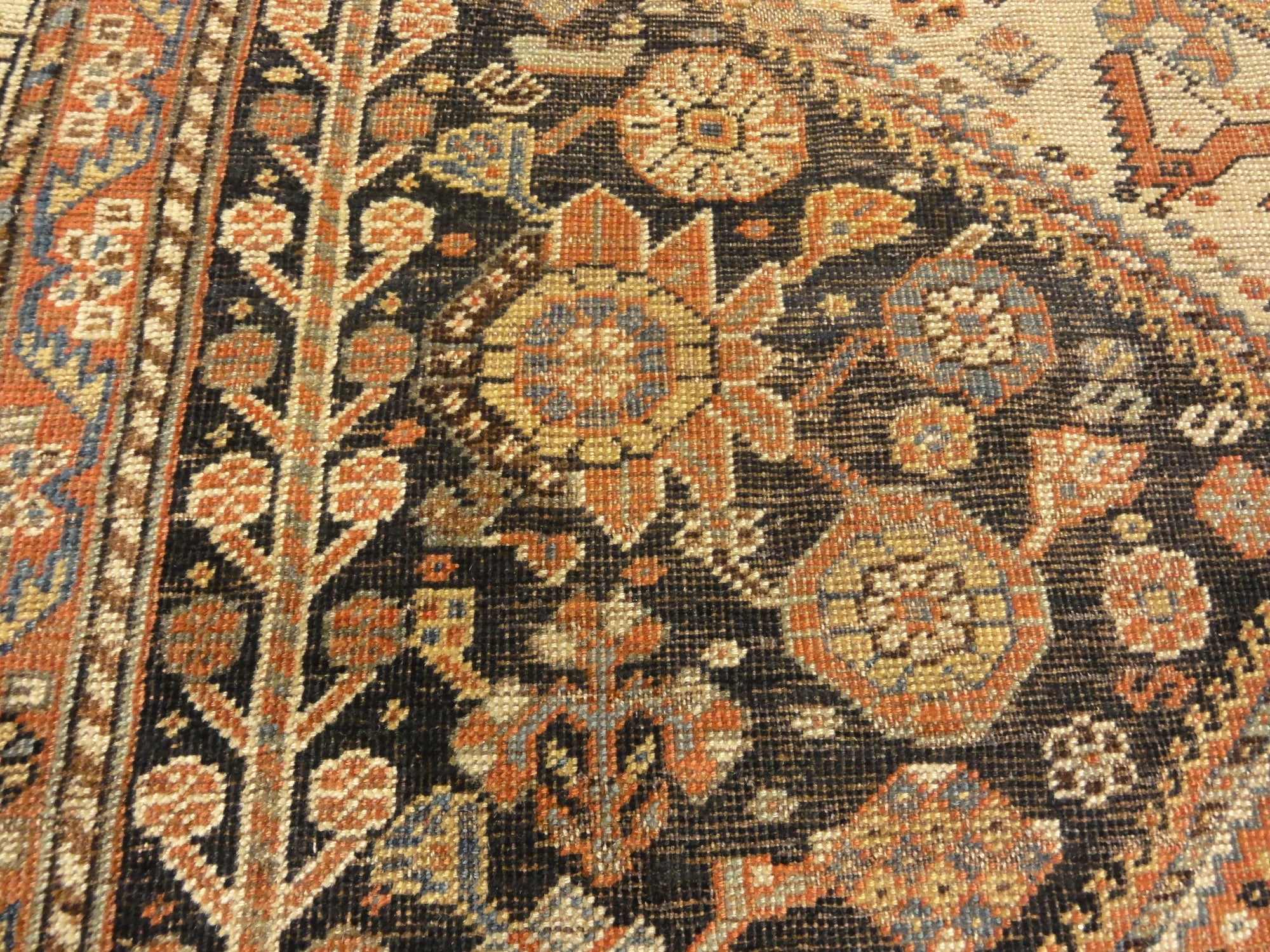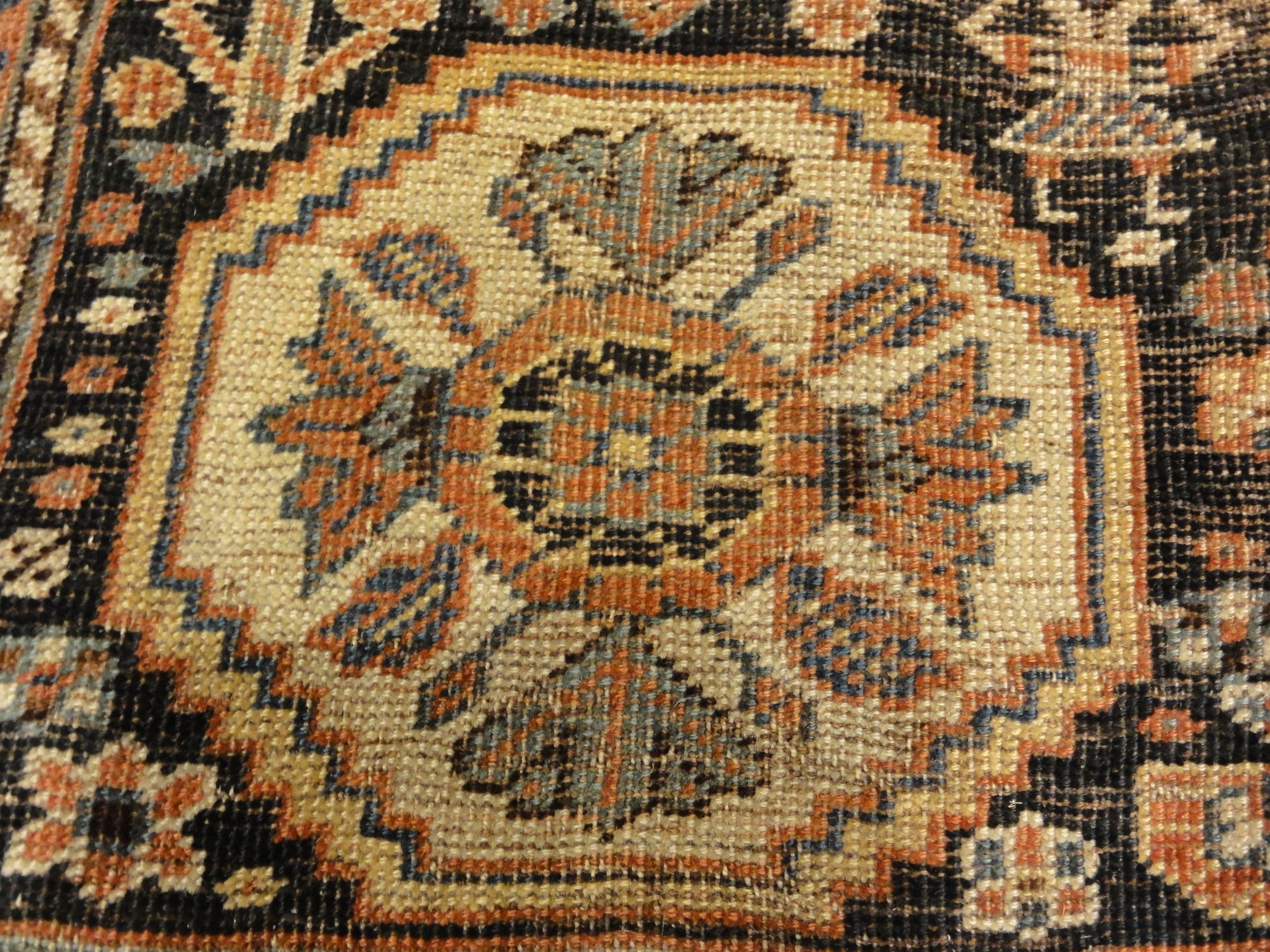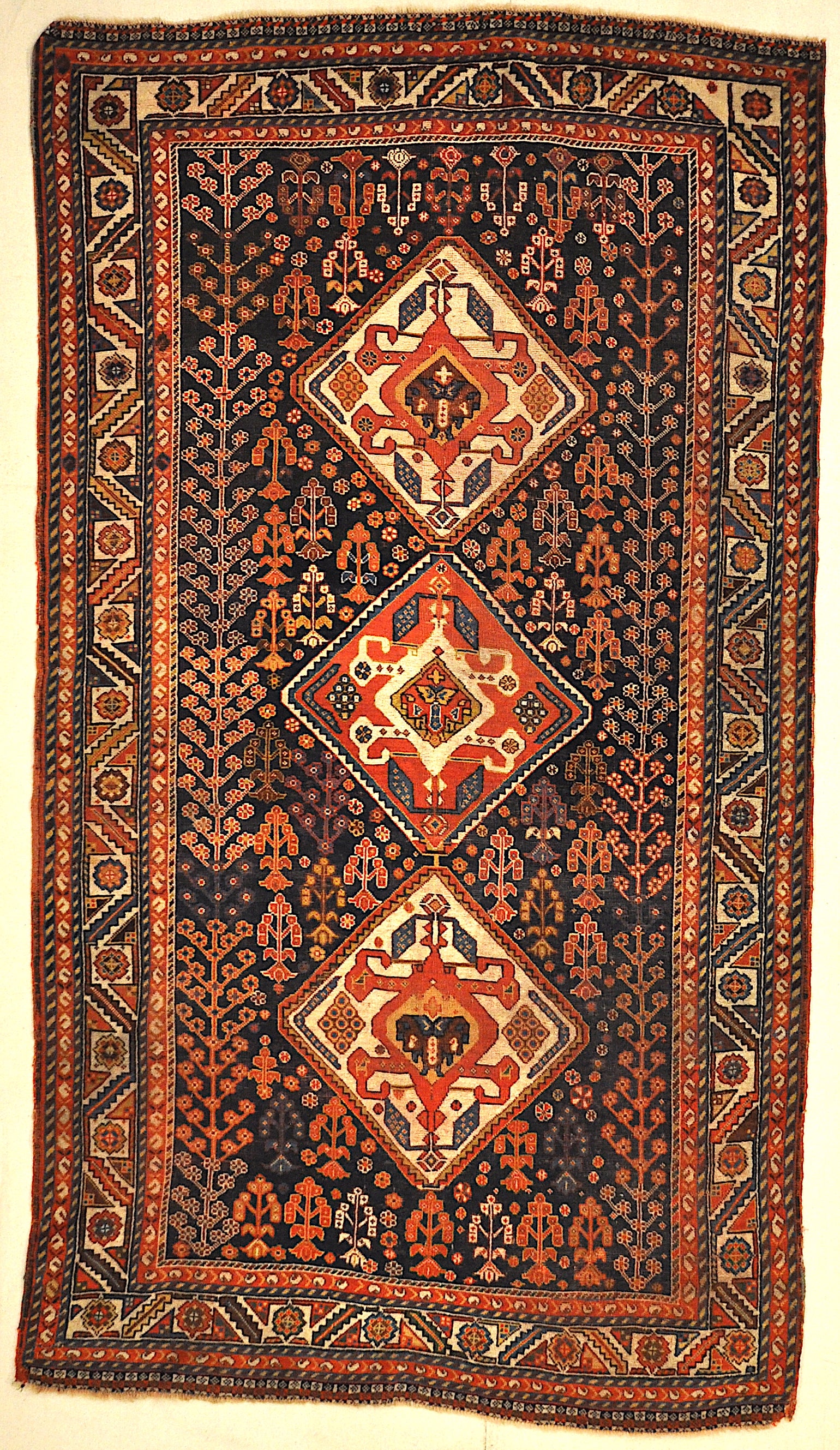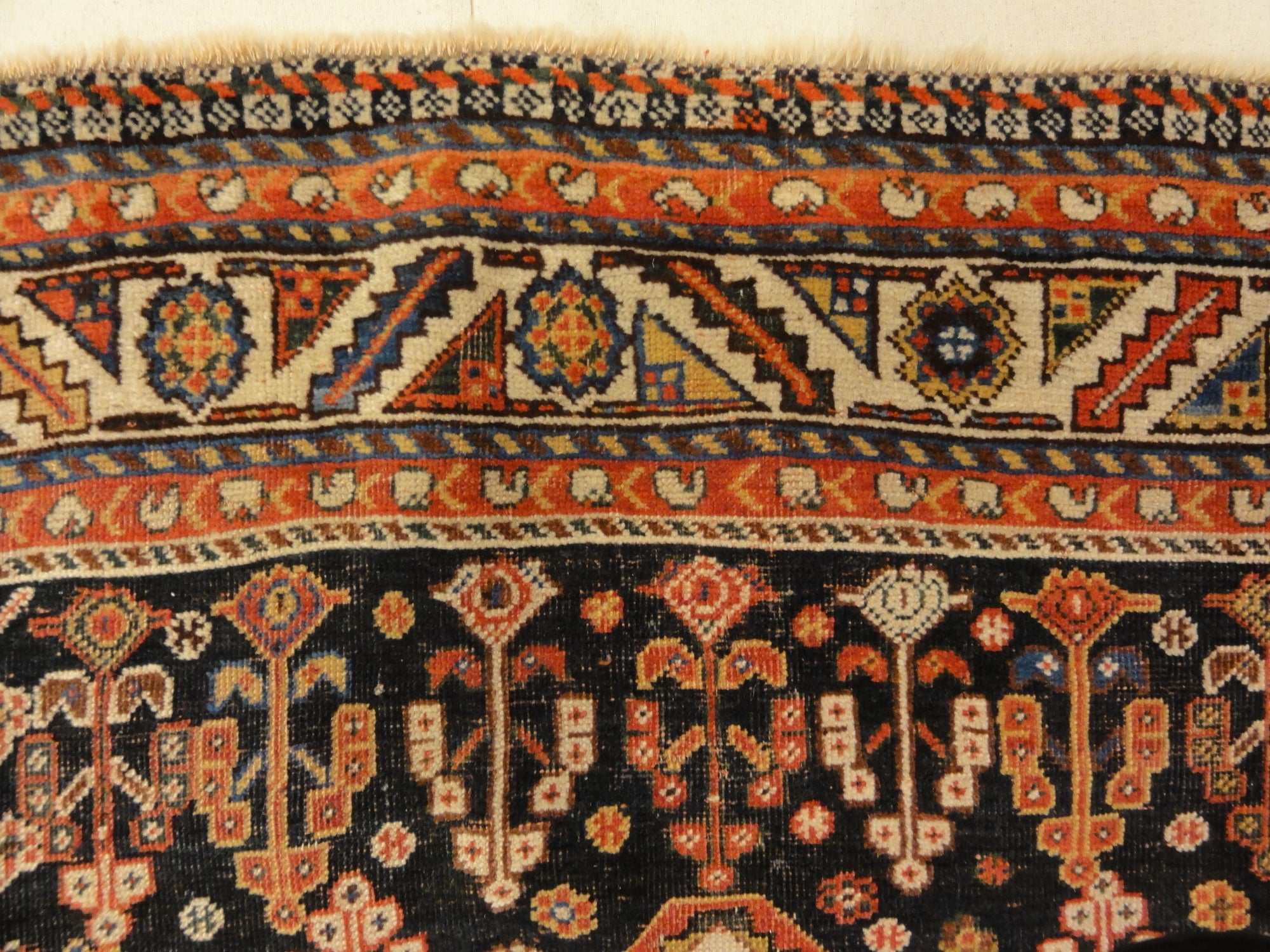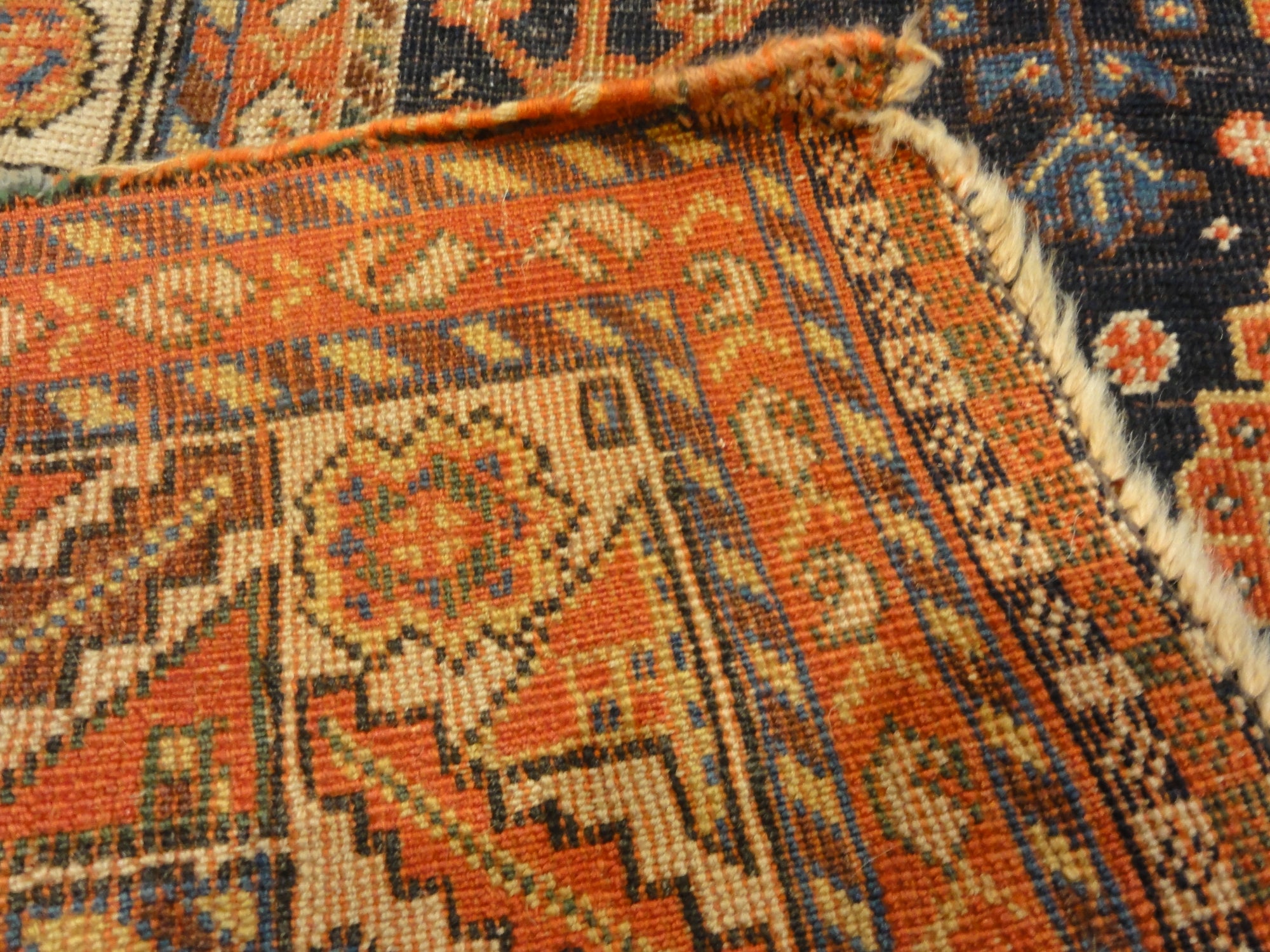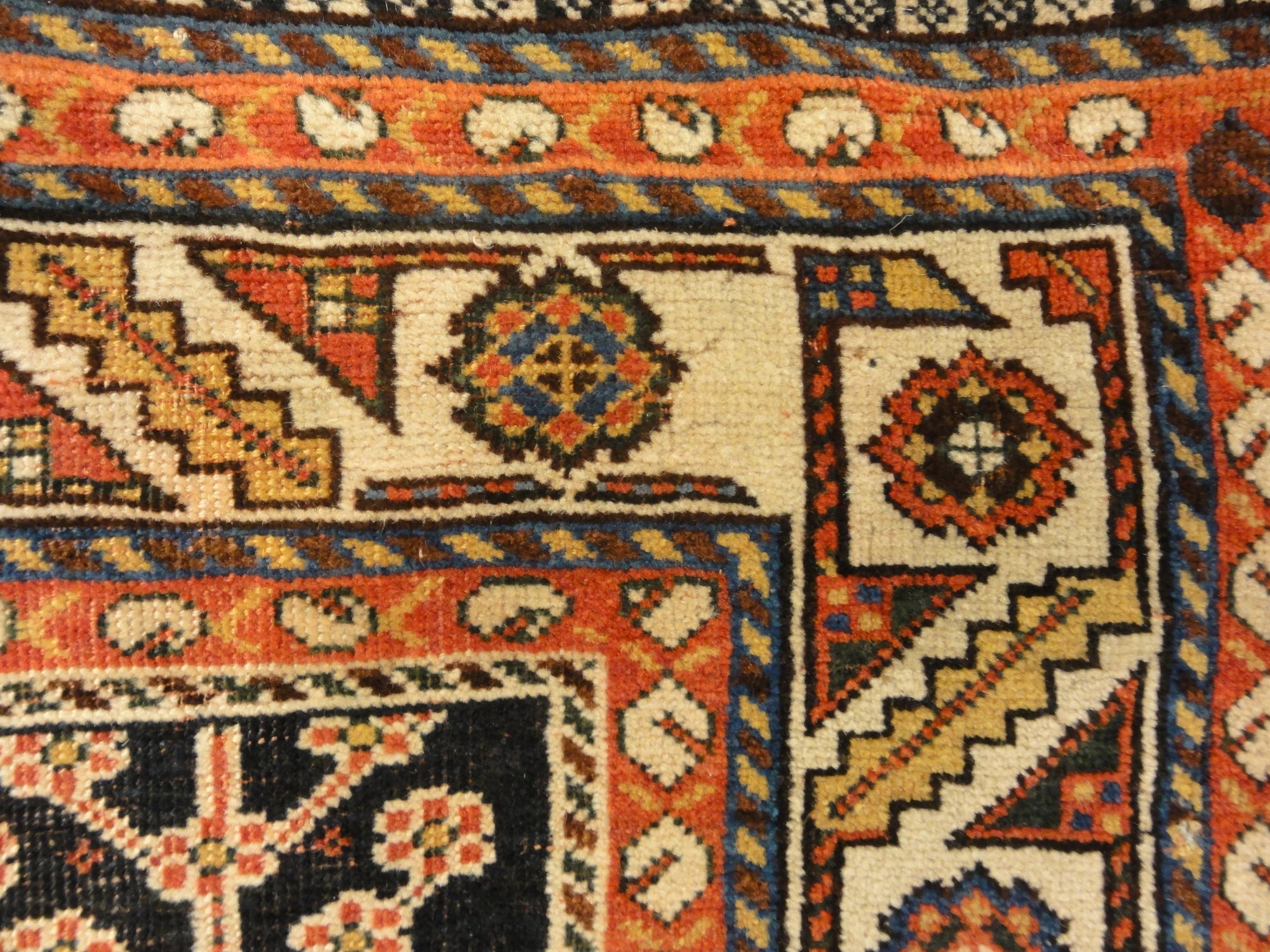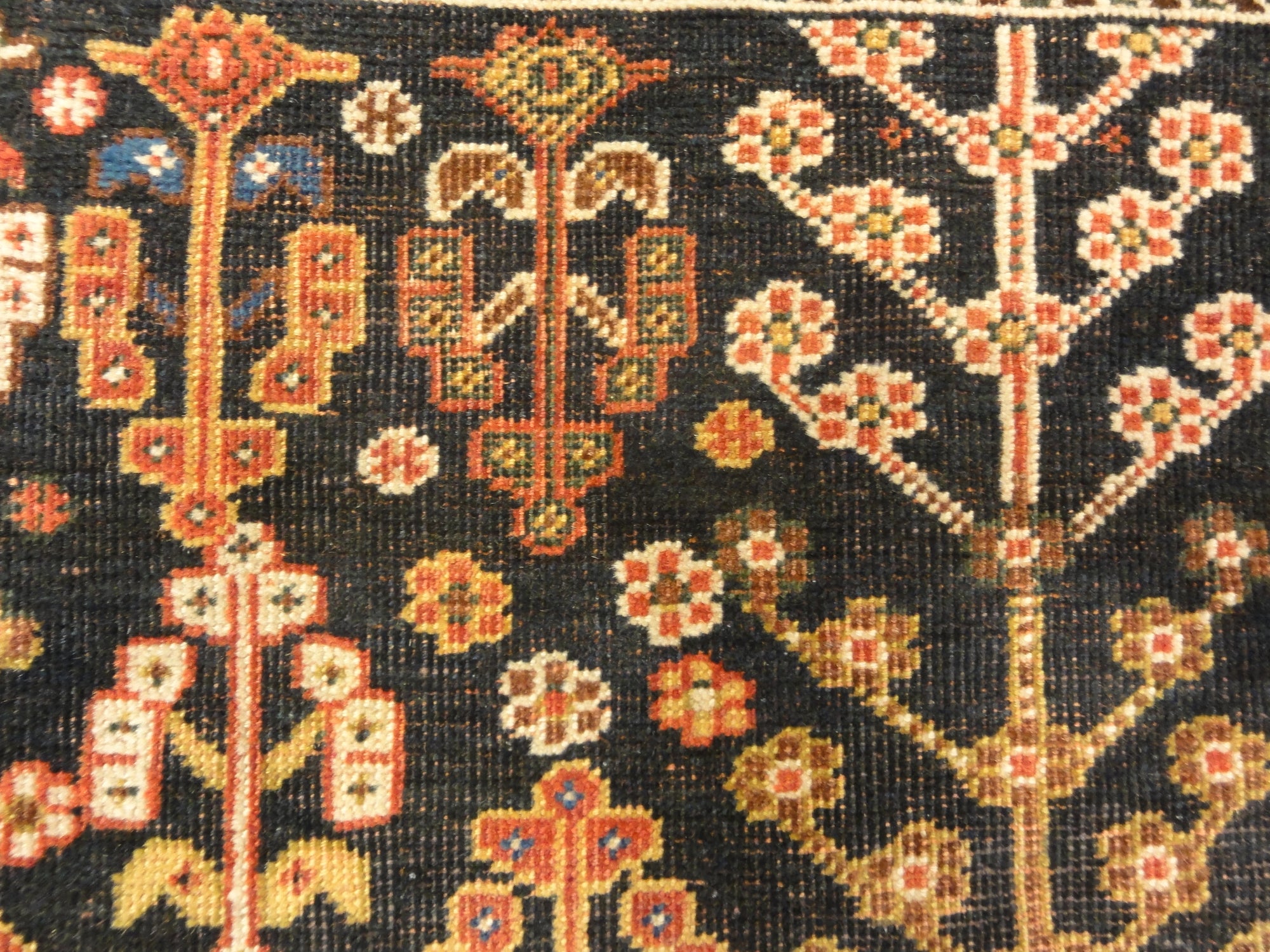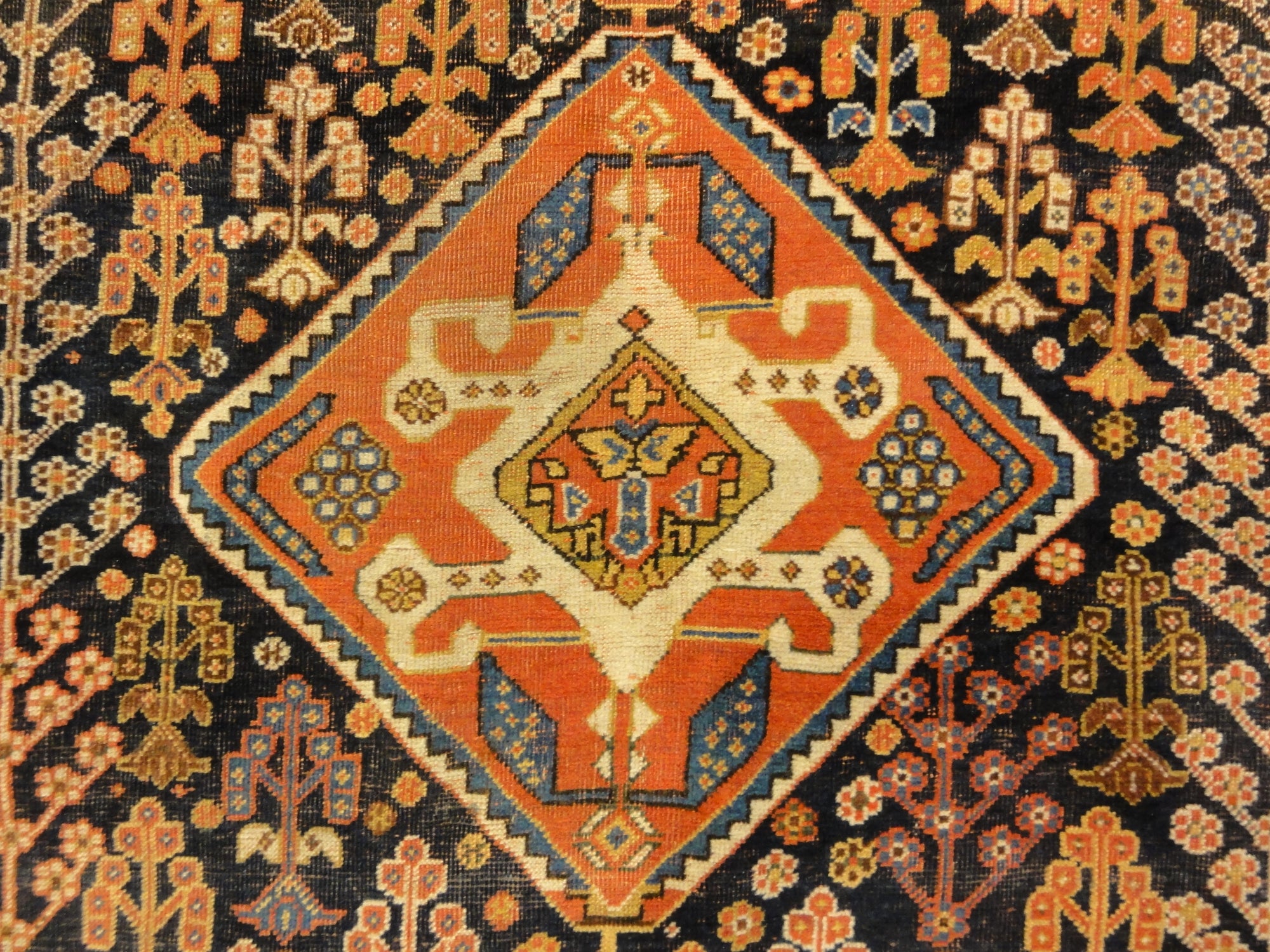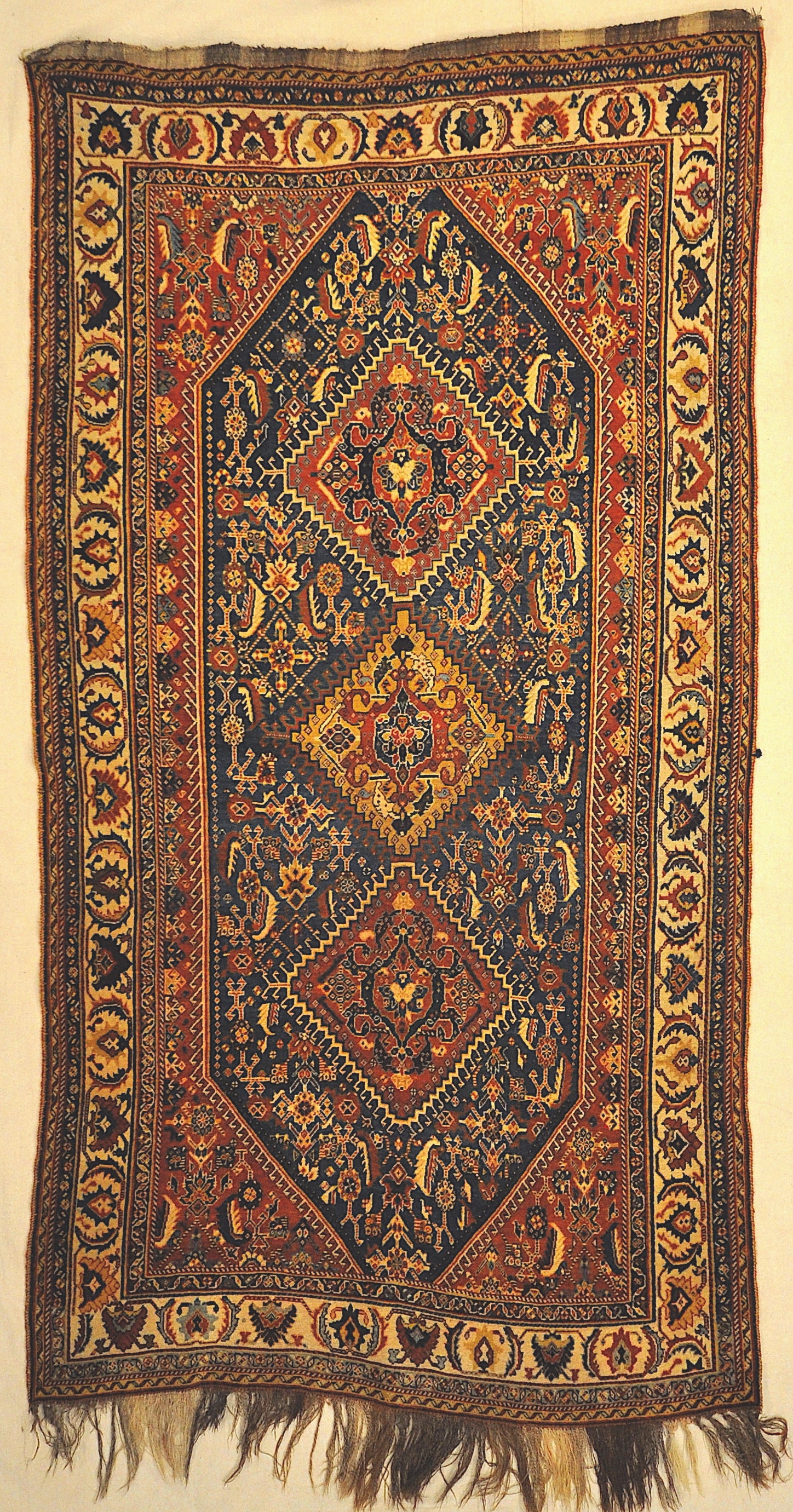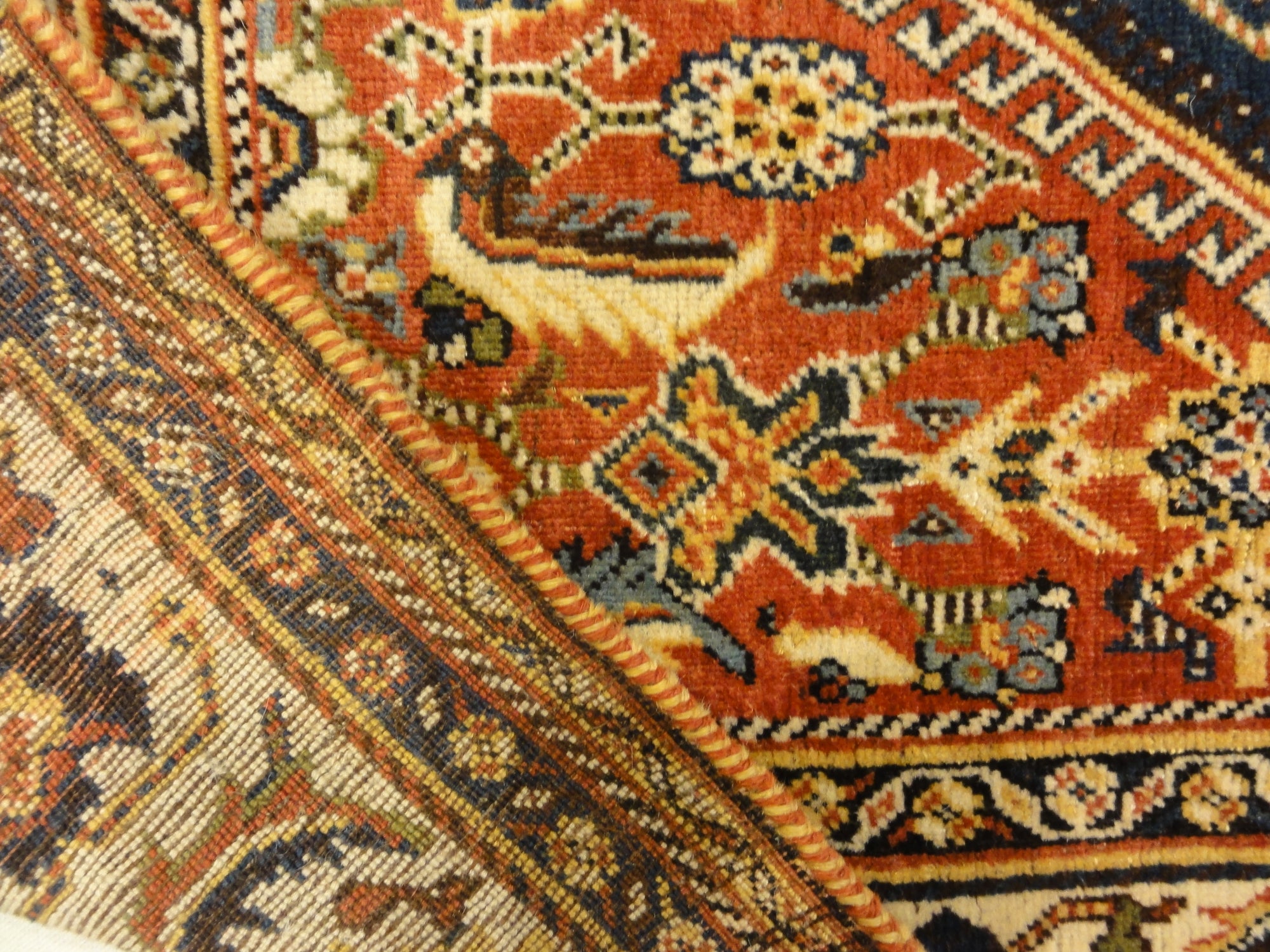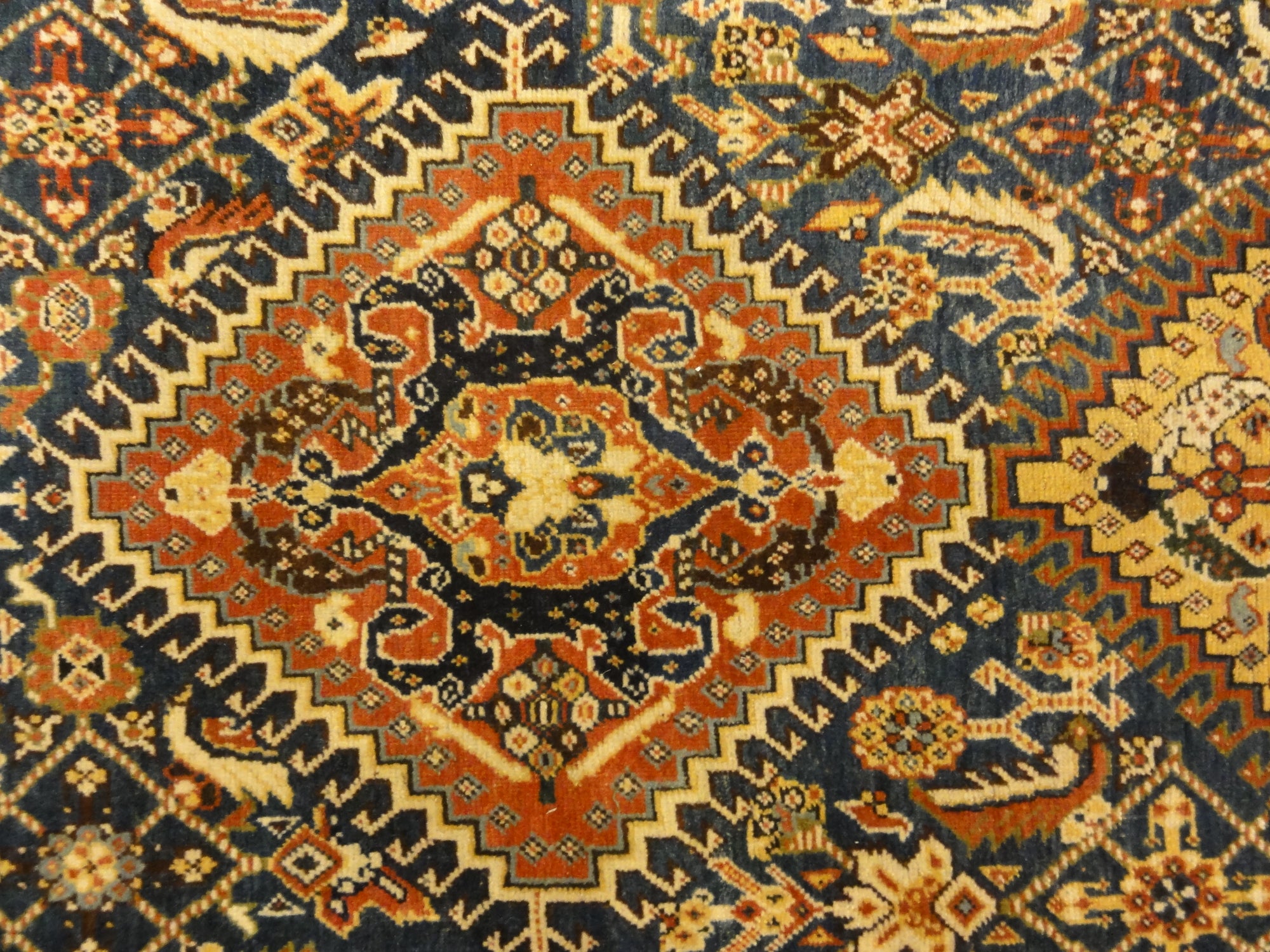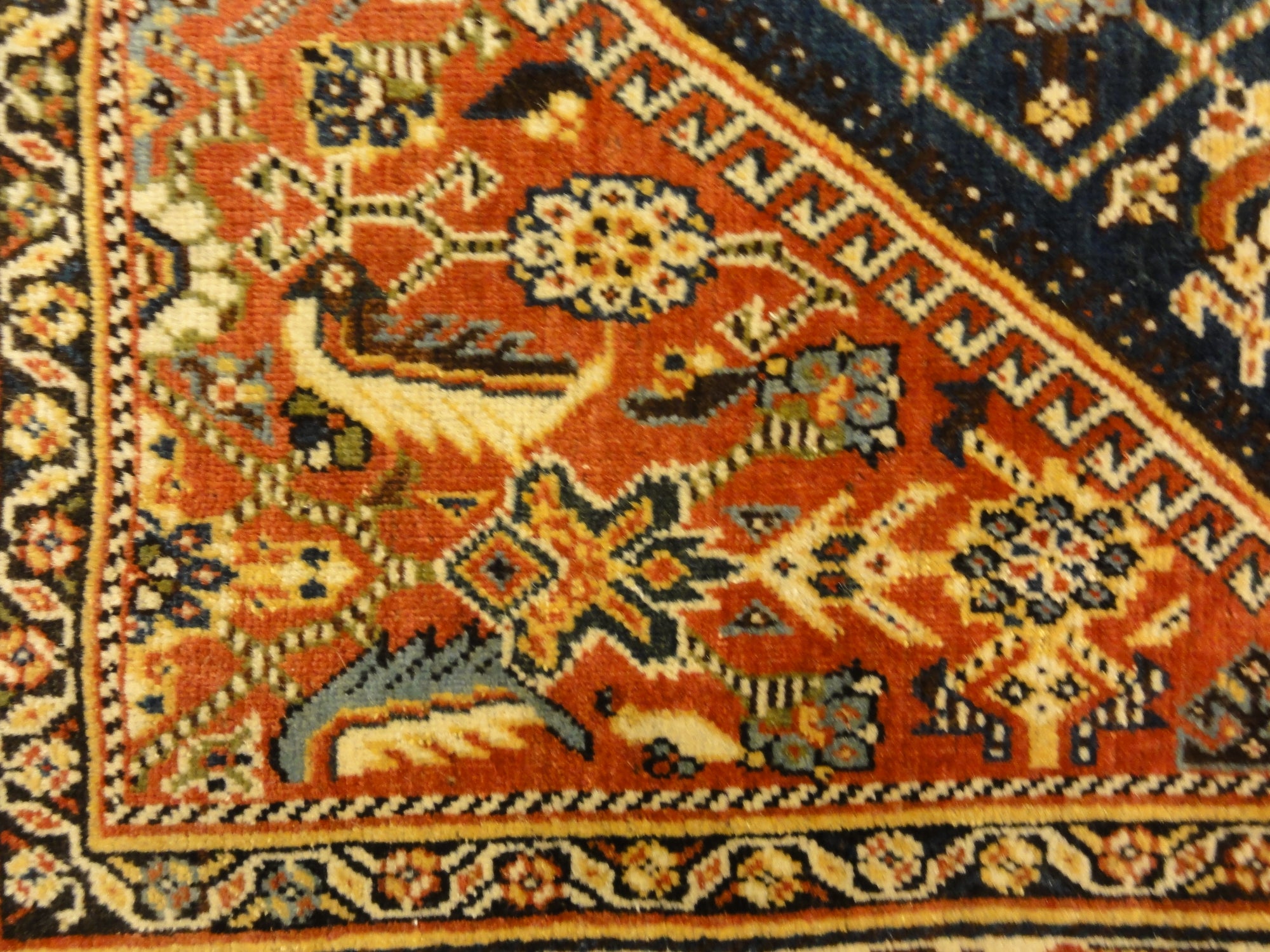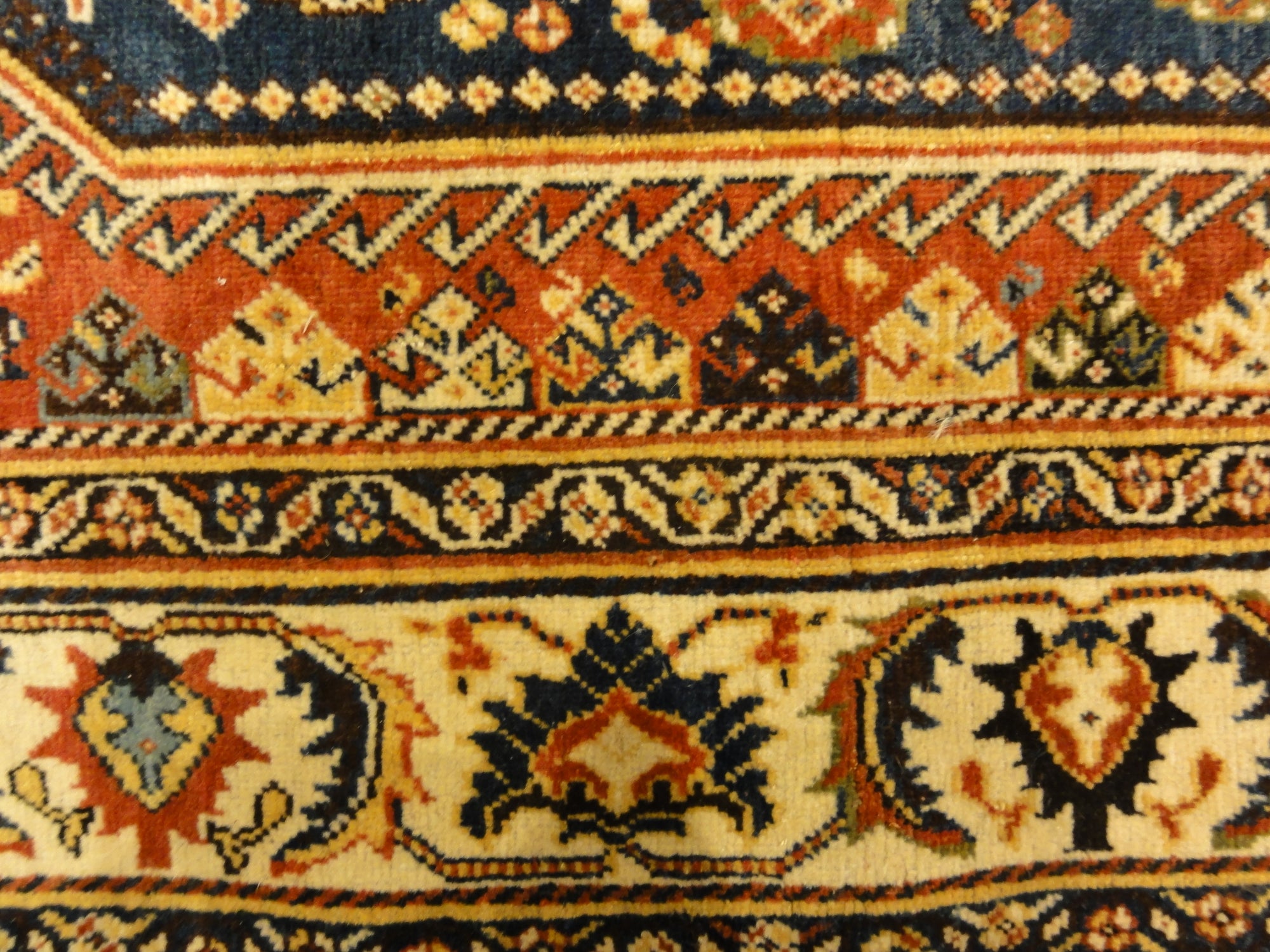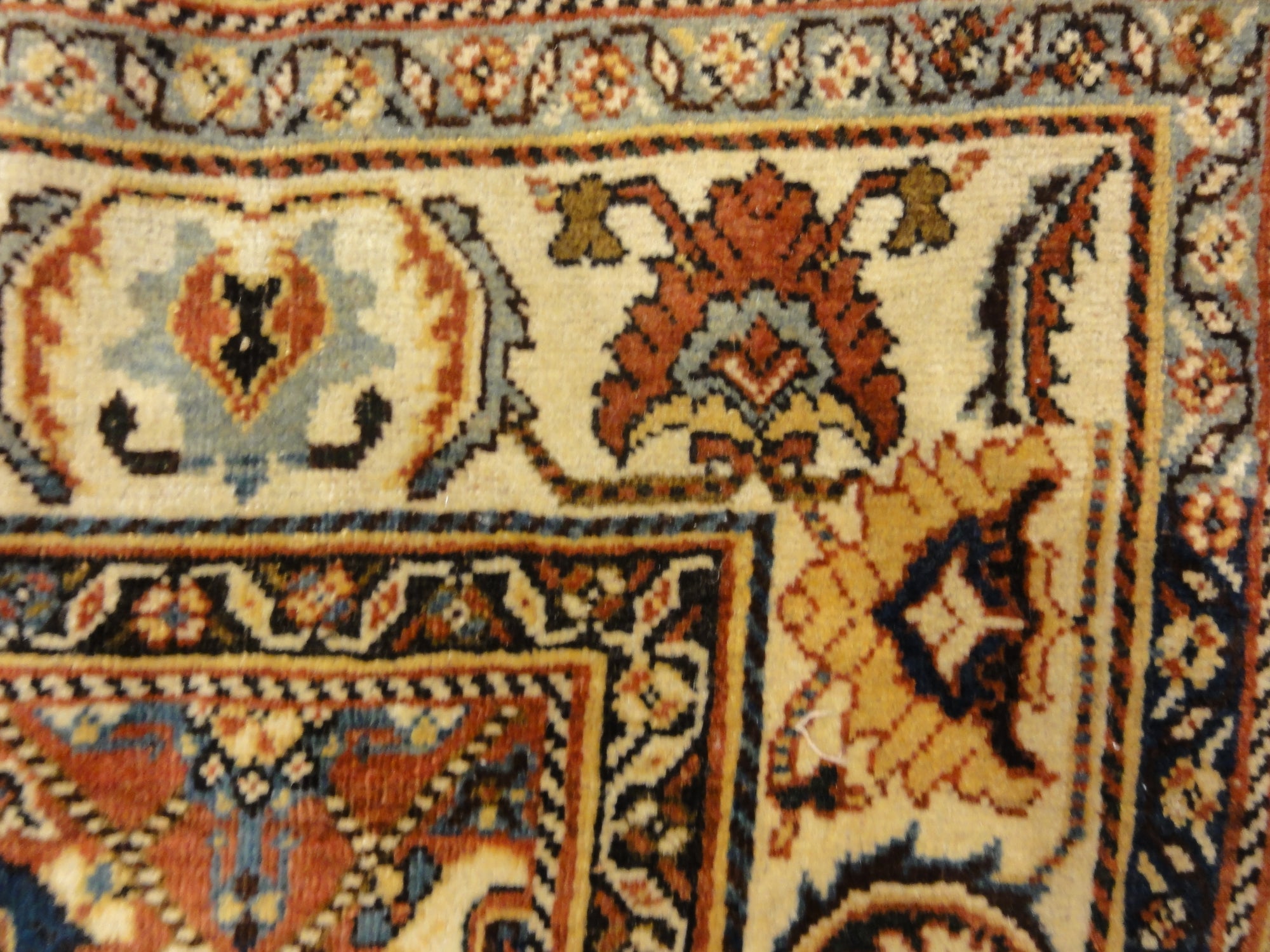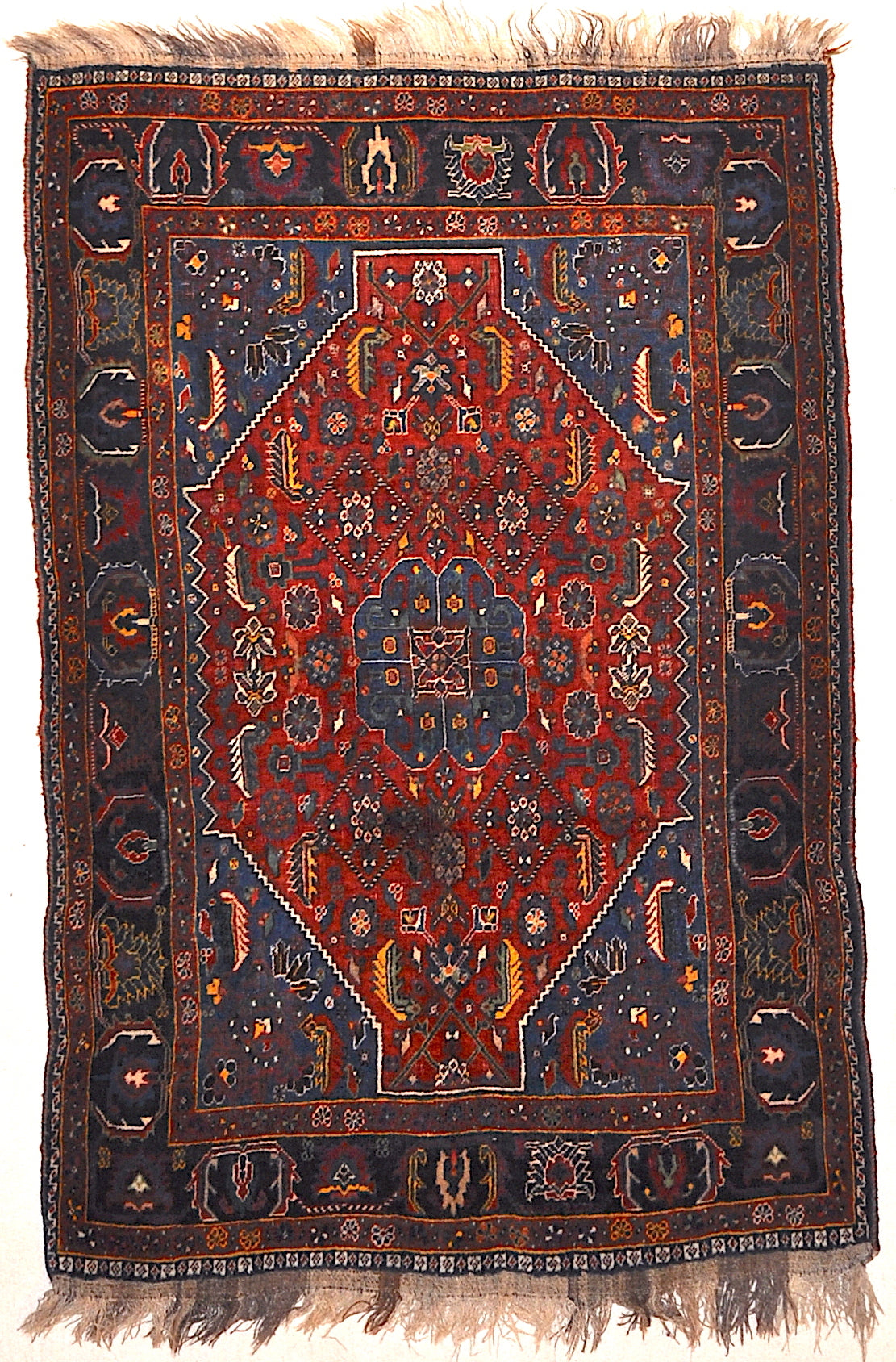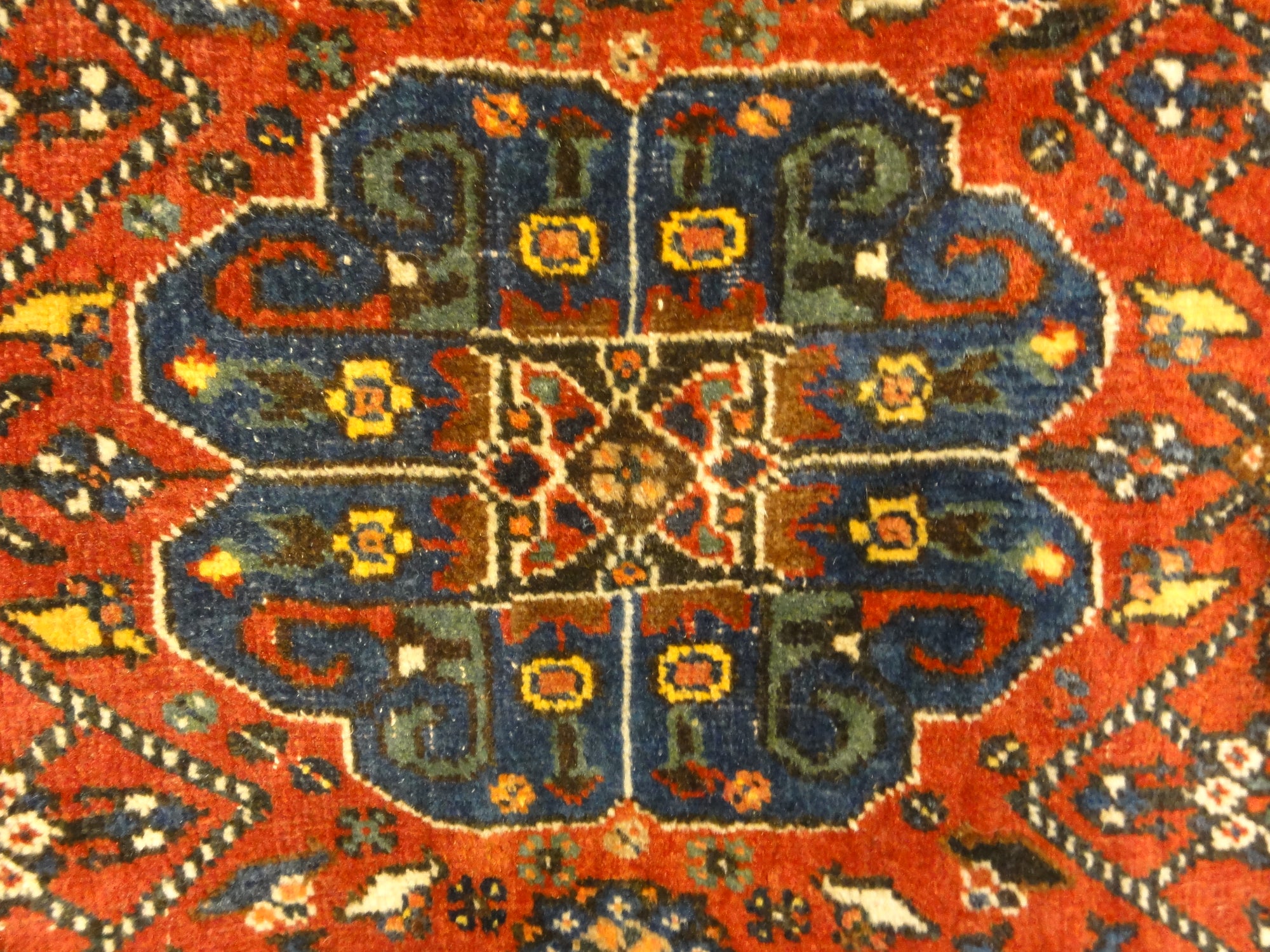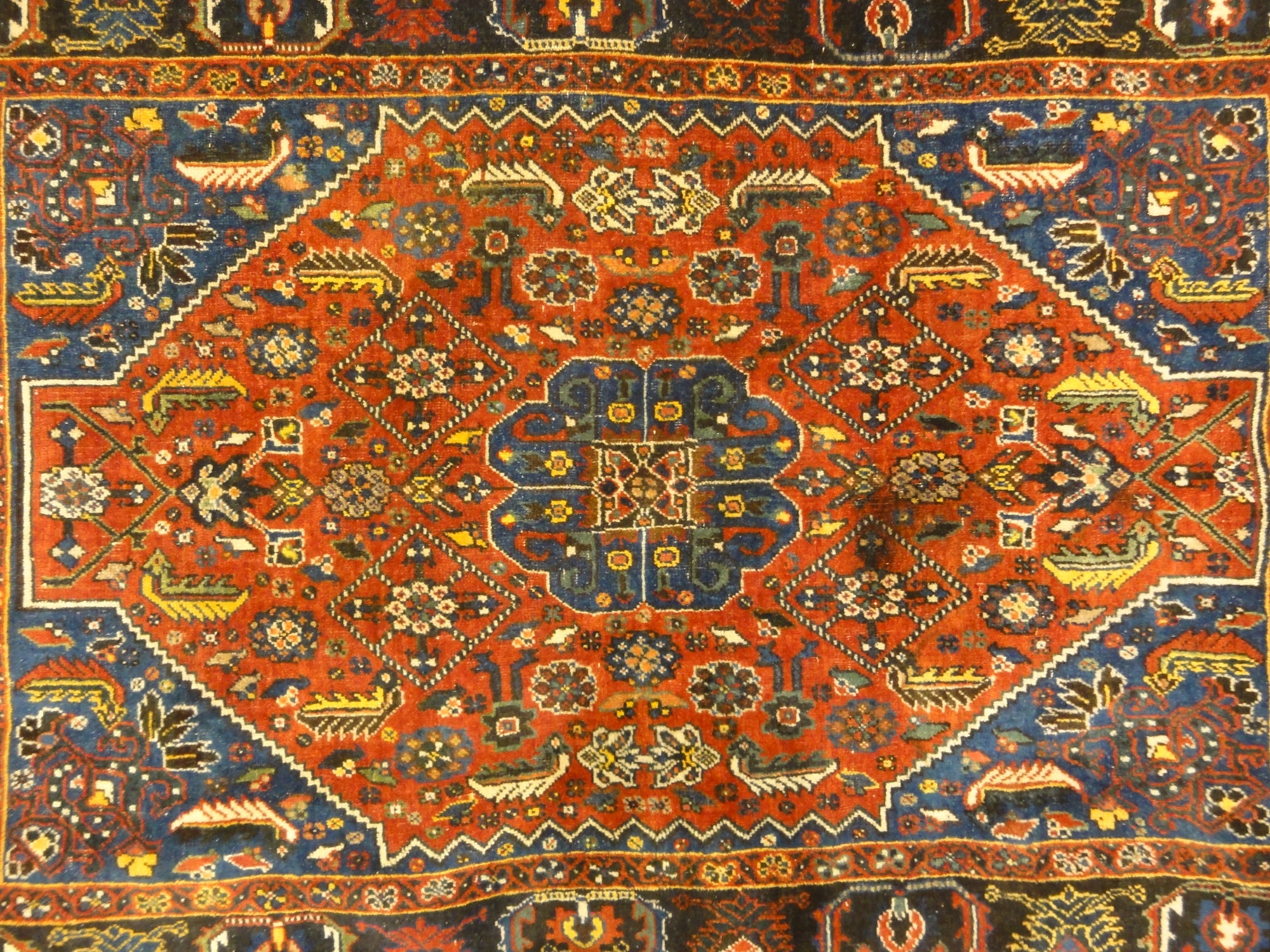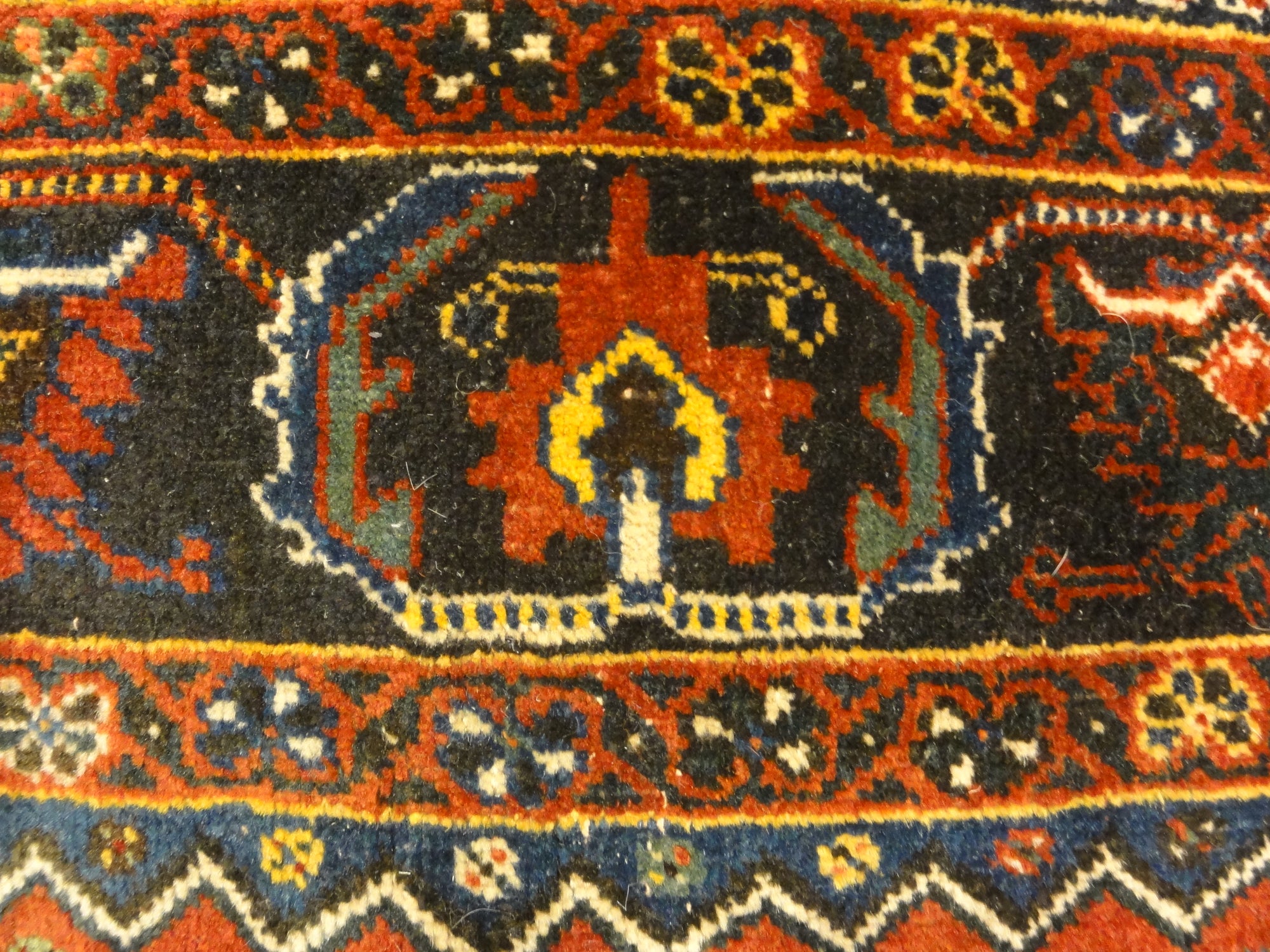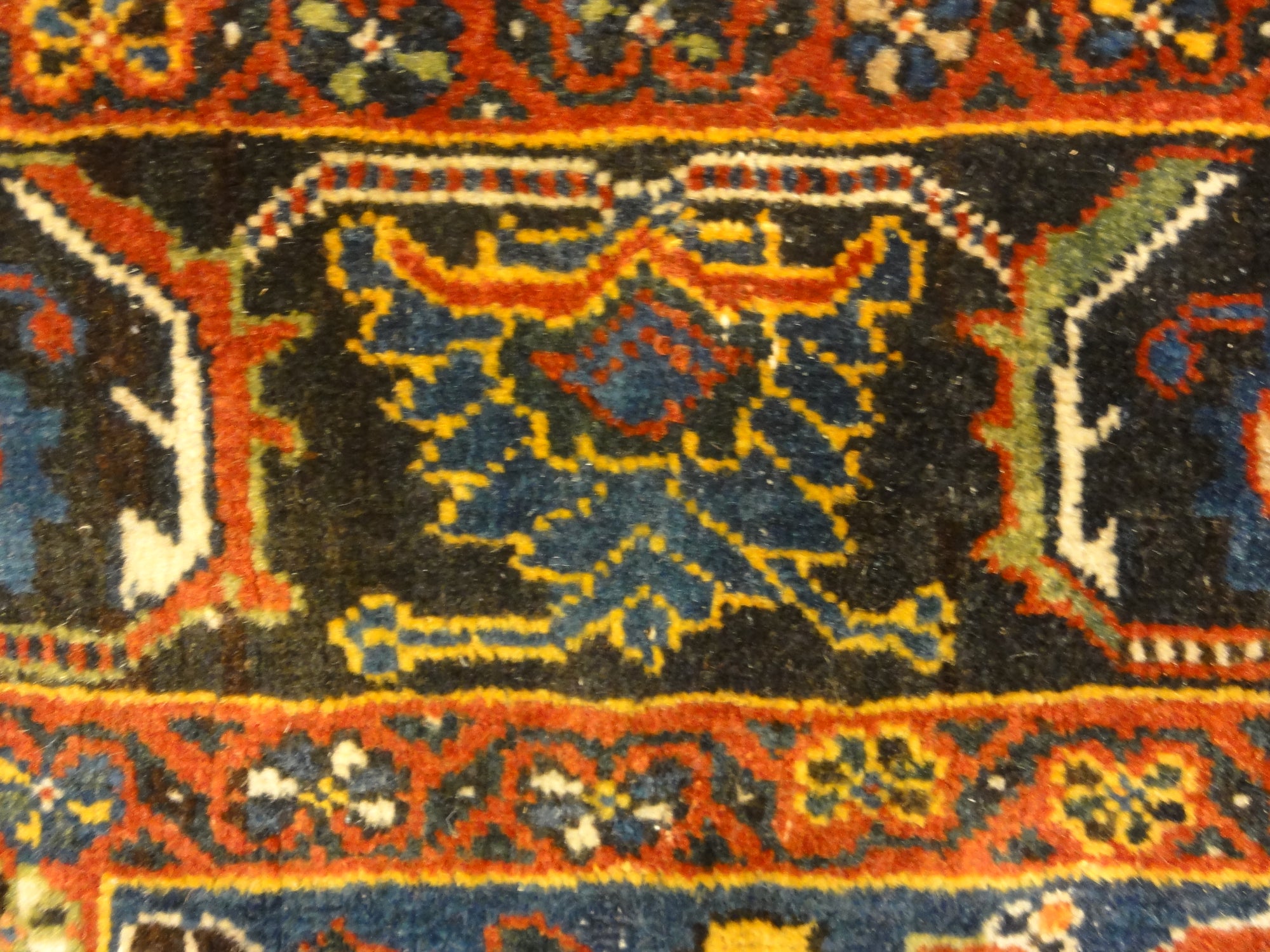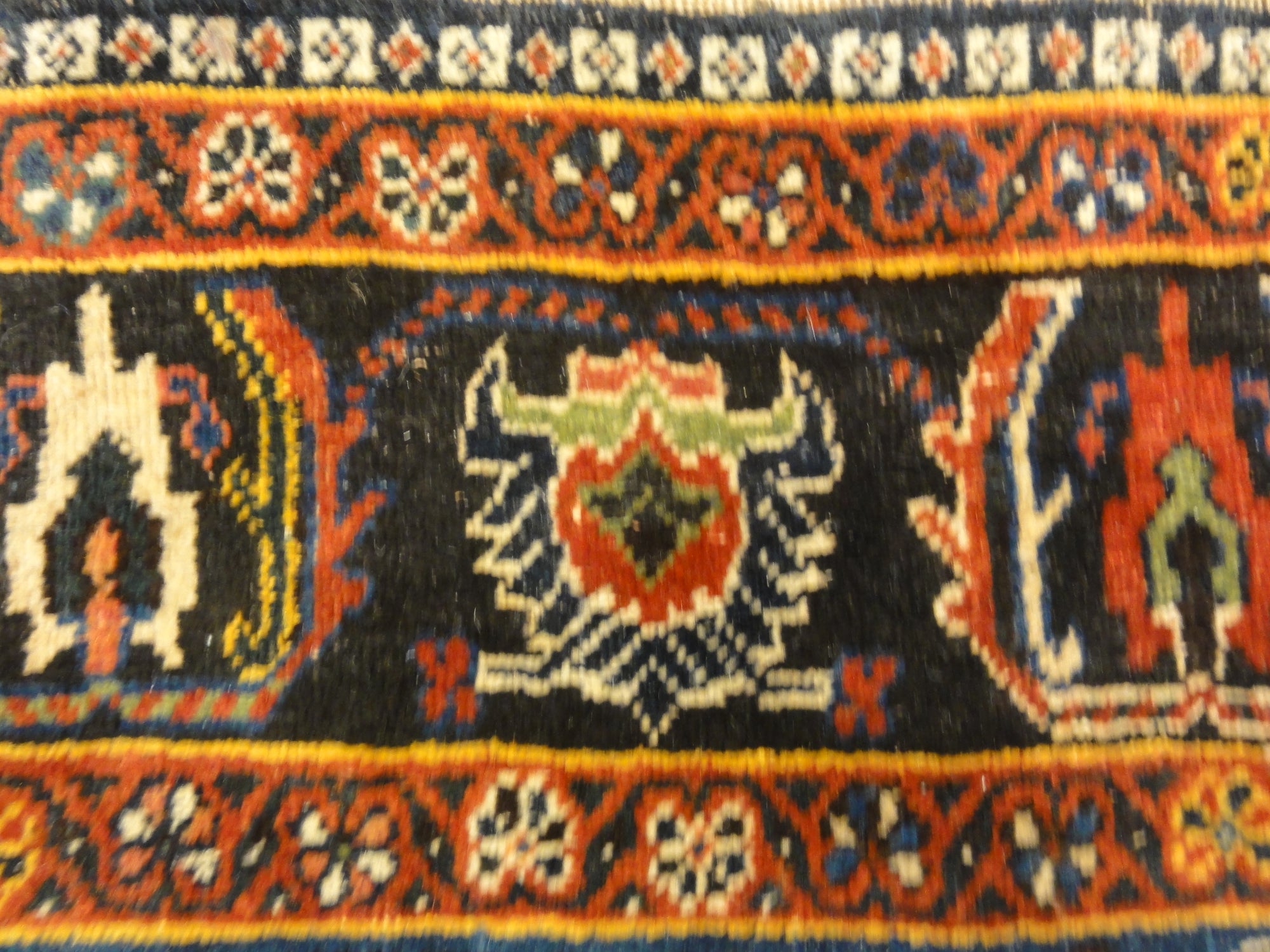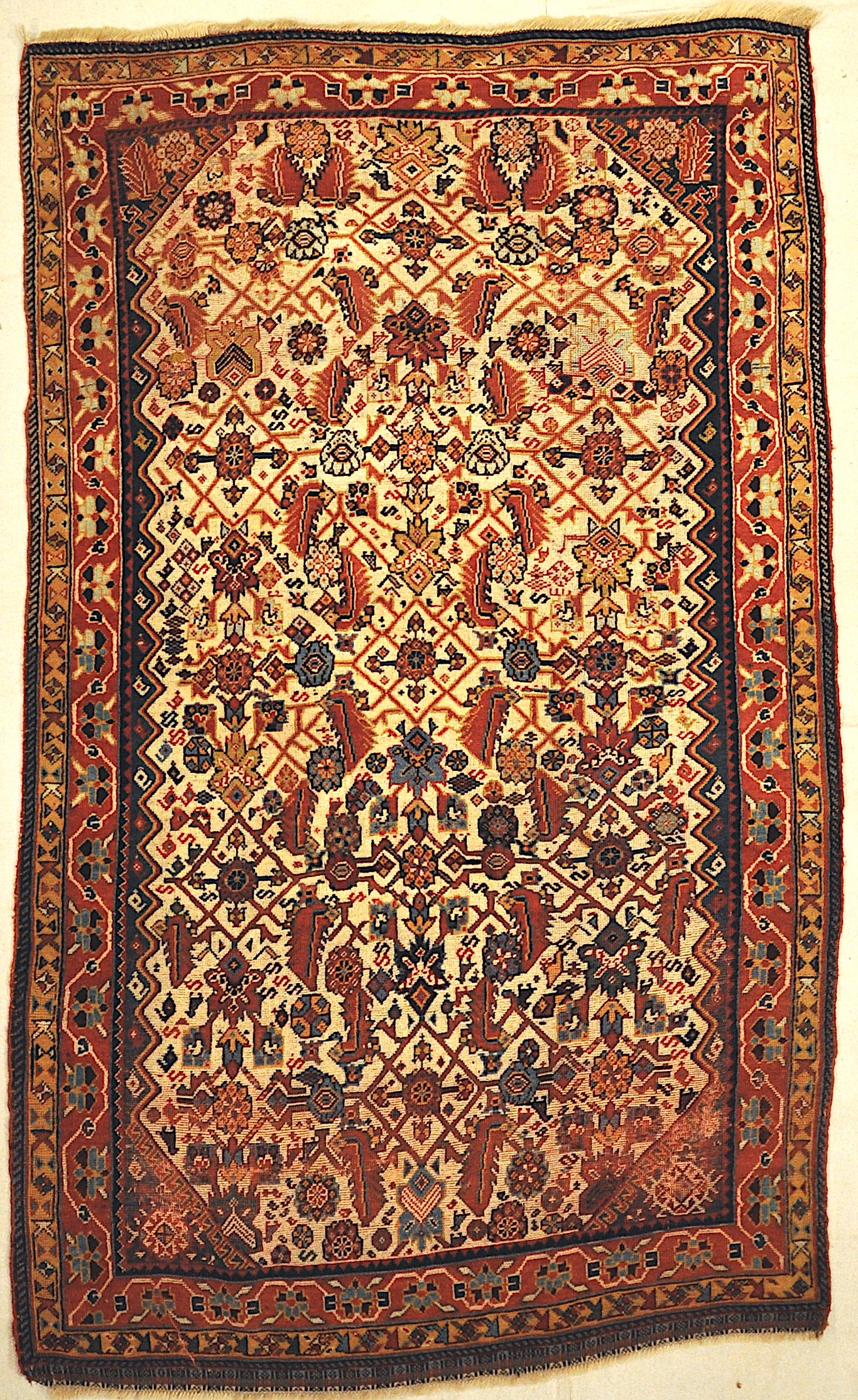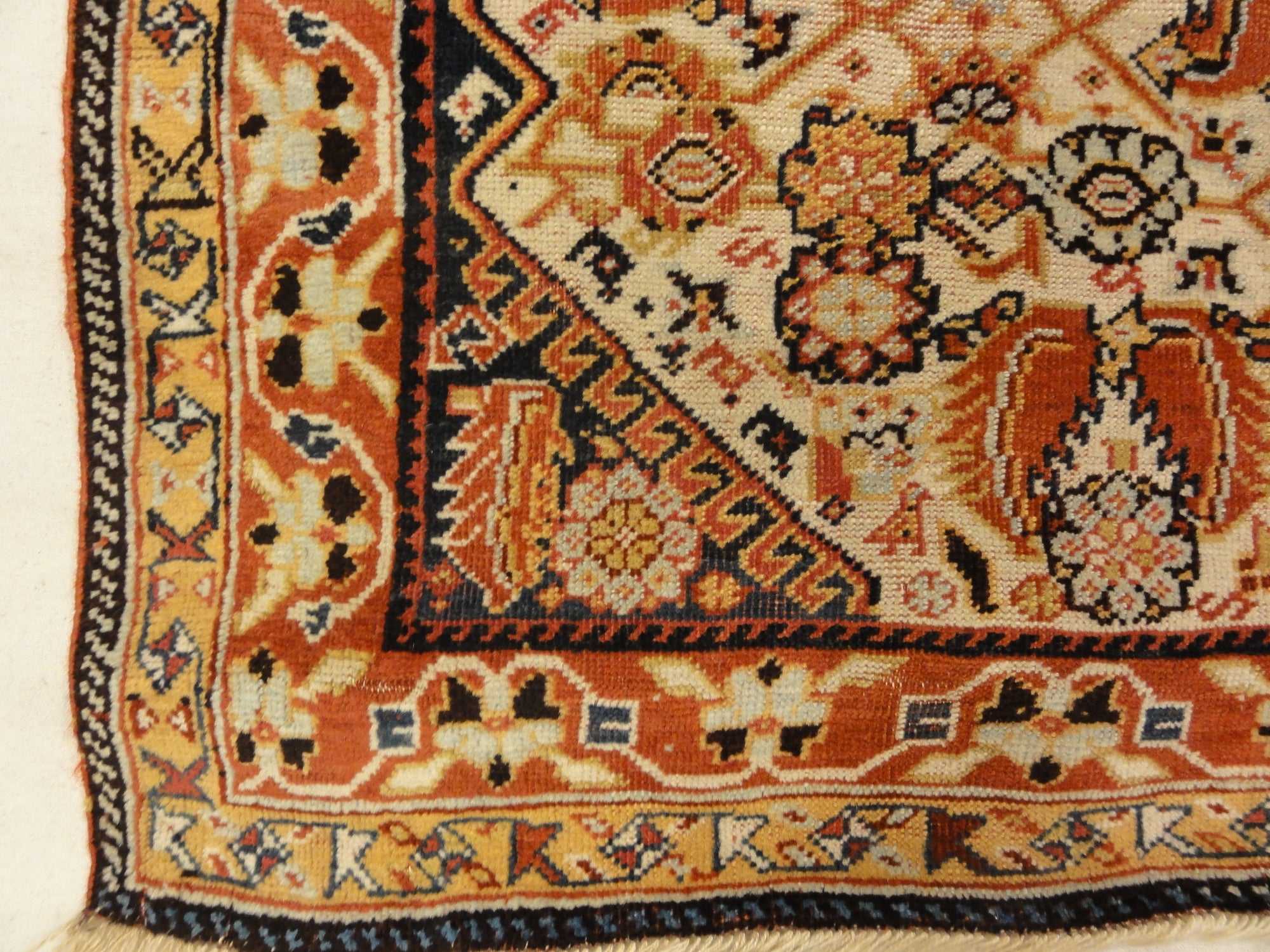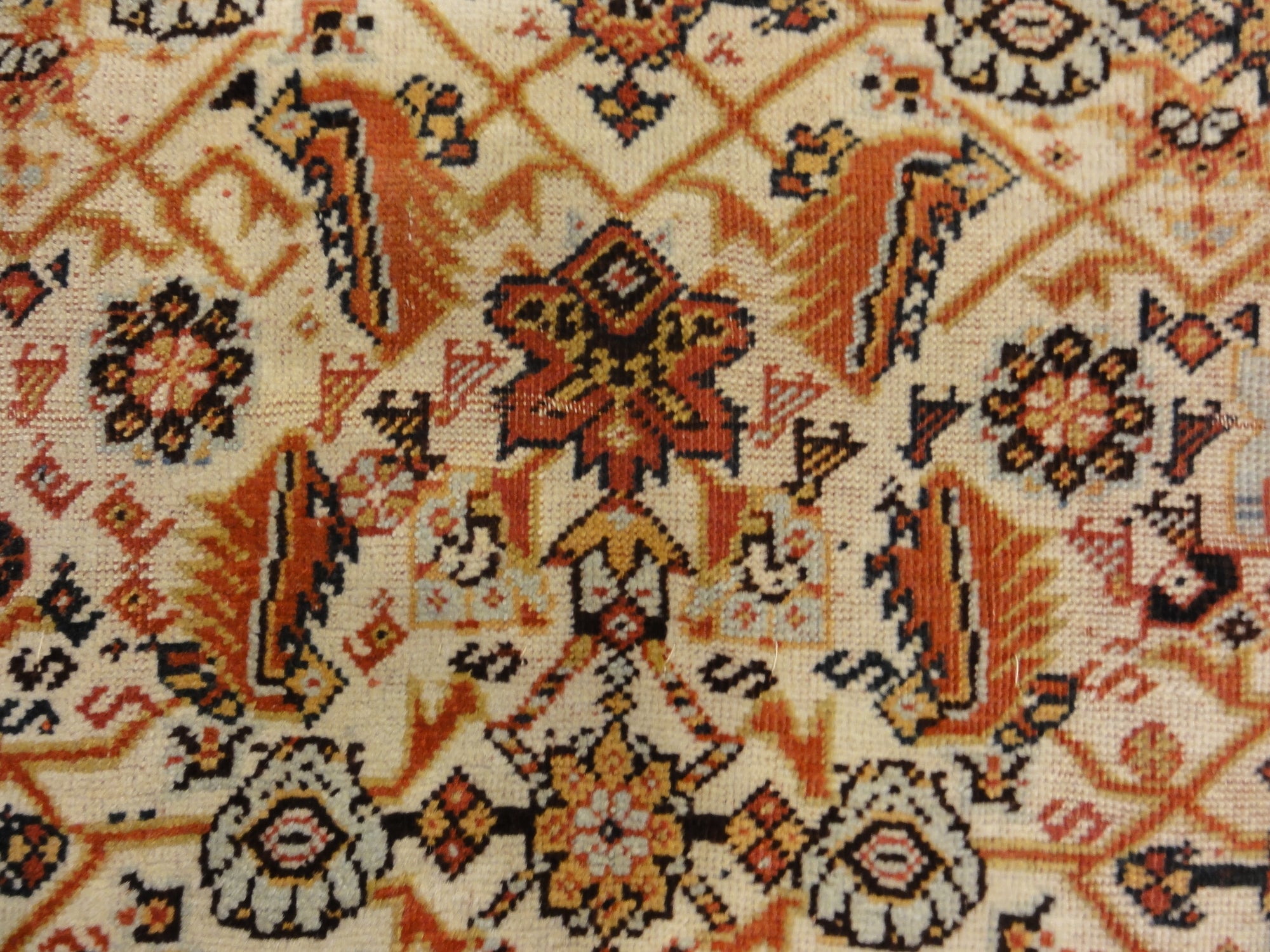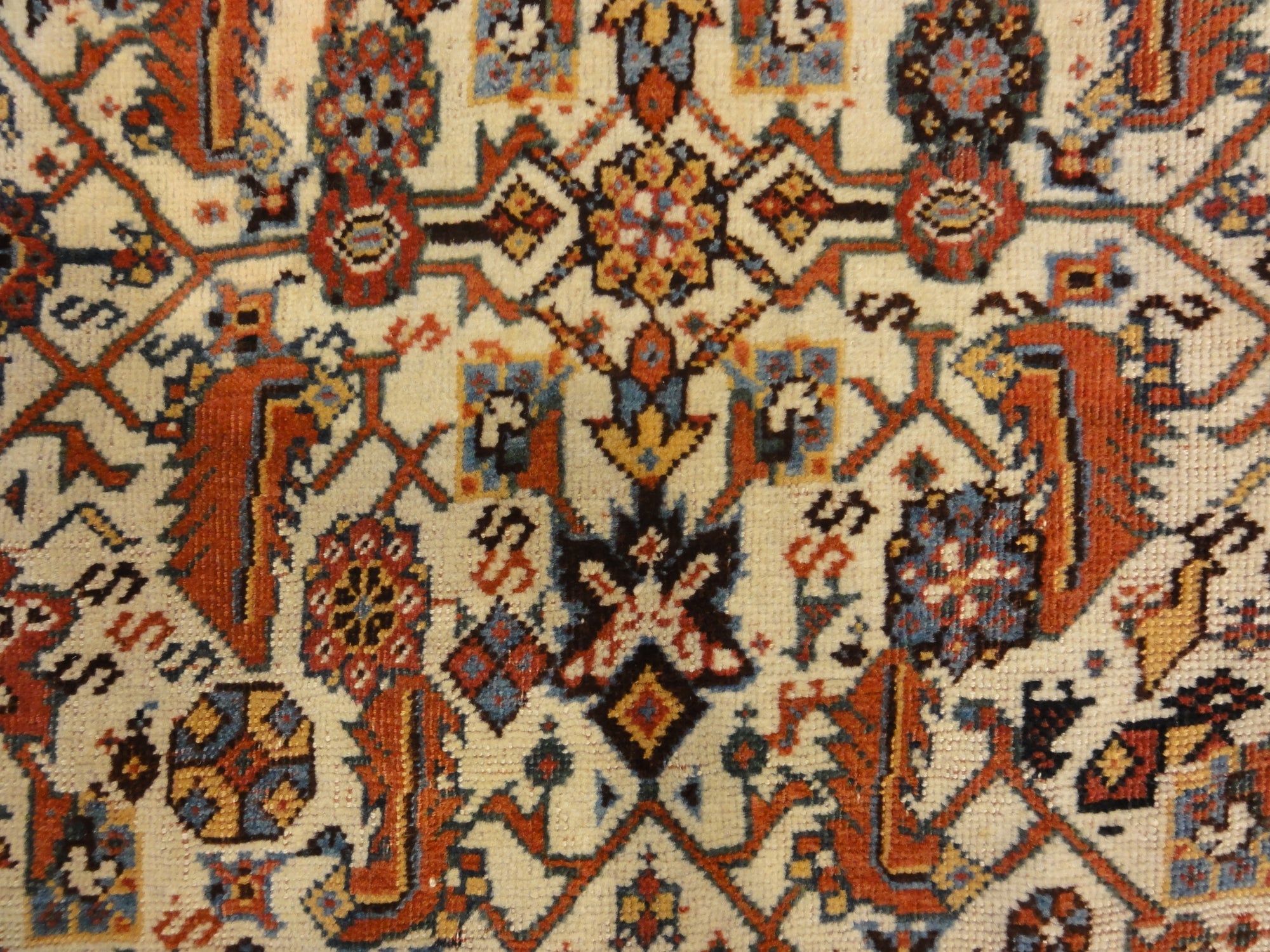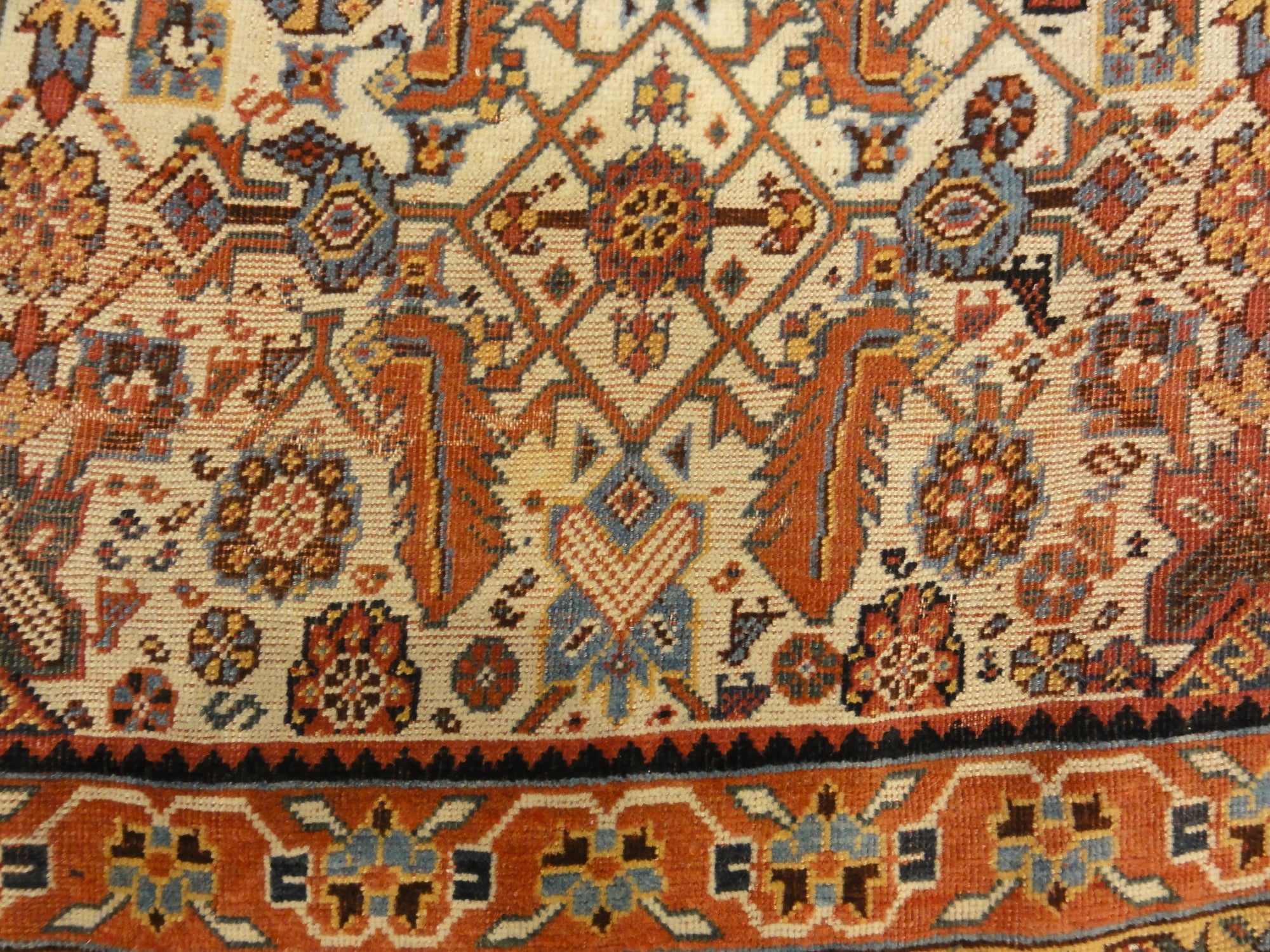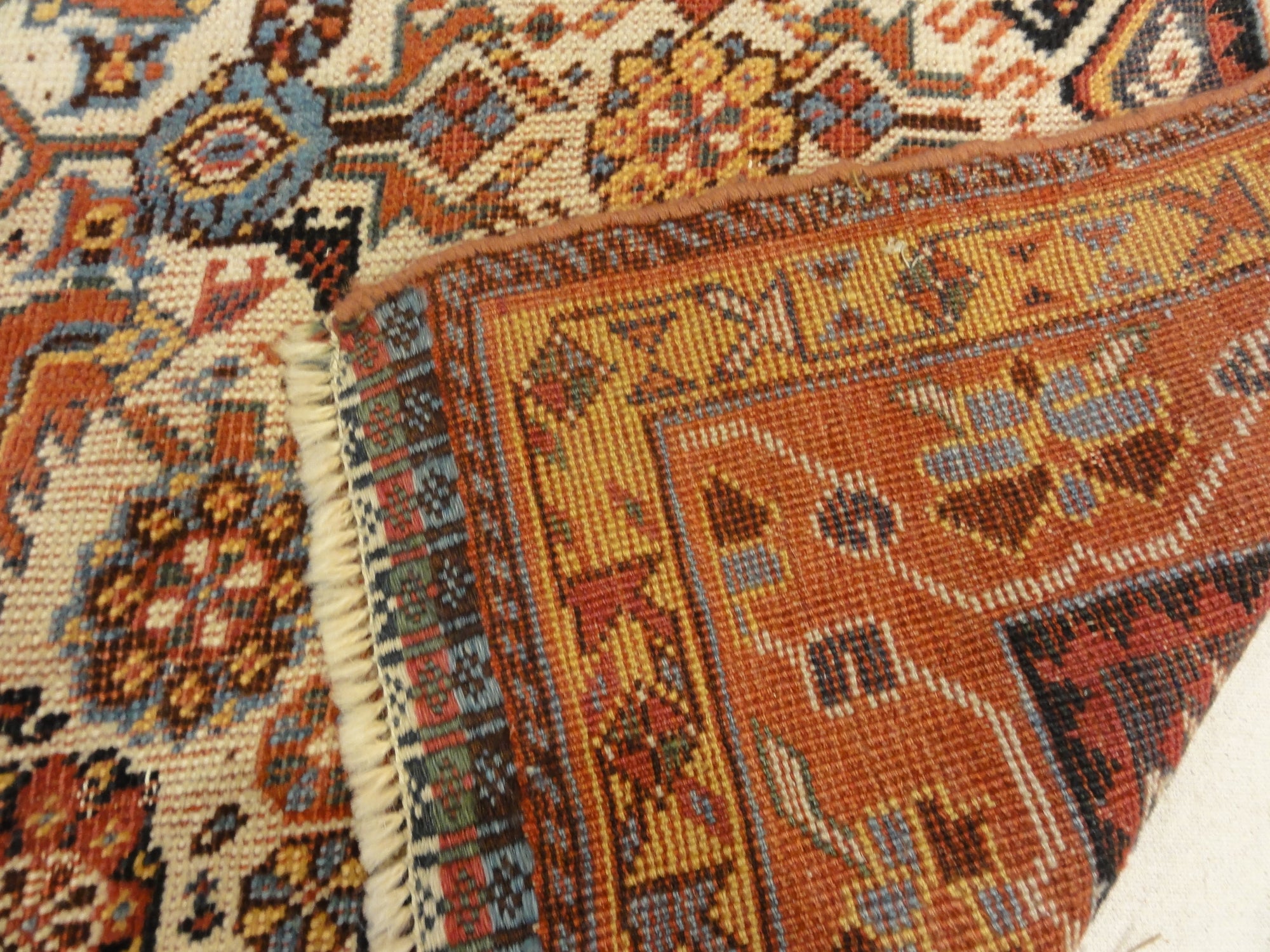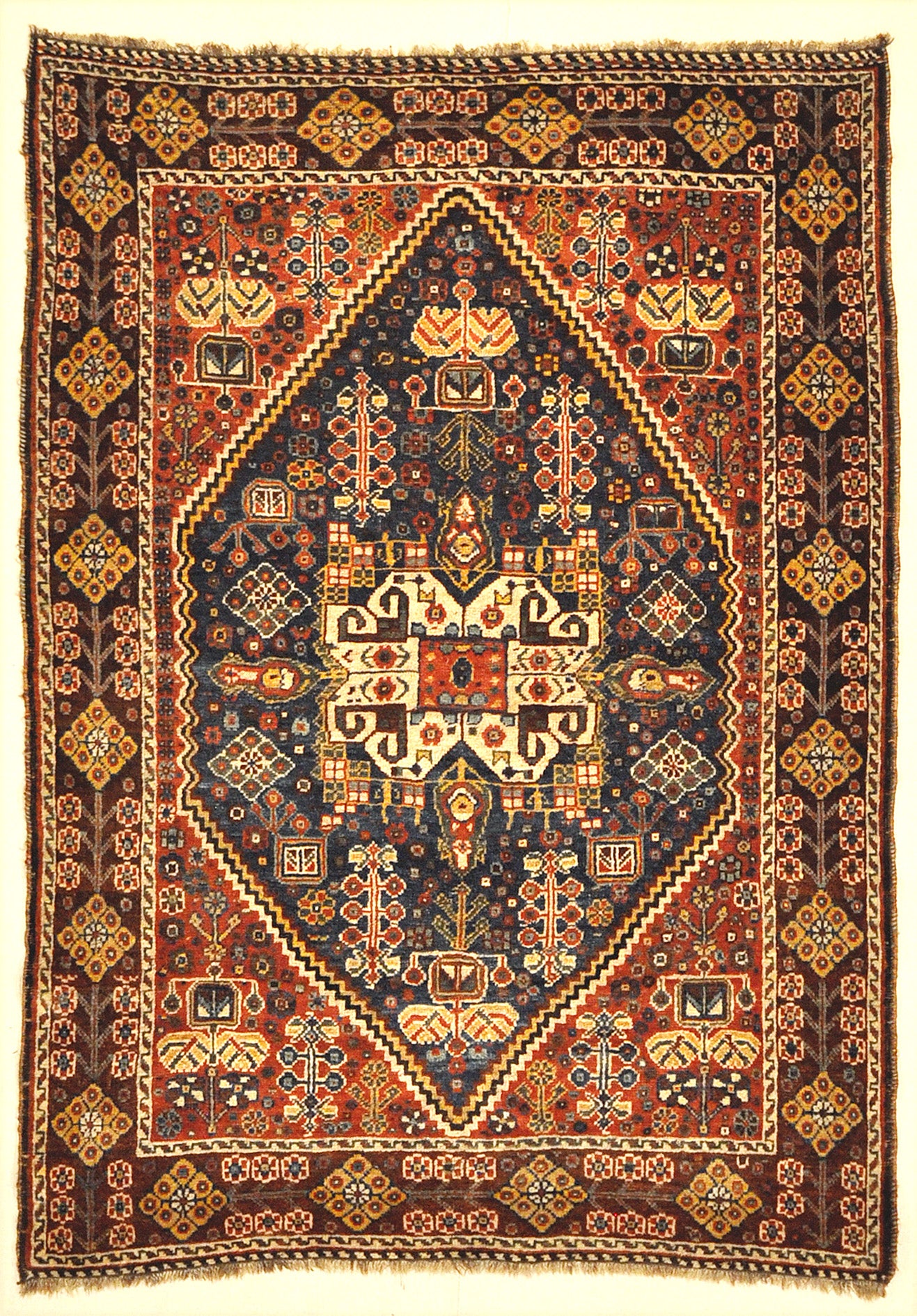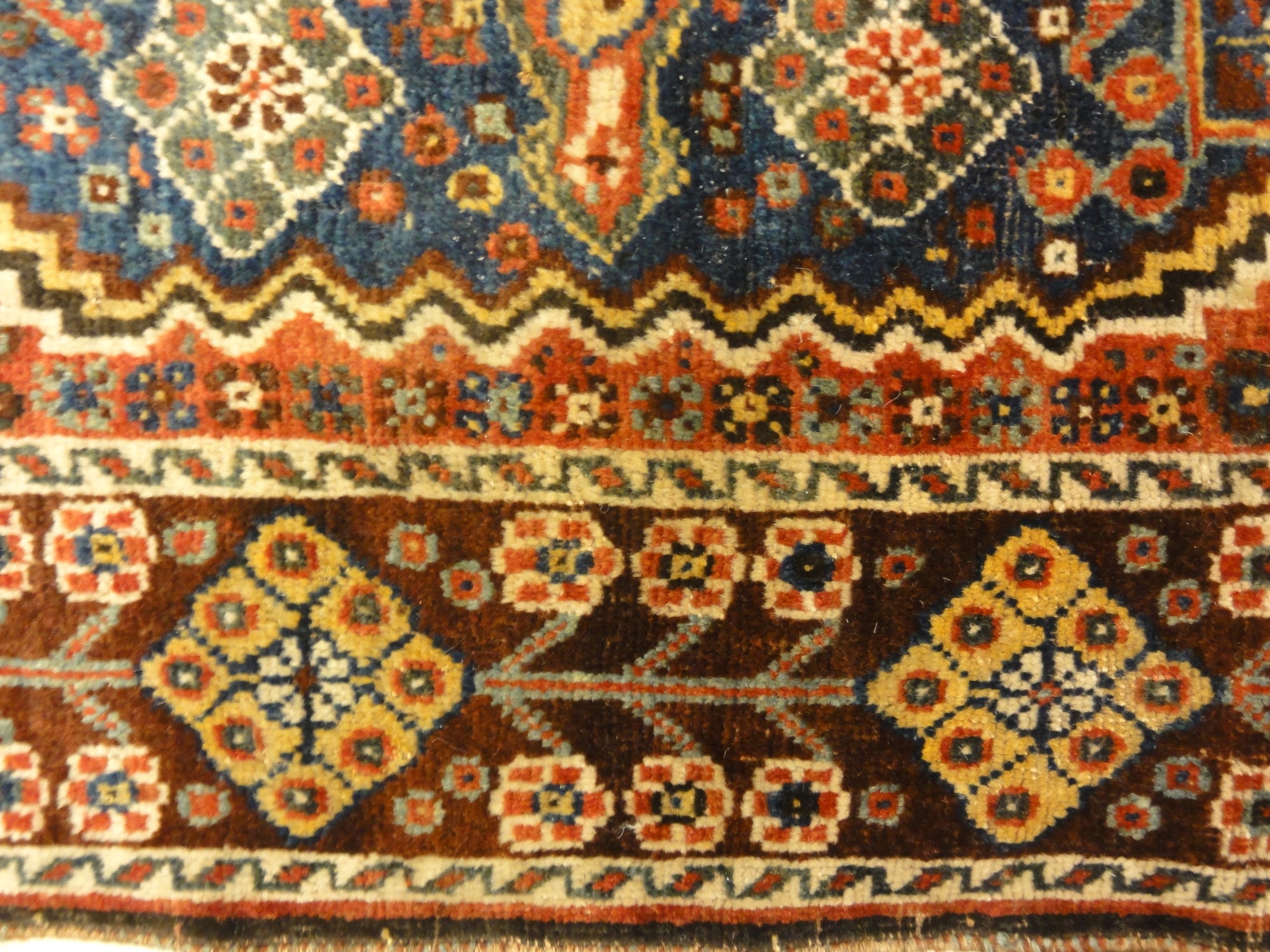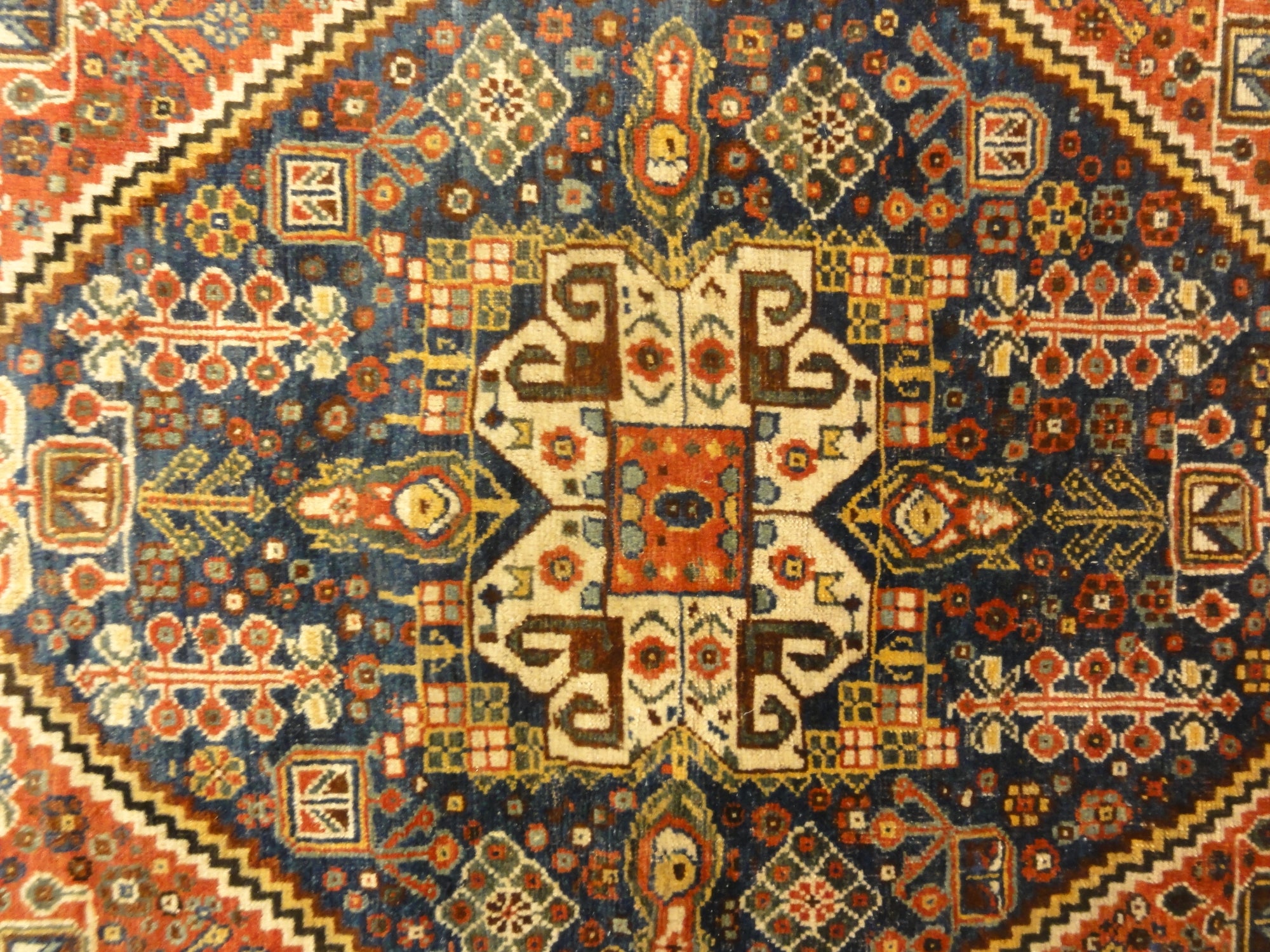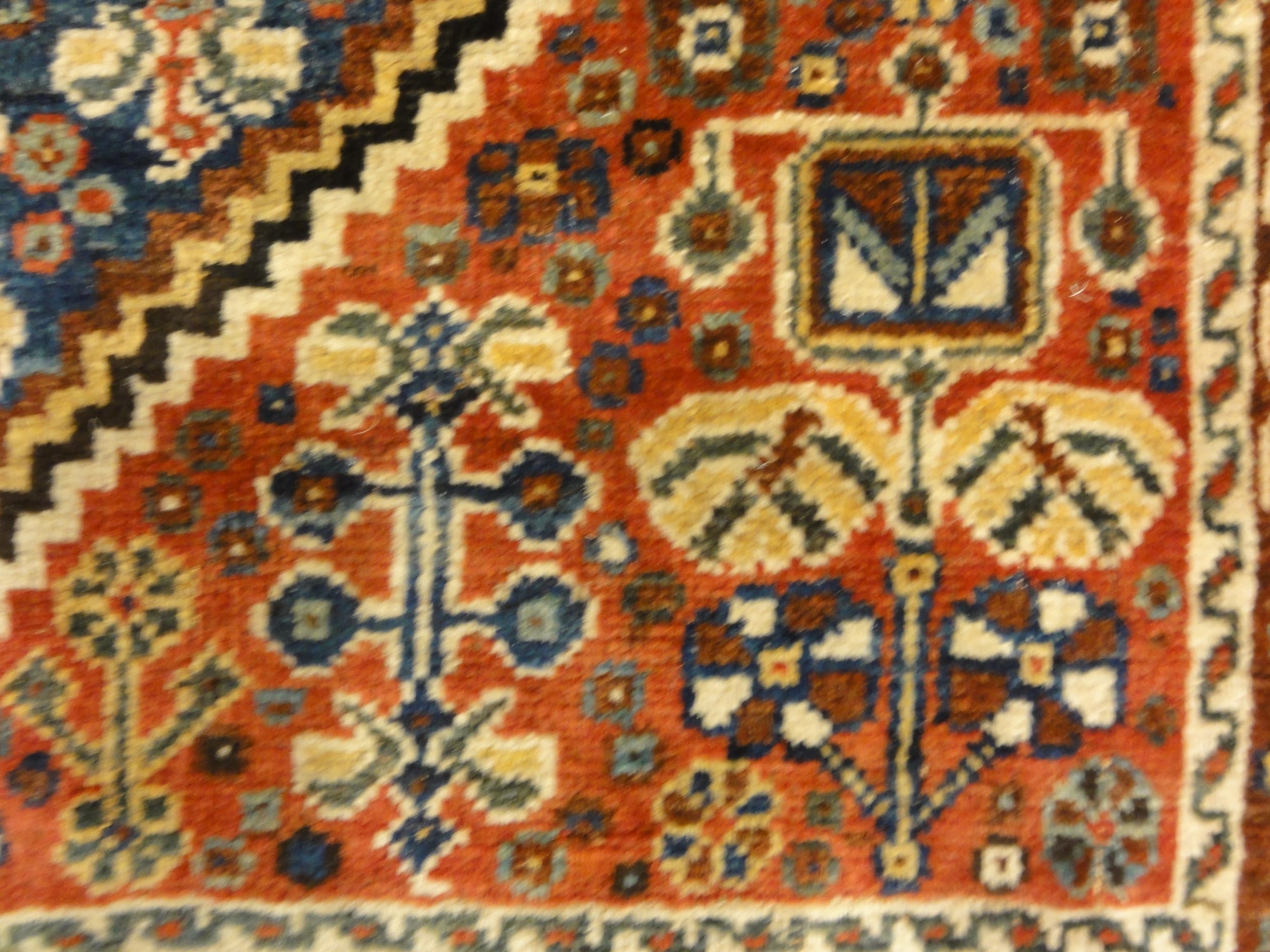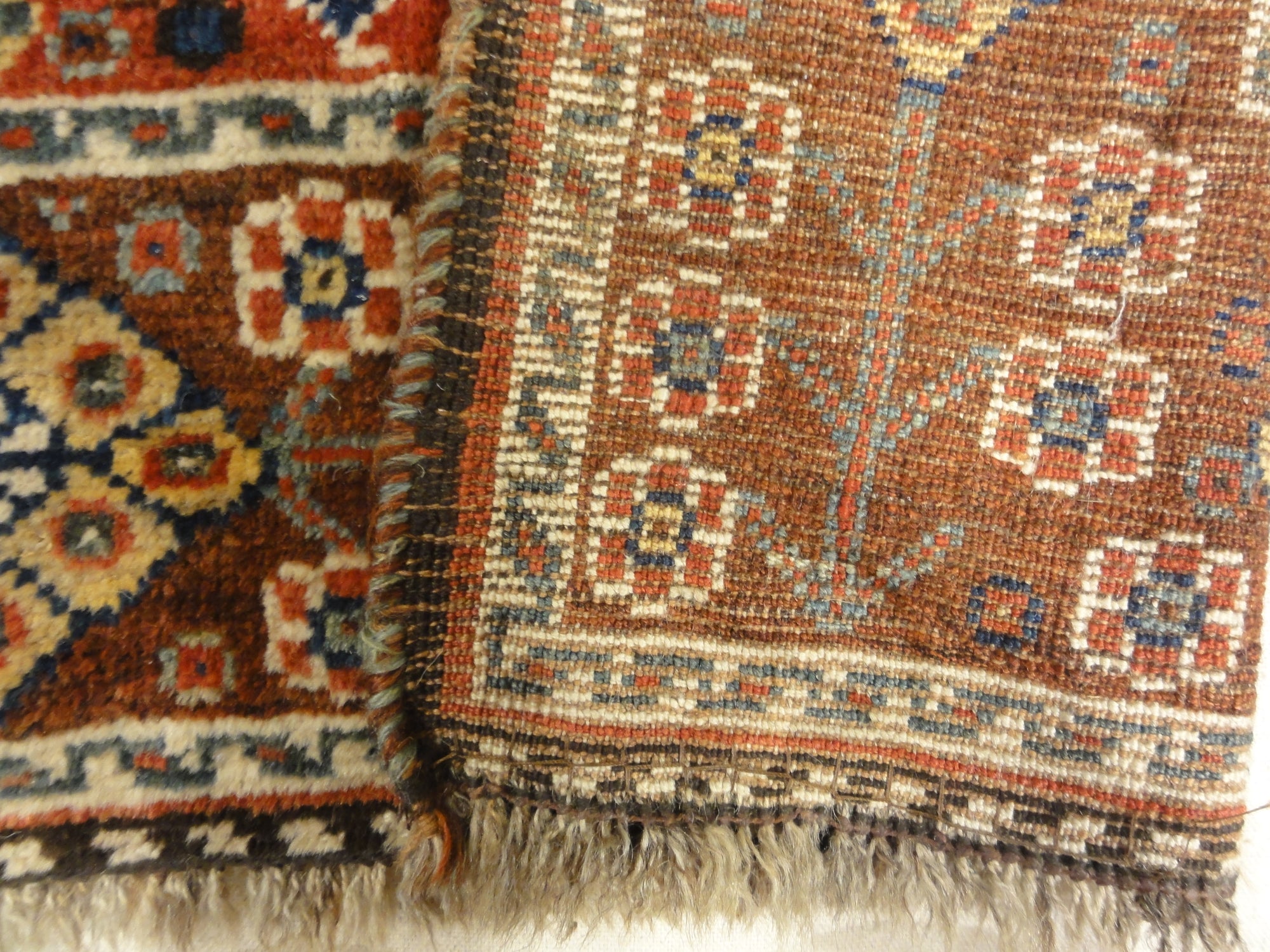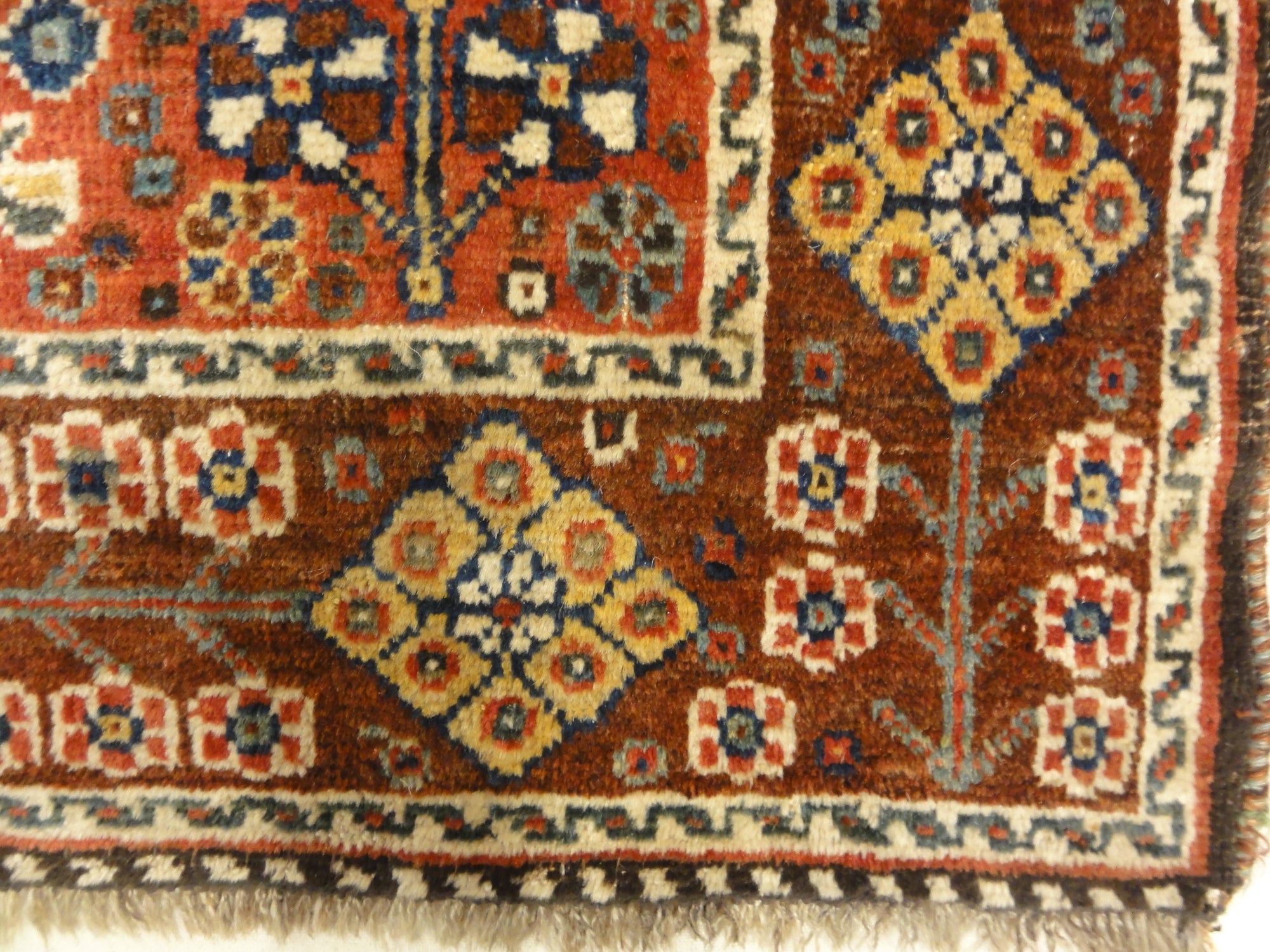
Although the Qashqai have never recorded their history in writing, they have passed it down through story and song for nearly a thousand years even through the Qashqai Rug. In their legends they claim to have come from Chinese Turkestan, sweeping across Afghanistan into Persia on the vanguard of the armies of Ghengis Khan. Once in Persia, the
Qashqai chose to live in the mountainous region of Azerbaijan, in the Caucasus, far to the north of their present southern Persian location. Early in the 16th century, the Qashqai relocated to the Fars province, their habitat over the past 400 years, probably under the subjugation of Shah Isma’il, who wanted to create a human buffer against the Portuguese, who threatened his Persian Gulf shore. A Qashgai tribeswoman will work on her own rug for a period of time, move over to the loom of her neighbor, and then to that of yet another friend, before returning to her own weaving. At the same time, another group of women scour the nearby countryside, gathering mountain herbs, barks, and berries to boil in their collective dyebath. Irrespective of their ethnic or cultural background, these weavers all descended from several generations of skilled weavers who passed their tradition down to their descendants. This continual interchange of creative energy, along with the deep spirit of interconnectedness of a people engaging together in simple physical activity, undoubtedly is a key element in Qashqai antique rug weaving.
Antique Persian Qashqai rugs (sometimes spelled Ghashghai, Kashgai, or other variations) are beautiful and intricate, Tribal pile rugs. Because of this diverse history, influences from many regions are apparent in their carpets. Discerning viewers may recognize similarities to the artistic styles of the Turkmen people, Caucasians, and other tribes that live near them today. Designs in the fields of these rugs feature many different images. Medallions, geometric shapes, and abstract patterns are common, but so are recognizable objects. The Qashqai people did not write down their history or stories, but would often weave them into their rugs. The antique Persian Qashqai rugs are said to tell tales and record their daily lives. They frequently depict people and animals, but also common household objects, including combs, trees, flowers, and possessions. These Persian tribal rugs are created on vertical looms by making thousands of knots. Qashqai rugs average 70 to 170 knots per square inch according to Stone. Traditional Qashqai rugs have all wool construction including wool wefts and warps. The wool used in weaving tradition Qashqai rugs are usually of superior quality and hard wearing, which shows in the higher quality and longer lasting quality of the finished rug. The carpets are woven having asymmetric knots and the finished piece will usually feature deeply depressed warps with red-dyed wefts and a fine weave. Newer village pieces may have cotton wefts and are generally more coarsely woven. The quality of a rug can be judged, in part, based on the density of the knots used to weave the carpet. The nomadic lifestyle of the Qashqai tribe meant that they required durable and good-quality rugs. This is why authentic antique Persian Qashqai rugs are made from hard-wearing wool and cotton. Although they are soft to the touch, these rugs do not feature a deep, overly thick pile. This is one reason why the Persian Qashqai rugs are highly sought after by modern home-owners who want durable rugs for high-traffic areas. Antique Qashqai rugs will typically feature dark reds, saffron golds, and rich blues. These jewel tone rug colors were available to the ancient tribes with vegetable-based dyes, and today they are still often incorporated into the design despite the availability of a wider range of dyes. This is both a tribute to their past and a sign that Qashqai weavers refuse to sacrifice quality for easy-to-use synthetic dyes. Traditionally, the Qashqai tribes wove the designs into the antique rugs from memory, without the help of a pattern to copy. Many Persian Qashqai rugs also used to feature multiple borders, since this allows the weaver to incorporate even more colors and designs. Today, it is possible to find Qashqai area rugs and runners. These vary in size, but tend to be approximately four feet to nine feet long and four feet to six feet wide. Most rugs made by the Qashqai weavers were medium sized, although you will see them in different sizes too. The Qashqai carpet continues to hold a special place in the world of oriental rugs, as it expresses a superlative level of both craftsmanship and creative inspiration. And it is no wonder, when two elements remain central in Qashqai culture – “il rah,” the tribal road, and their joyous weaving. As the Qashqai say – “Where I am is my carpet. Where my carpet and I am is my home.”
 Although the Qashqai have never recorded their history in writing, they have passed it down through story and song for nearly a thousand years even through the Qashqai Rug. In their legends they claim to have come from Chinese Turkestan, sweeping across Afghanistan into Persia on the vanguard of the armies of Ghengis Khan. Once in Persia, the Qashqai chose to live in the mountainous region of Azerbaijan, in the Caucasus, far to the north of their present southern Persian location. Early in the 16th century, the Qashqai relocated to the Fars province, their habitat over the past 400 years, probably under the subjugation of Shah Isma’il, who wanted to create a human buffer against the Portuguese, who threatened his Persian Gulf shore. A Qashgai tribeswoman will work on her own rug for a period of time, move over to the loom of her neighbor, and then to that of yet another friend, before returning to her own weaving. At the same time, another group of women scour the nearby countryside, gathering mountain herbs, barks, and berries to boil in their collective dyebath. Irrespective of their ethnic or cultural background, these weavers all descended from several generations of skilled weavers who passed their tradition down to their descendants. This continual interchange of creative energy, along with the deep spirit of interconnectedness of a people engaging together in simple physical activity, undoubtedly is a key element in Qashqai antique rug weaving.
Antique Persian Qashqai rugs (sometimes spelled Ghashghai, Kashgai, or other variations) are beautiful and intricate, Tribal pile rugs. Because of this diverse history, influences from many regions are apparent in their carpets. Discerning viewers may recognize similarities to the artistic styles of the Turkmen people, Caucasians, and other tribes that live near them today. Designs in the fields of these rugs feature many different images. Medallions, geometric shapes, and abstract patterns are common, but so are recognizable objects. The Qashqai people did not write down their history or stories, but would often weave them into their rugs. The antique Persian Qashqai rugs are said to tell tales and record their daily lives. They frequently depict people and animals, but also common household objects, including combs, trees, flowers, and possessions. These Persian tribal rugs are created on vertical looms by making thousands of knots. Qashqai rugs average 70 to 170 knots per square inch according to Stone. Traditional Qashqai rugs have all wool construction including wool wefts and warps. The wool used in weaving tradition Qashqai rugs are usually of superior quality and hard wearing, which shows in the higher quality and longer lasting quality of the finished rug. The carpets are woven having asymmetric knots and the finished piece will usually feature deeply depressed warps with red-dyed wefts and a fine weave. Newer village pieces may have cotton wefts and are generally more coarsely woven. The quality of a rug can be judged, in part, based on the density of the knots used to weave the carpet. The nomadic lifestyle of the Qashqai tribe meant that they required durable and good-quality rugs. This is why authentic antique Persian Qashqai rugs are made from hard-wearing wool and cotton. Although they are soft to the touch, these rugs do not feature a deep, overly thick pile. This is one reason why the Persian Qashqai rugs are highly sought after by modern home-owners who want durable rugs for high-traffic areas. Antique Qashqai rugs will typically feature dark reds, saffron golds, and rich blues. These jewel tone rug colors were available to the ancient tribes with vegetable-based dyes, and today they are still often incorporated into the design despite the availability of a wider range of dyes. This is both a tribute to their past and a sign that Qashqai weavers refuse to sacrifice quality for easy-to-use synthetic dyes. Traditionally, the Qashqai tribes wove the designs into the antique rugs from memory, without the help of a pattern to copy. Many Persian Qashqai rugs also used to feature multiple borders, since this allows the weaver to incorporate even more colors and designs. Today, it is possible to find Qashqai area rugs and runners. These vary in size, but tend to be approximately four feet to nine feet long and four feet to six feet wide. Most rugs made by the Qashqai weavers were medium sized, although you will see them in different sizes too. The Qashqai carpet continues to hold a special place in the world of oriental rugs, as it expresses a superlative level of both craftsmanship and creative inspiration. And it is no wonder, when two elements remain central in Qashqai culture – “il rah,” the tribal road, and their joyous weaving. As the Qashqai say – “Where I am is my carpet. Where my carpet and I am is my home.”
Although the Qashqai have never recorded their history in writing, they have passed it down through story and song for nearly a thousand years even through the Qashqai Rug. In their legends they claim to have come from Chinese Turkestan, sweeping across Afghanistan into Persia on the vanguard of the armies of Ghengis Khan. Once in Persia, the Qashqai chose to live in the mountainous region of Azerbaijan, in the Caucasus, far to the north of their present southern Persian location. Early in the 16th century, the Qashqai relocated to the Fars province, their habitat over the past 400 years, probably under the subjugation of Shah Isma’il, who wanted to create a human buffer against the Portuguese, who threatened his Persian Gulf shore. A Qashgai tribeswoman will work on her own rug for a period of time, move over to the loom of her neighbor, and then to that of yet another friend, before returning to her own weaving. At the same time, another group of women scour the nearby countryside, gathering mountain herbs, barks, and berries to boil in their collective dyebath. Irrespective of their ethnic or cultural background, these weavers all descended from several generations of skilled weavers who passed their tradition down to their descendants. This continual interchange of creative energy, along with the deep spirit of interconnectedness of a people engaging together in simple physical activity, undoubtedly is a key element in Qashqai antique rug weaving.
Antique Persian Qashqai rugs (sometimes spelled Ghashghai, Kashgai, or other variations) are beautiful and intricate, Tribal pile rugs. Because of this diverse history, influences from many regions are apparent in their carpets. Discerning viewers may recognize similarities to the artistic styles of the Turkmen people, Caucasians, and other tribes that live near them today. Designs in the fields of these rugs feature many different images. Medallions, geometric shapes, and abstract patterns are common, but so are recognizable objects. The Qashqai people did not write down their history or stories, but would often weave them into their rugs. The antique Persian Qashqai rugs are said to tell tales and record their daily lives. They frequently depict people and animals, but also common household objects, including combs, trees, flowers, and possessions. These Persian tribal rugs are created on vertical looms by making thousands of knots. Qashqai rugs average 70 to 170 knots per square inch according to Stone. Traditional Qashqai rugs have all wool construction including wool wefts and warps. The wool used in weaving tradition Qashqai rugs are usually of superior quality and hard wearing, which shows in the higher quality and longer lasting quality of the finished rug. The carpets are woven having asymmetric knots and the finished piece will usually feature deeply depressed warps with red-dyed wefts and a fine weave. Newer village pieces may have cotton wefts and are generally more coarsely woven. The quality of a rug can be judged, in part, based on the density of the knots used to weave the carpet. The nomadic lifestyle of the Qashqai tribe meant that they required durable and good-quality rugs. This is why authentic antique Persian Qashqai rugs are made from hard-wearing wool and cotton. Although they are soft to the touch, these rugs do not feature a deep, overly thick pile. This is one reason why the Persian Qashqai rugs are highly sought after by modern home-owners who want durable rugs for high-traffic areas. Antique Qashqai rugs will typically feature dark reds, saffron golds, and rich blues. These jewel tone rug colors were available to the ancient tribes with vegetable-based dyes, and today they are still often incorporated into the design despite the availability of a wider range of dyes. This is both a tribute to their past and a sign that Qashqai weavers refuse to sacrifice quality for easy-to-use synthetic dyes. Traditionally, the Qashqai tribes wove the designs into the antique rugs from memory, without the help of a pattern to copy. Many Persian Qashqai rugs also used to feature multiple borders, since this allows the weaver to incorporate even more colors and designs. Today, it is possible to find Qashqai area rugs and runners. These vary in size, but tend to be approximately four feet to nine feet long and four feet to six feet wide. Most rugs made by the Qashqai weavers were medium sized, although you will see them in different sizes too. The Qashqai carpet continues to hold a special place in the world of oriental rugs, as it expresses a superlative level of both craftsmanship and creative inspiration. And it is no wonder, when two elements remain central in Qashqai culture – “il rah,” the tribal road, and their joyous weaving. As the Qashqai say – “Where I am is my carpet. Where my carpet and I am is my home.”

